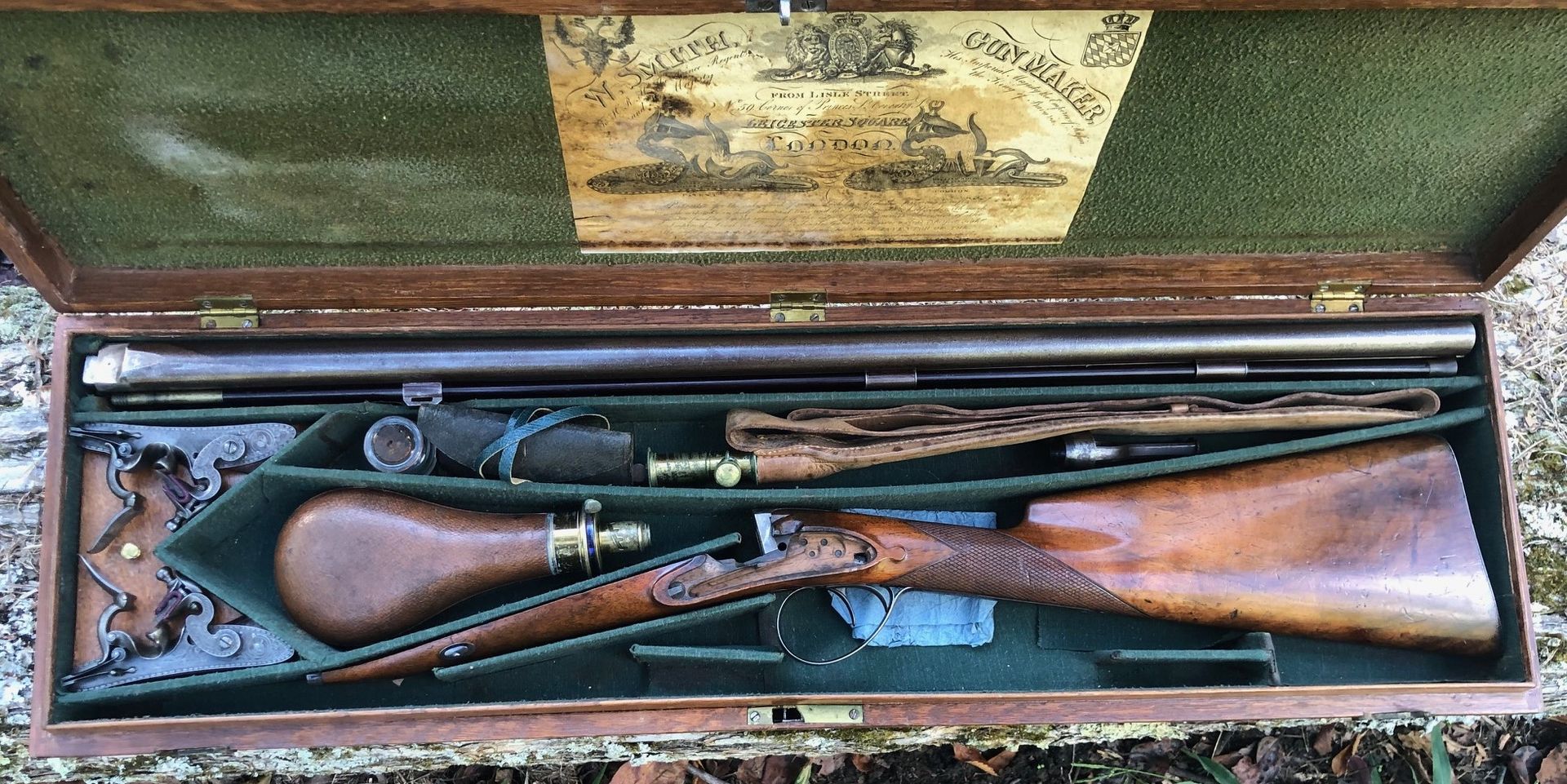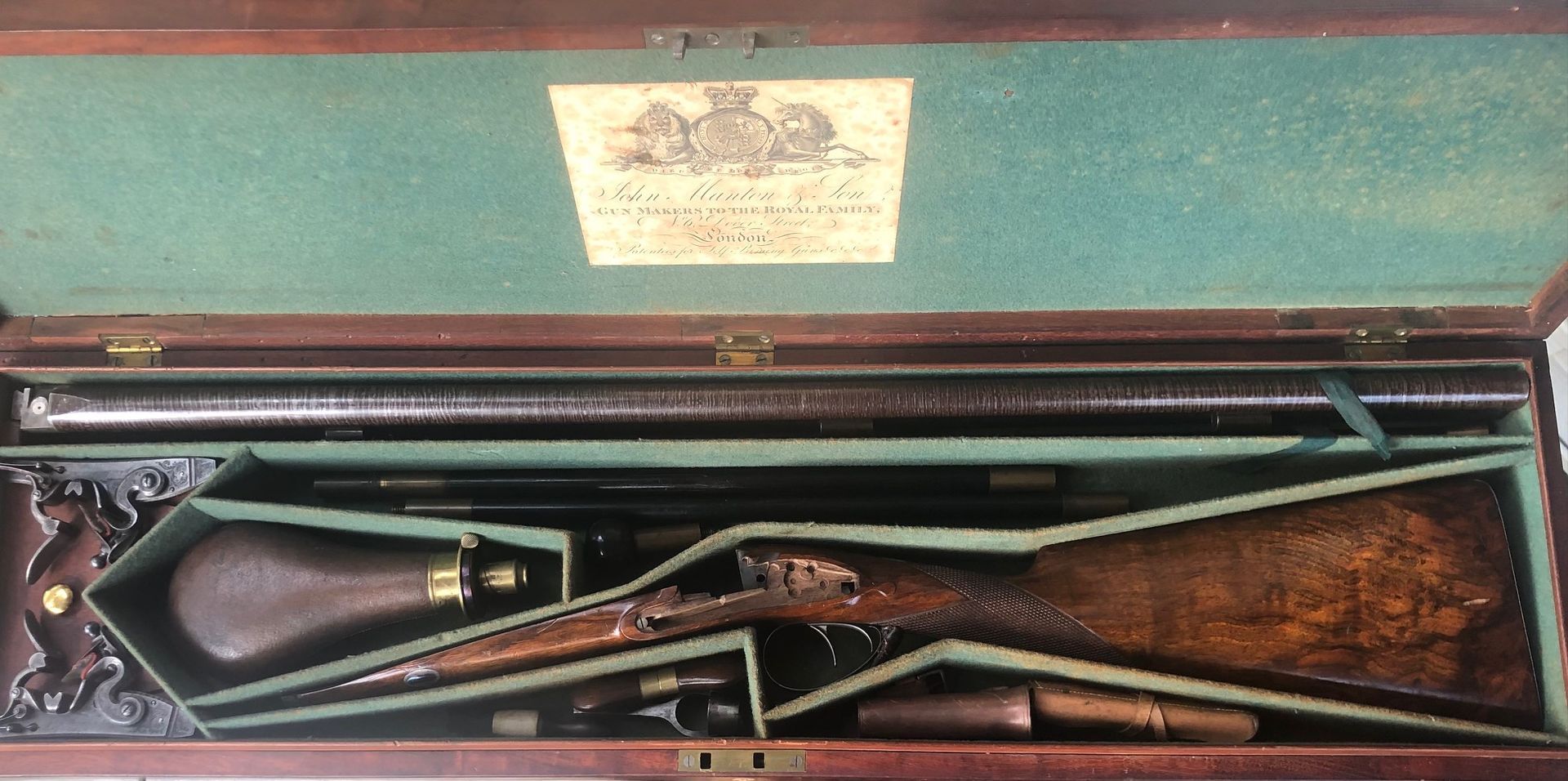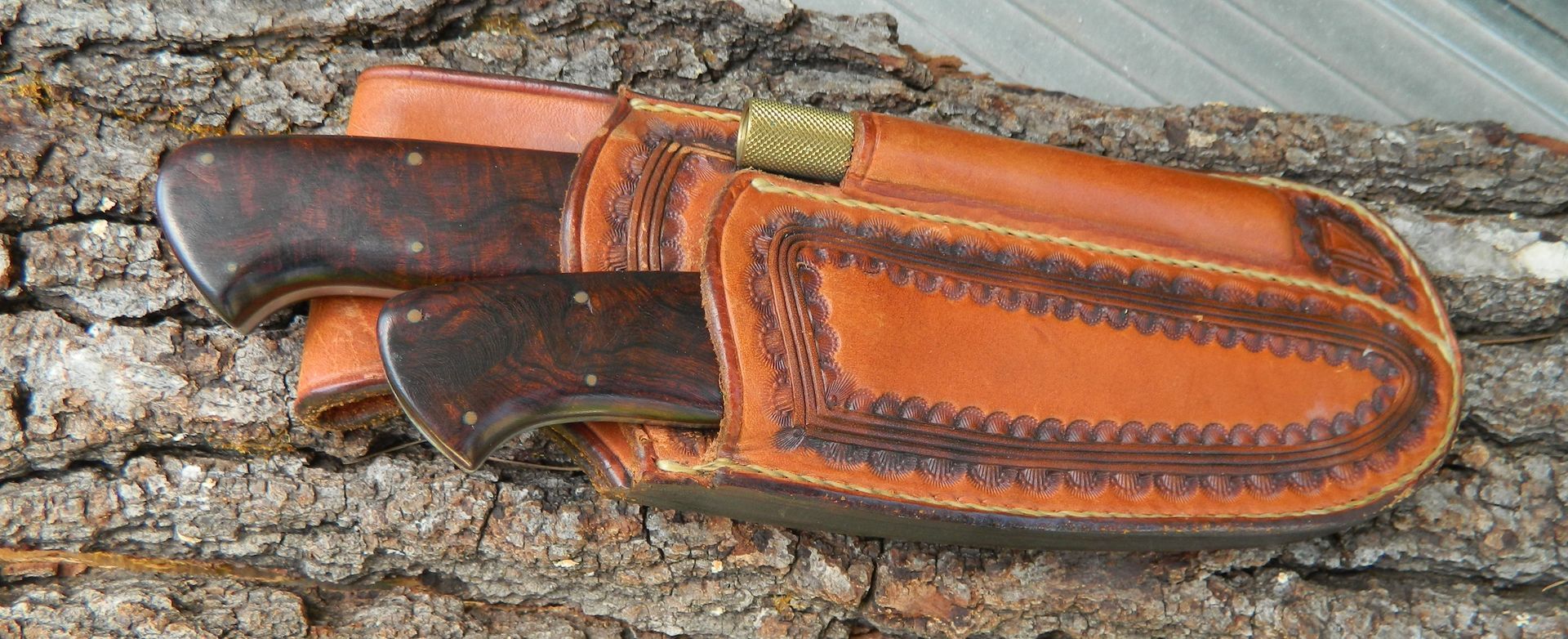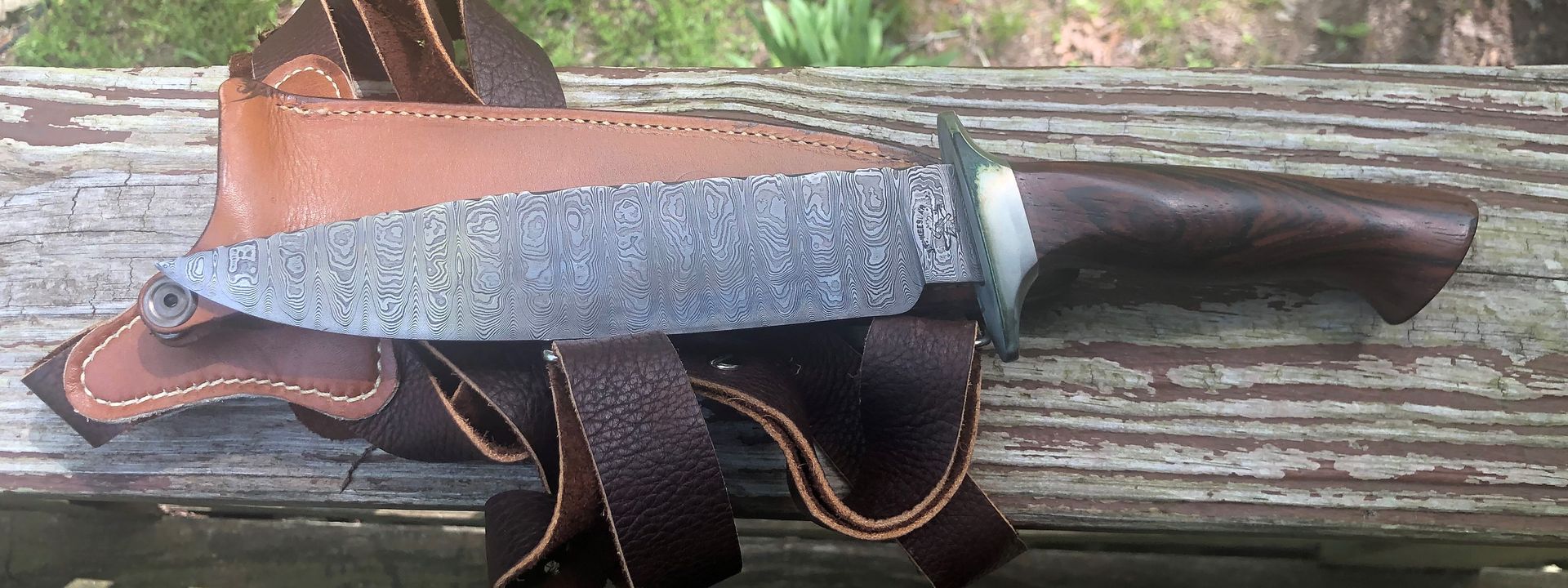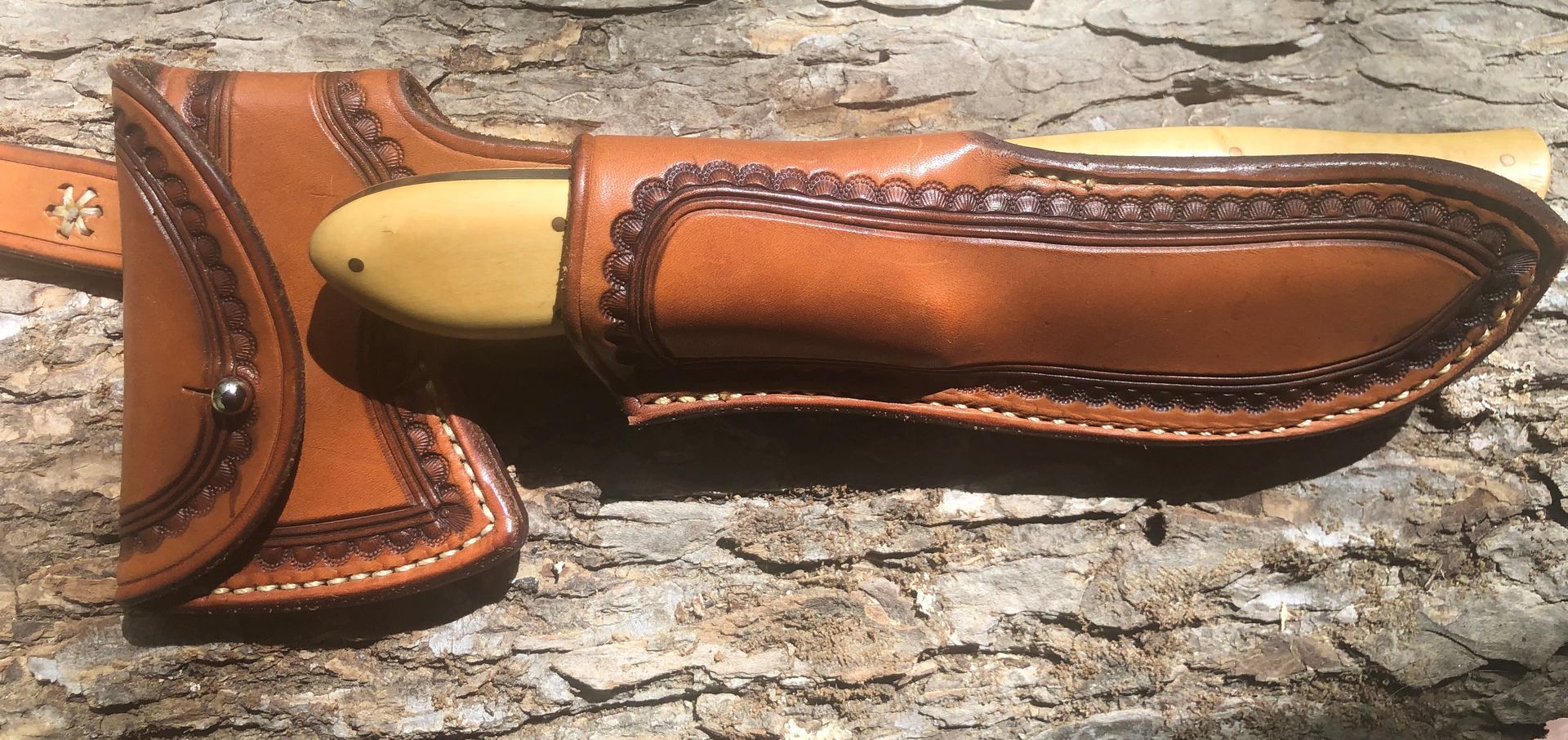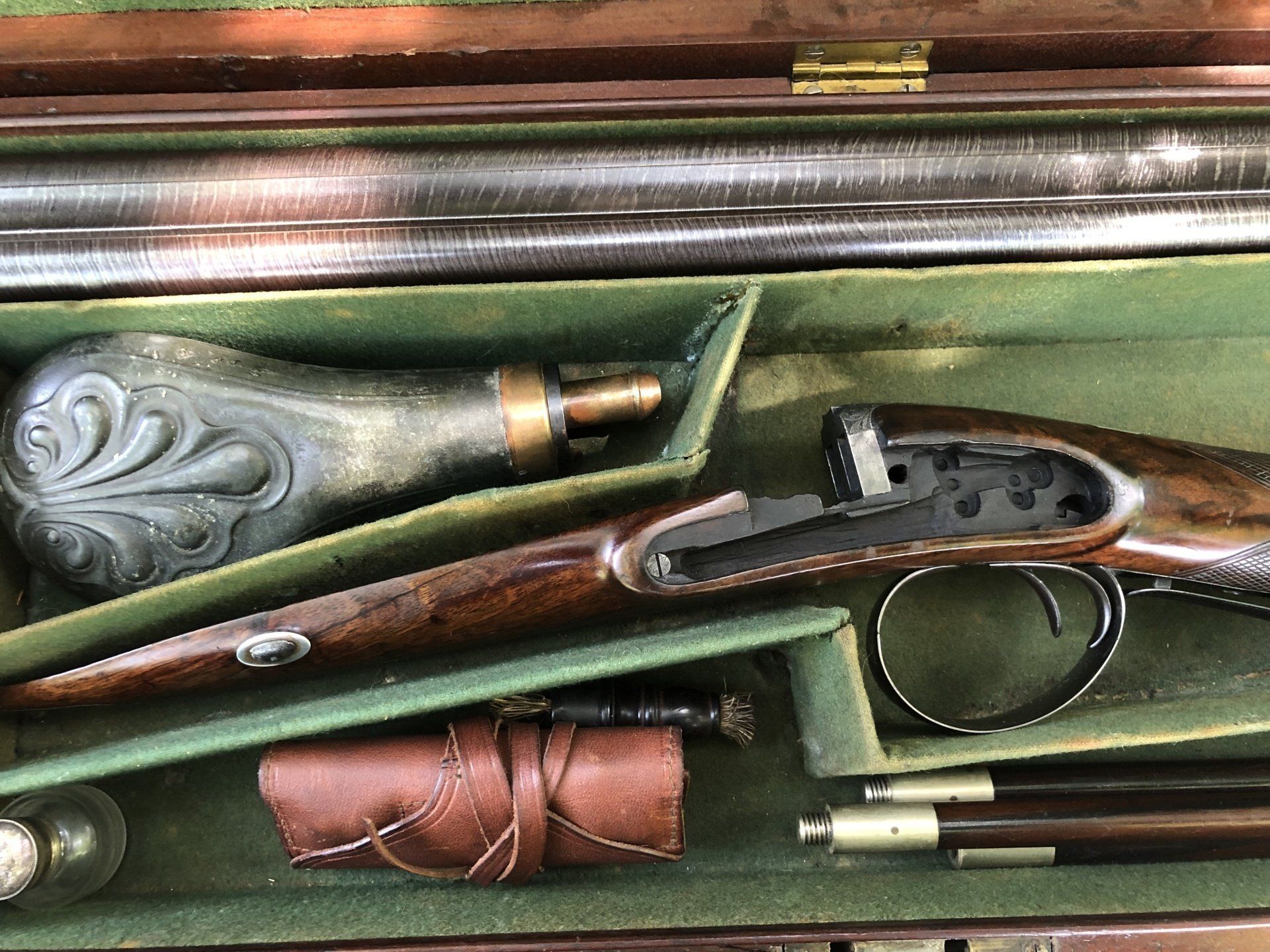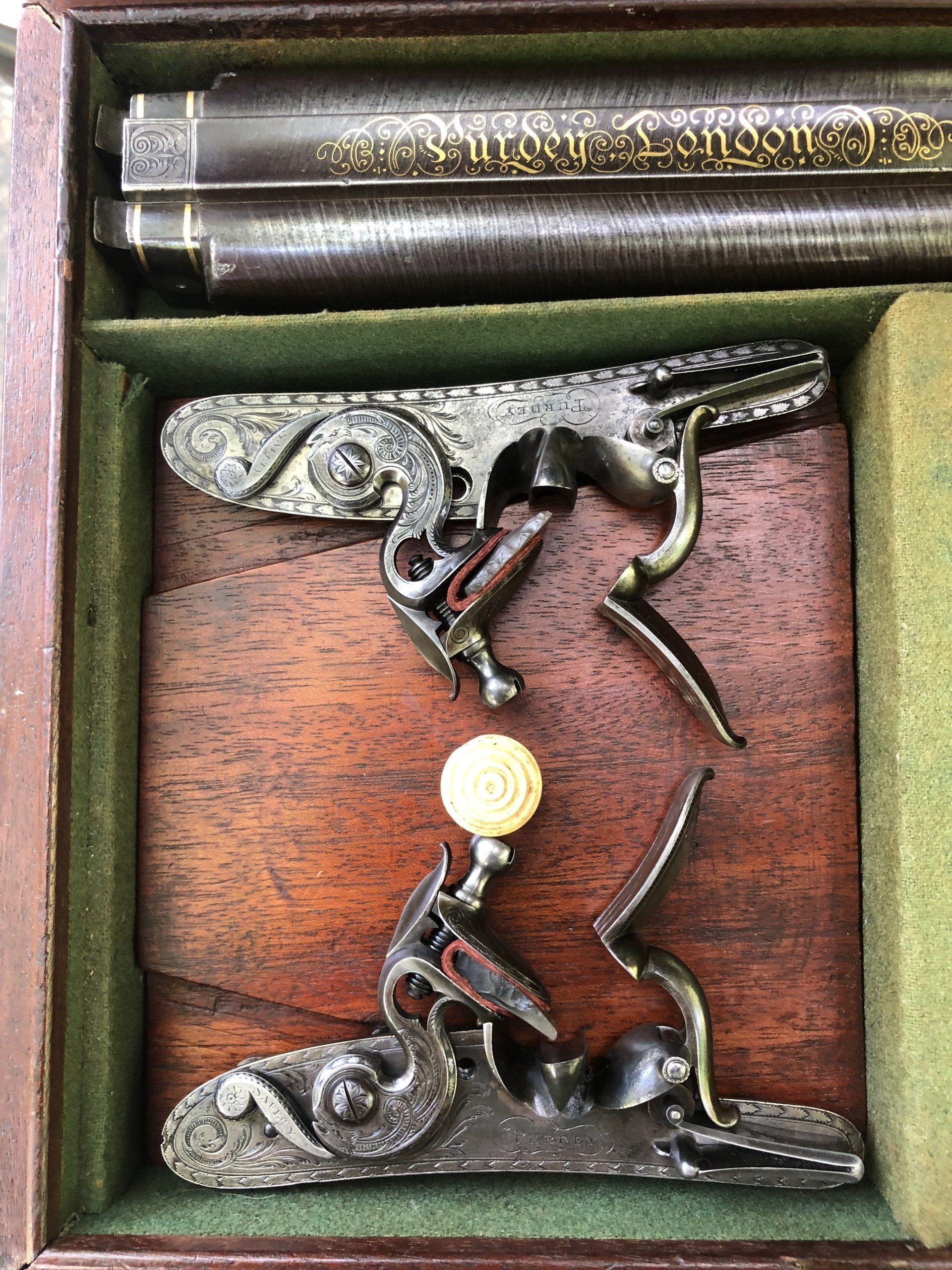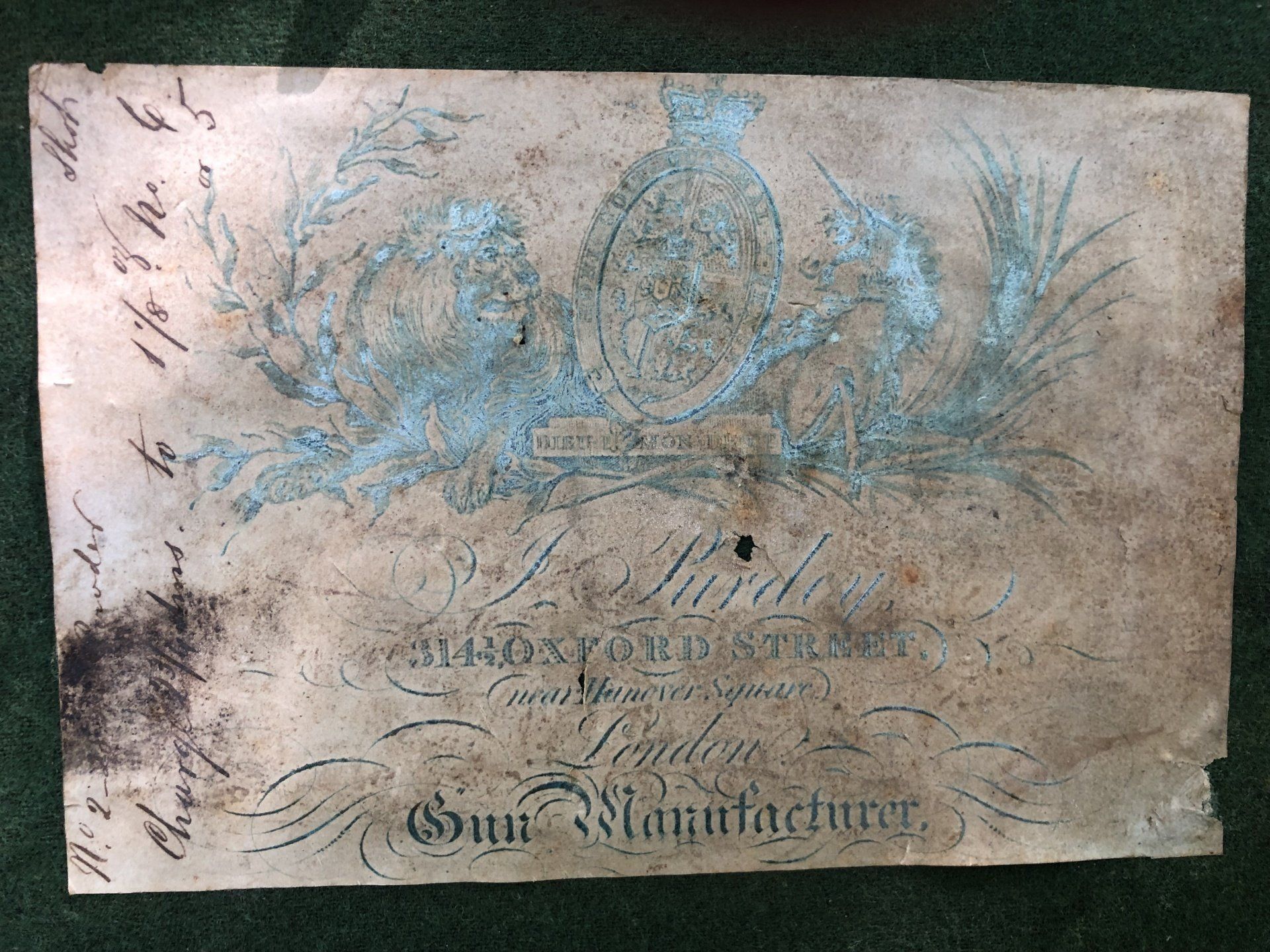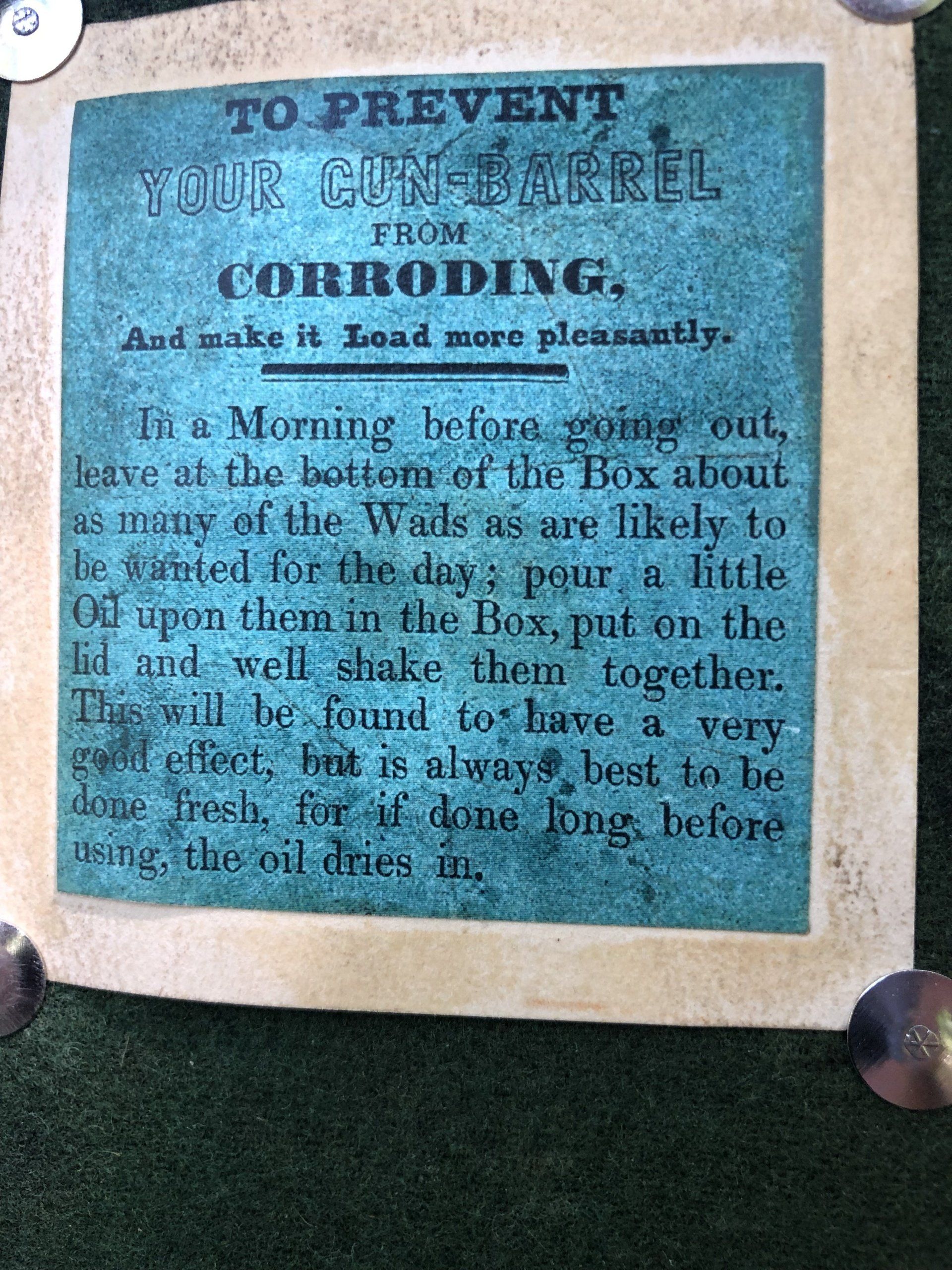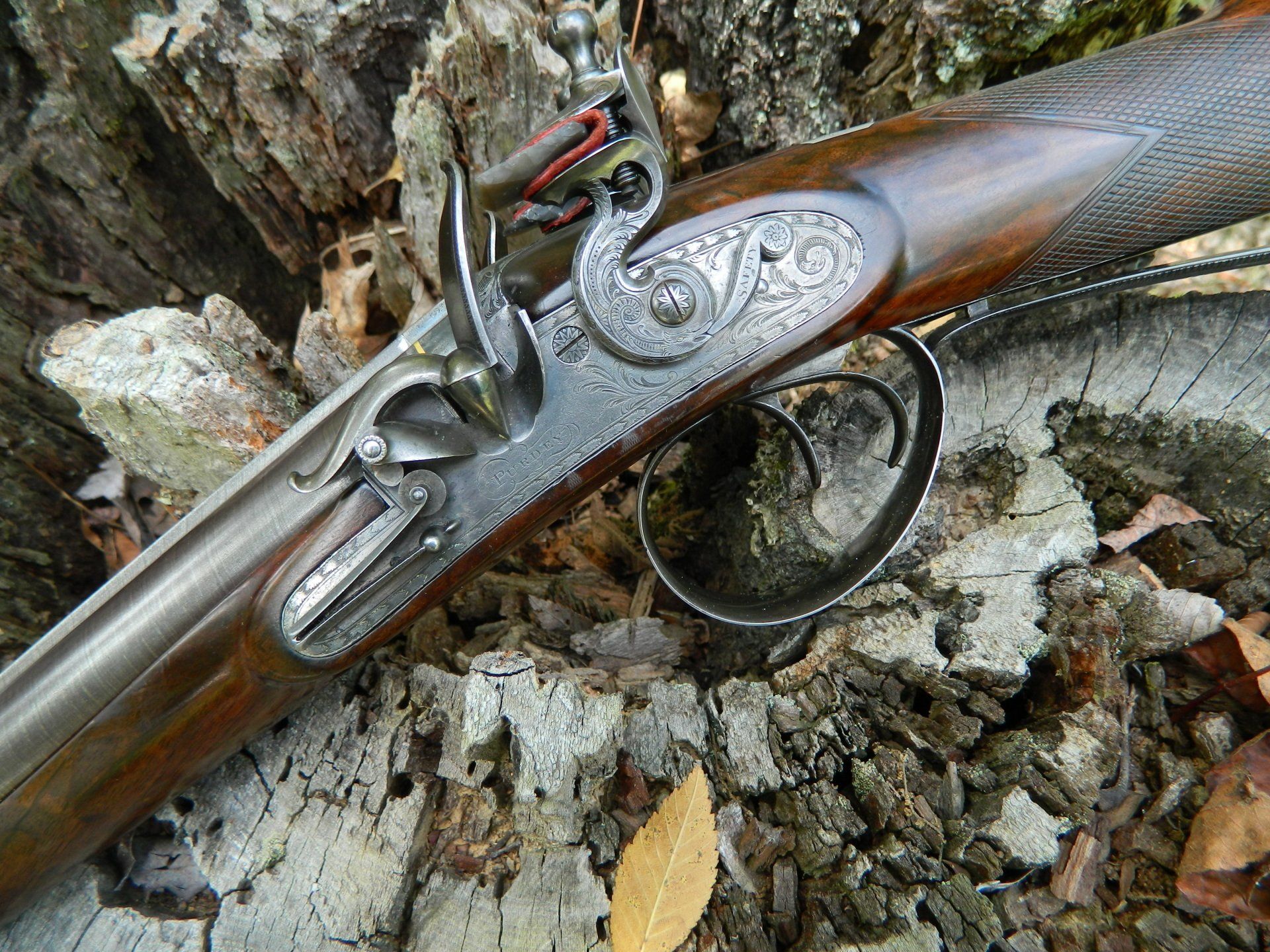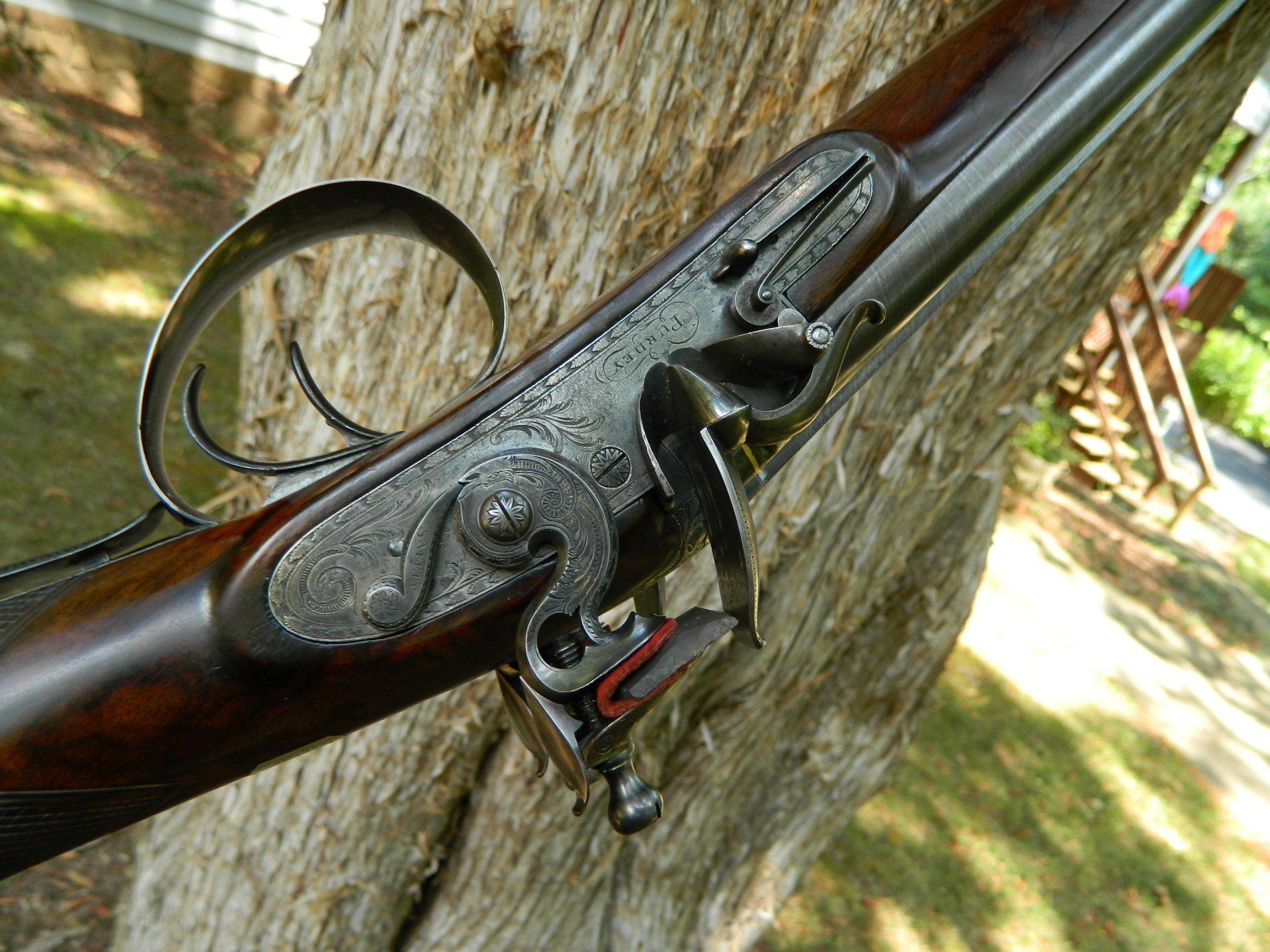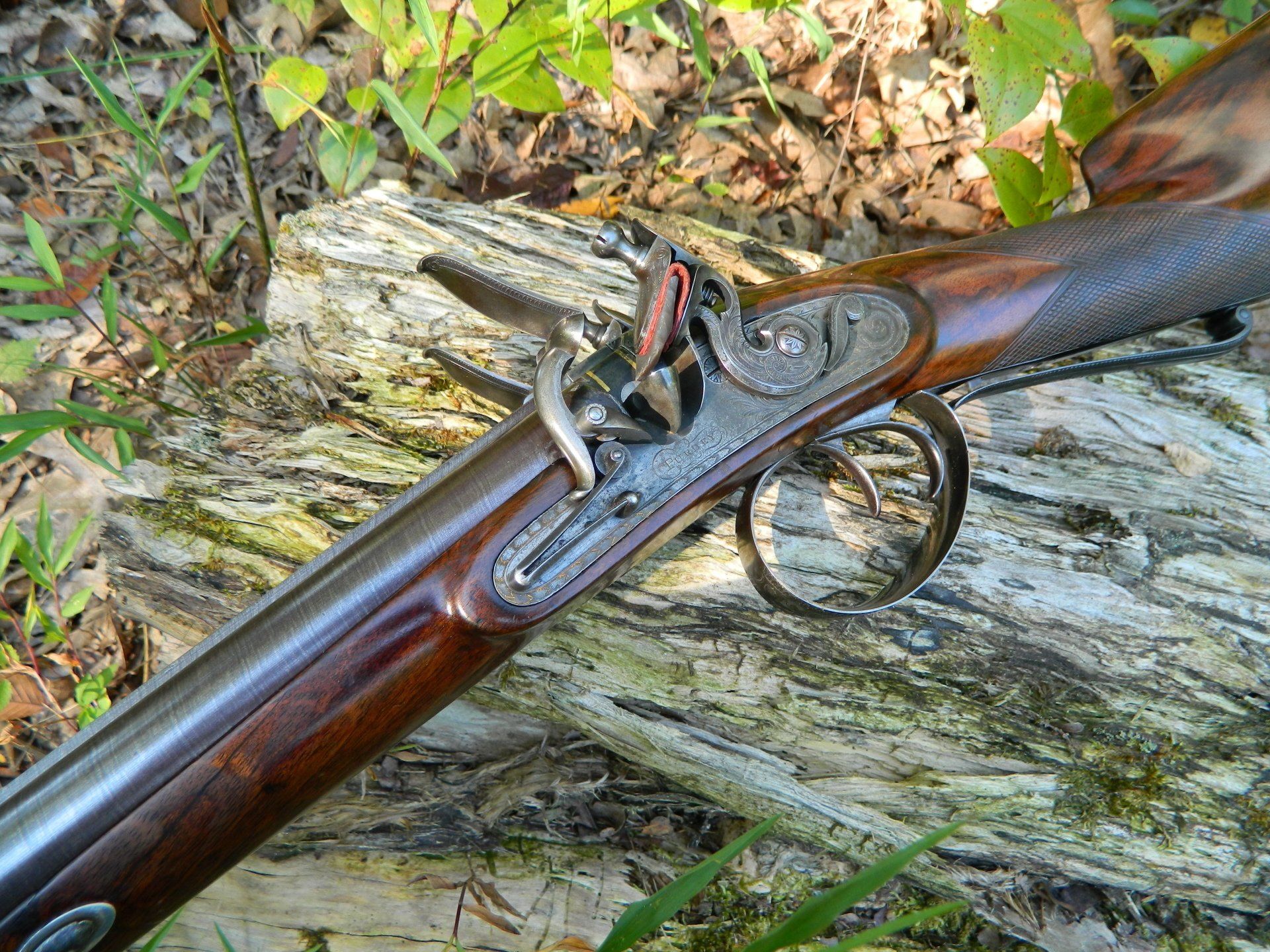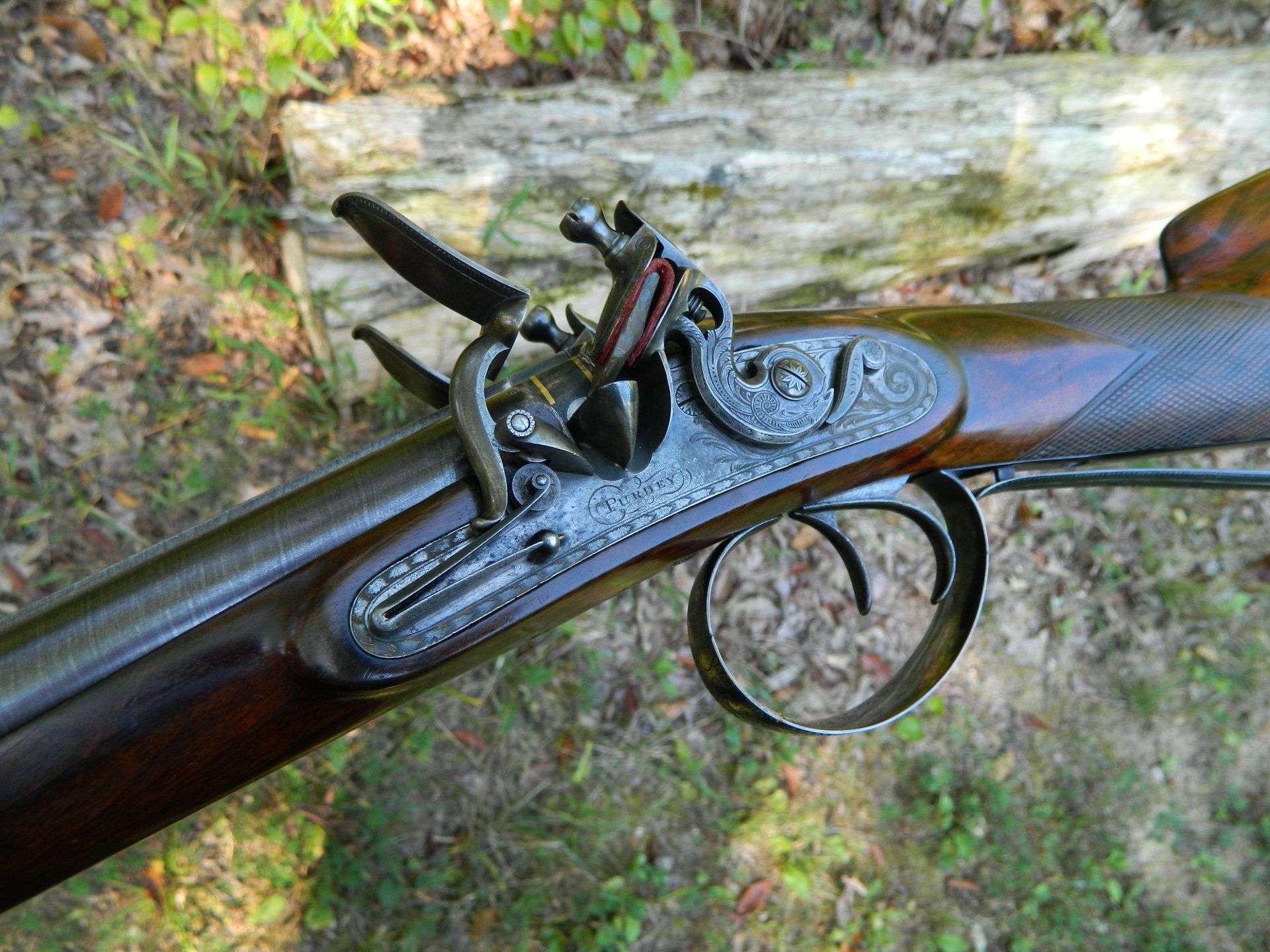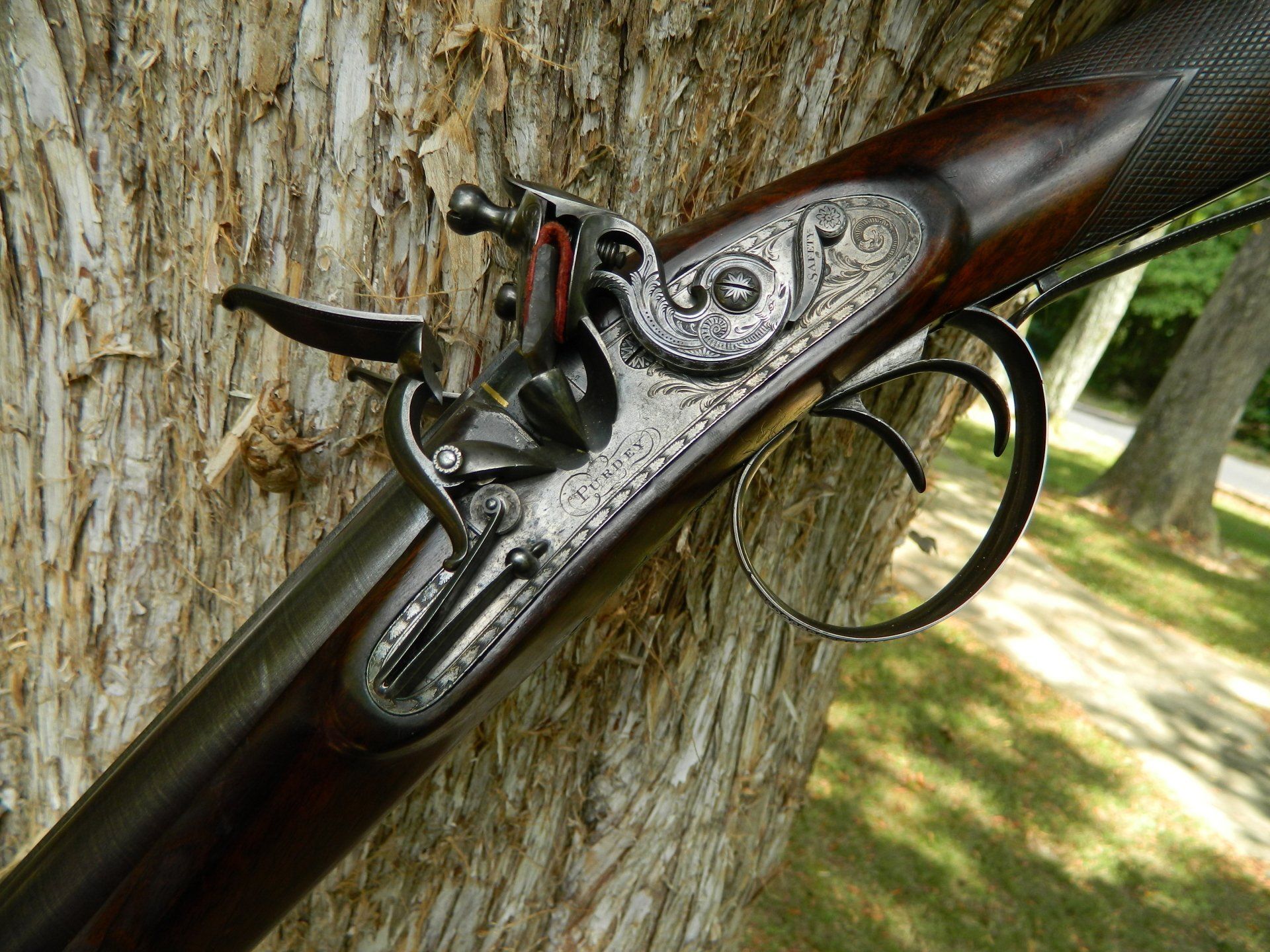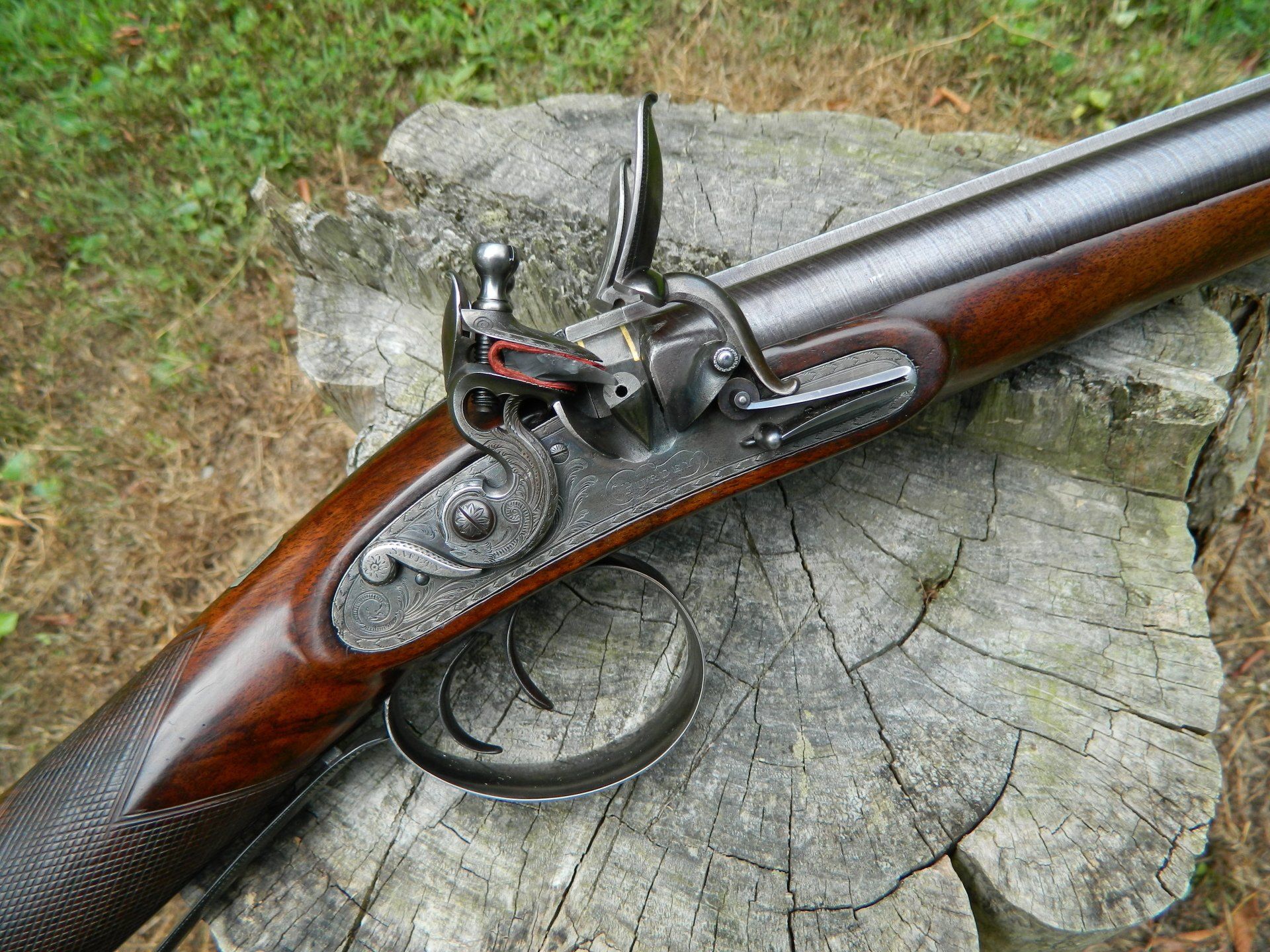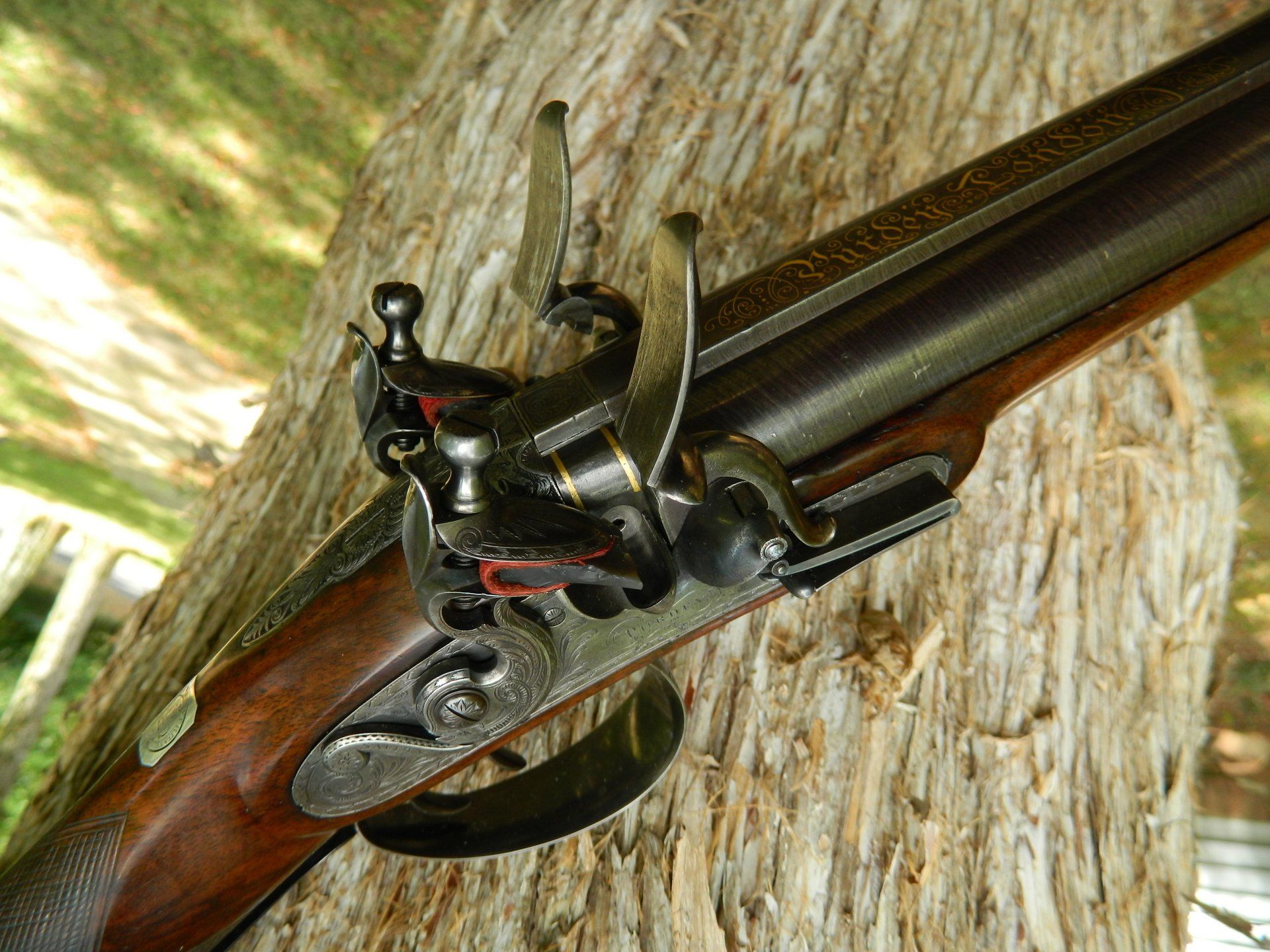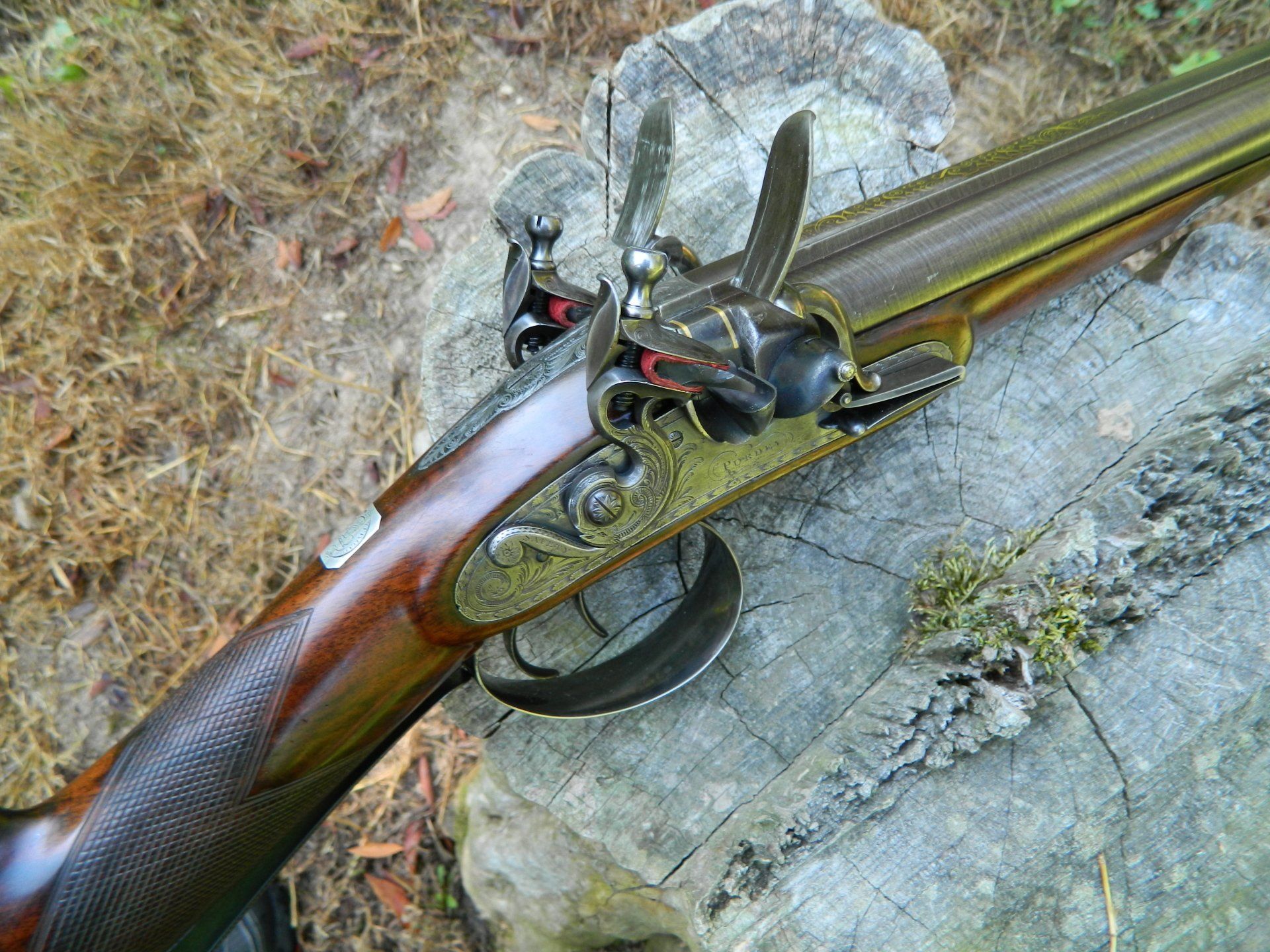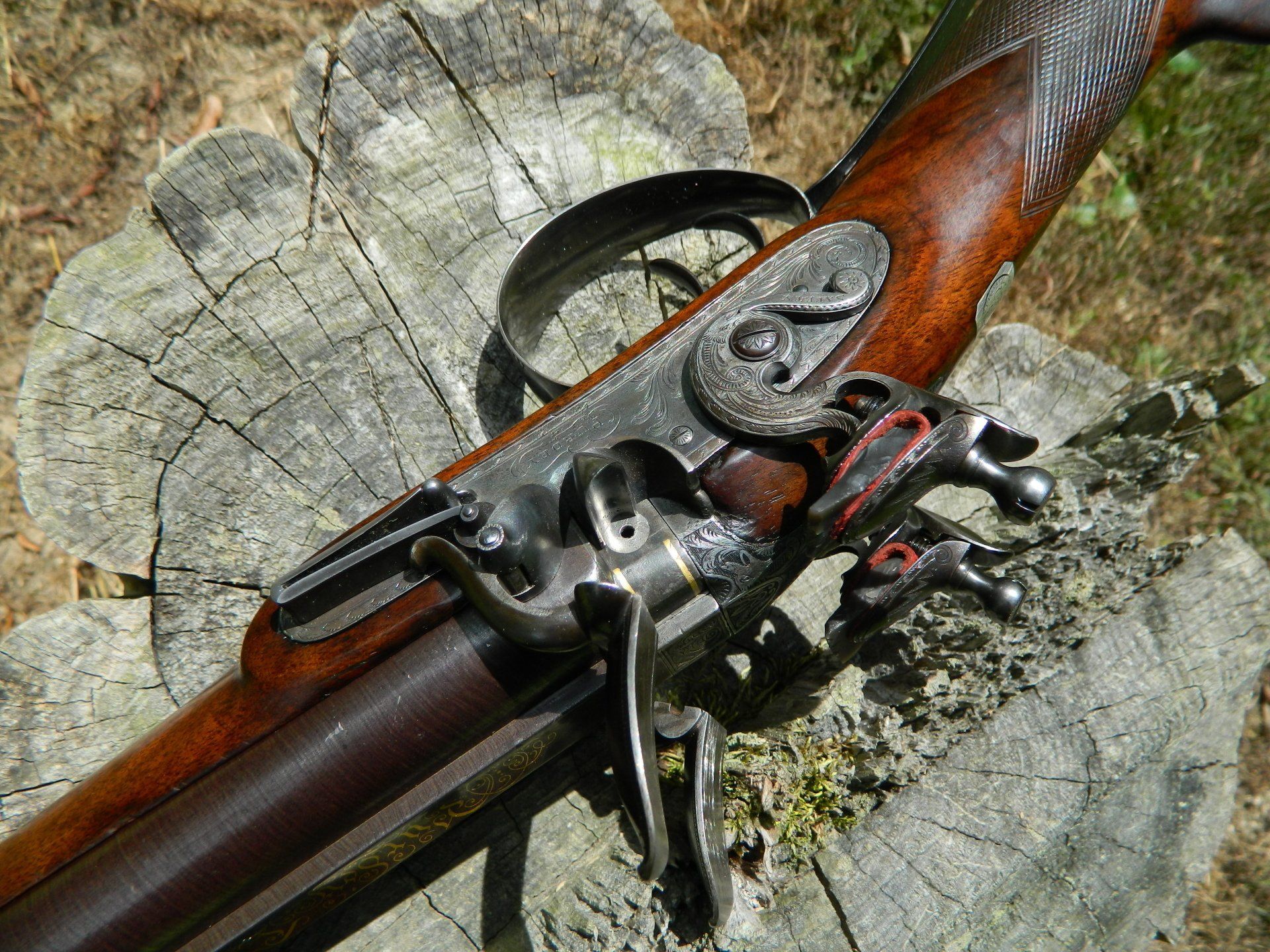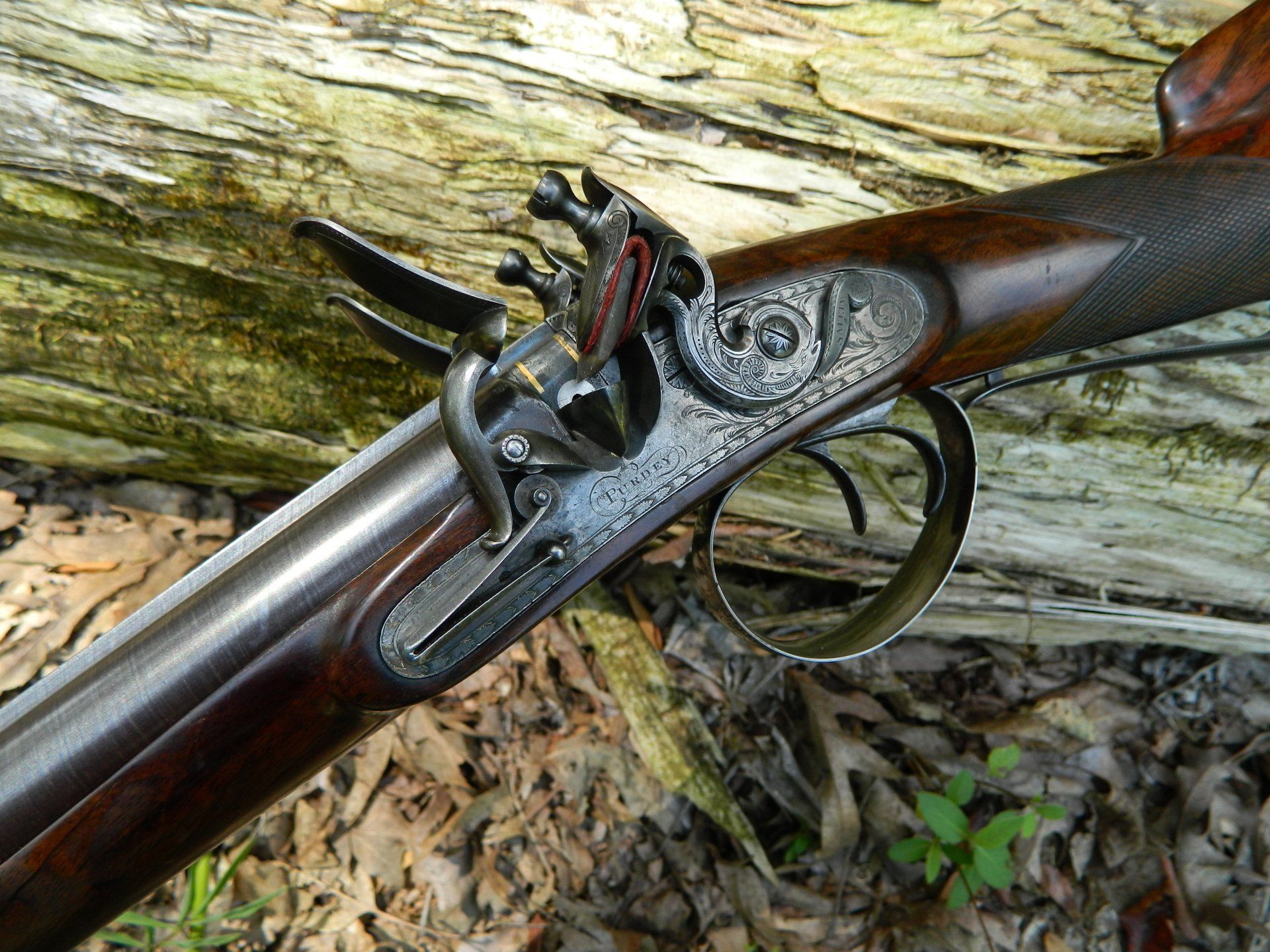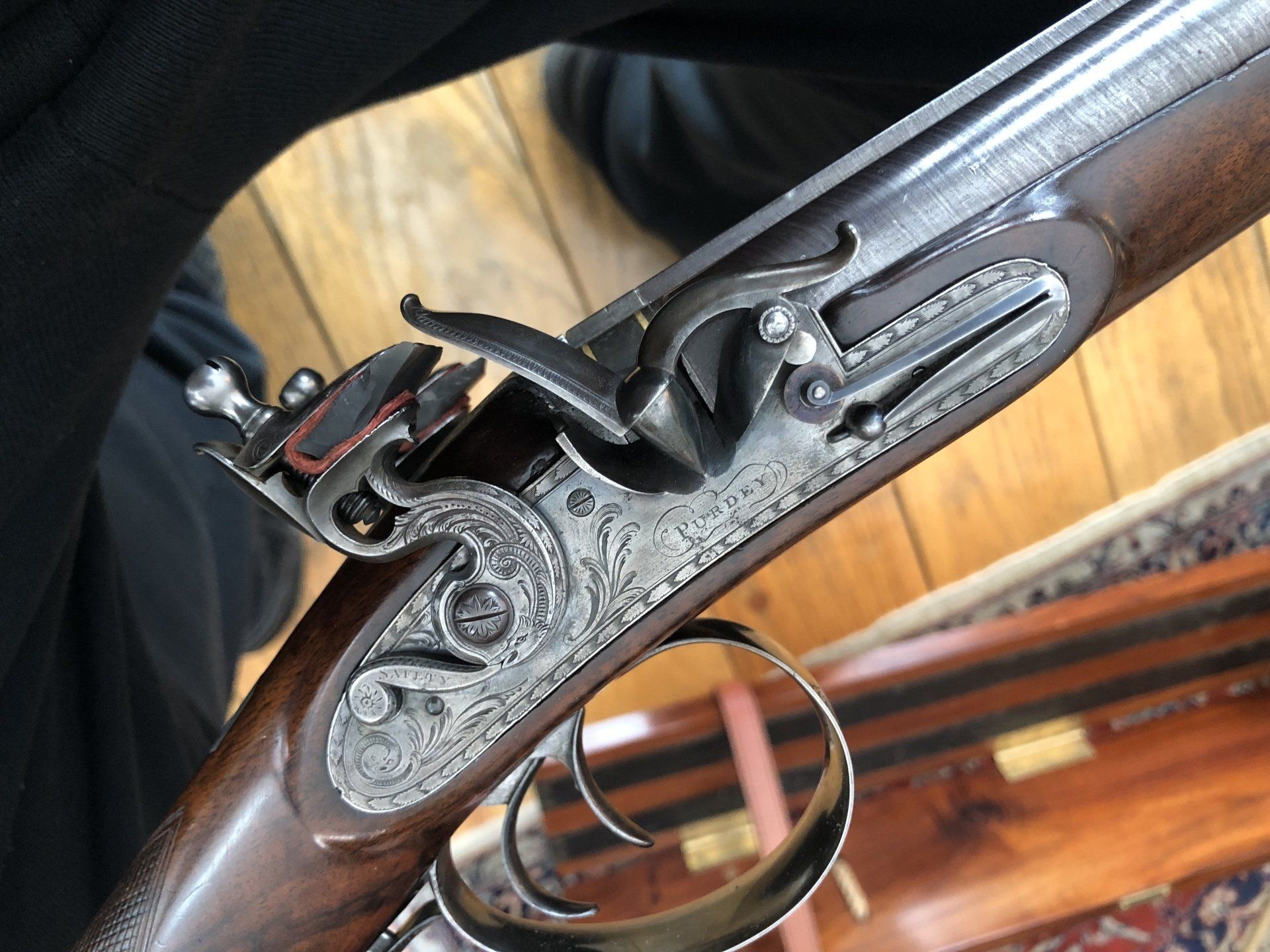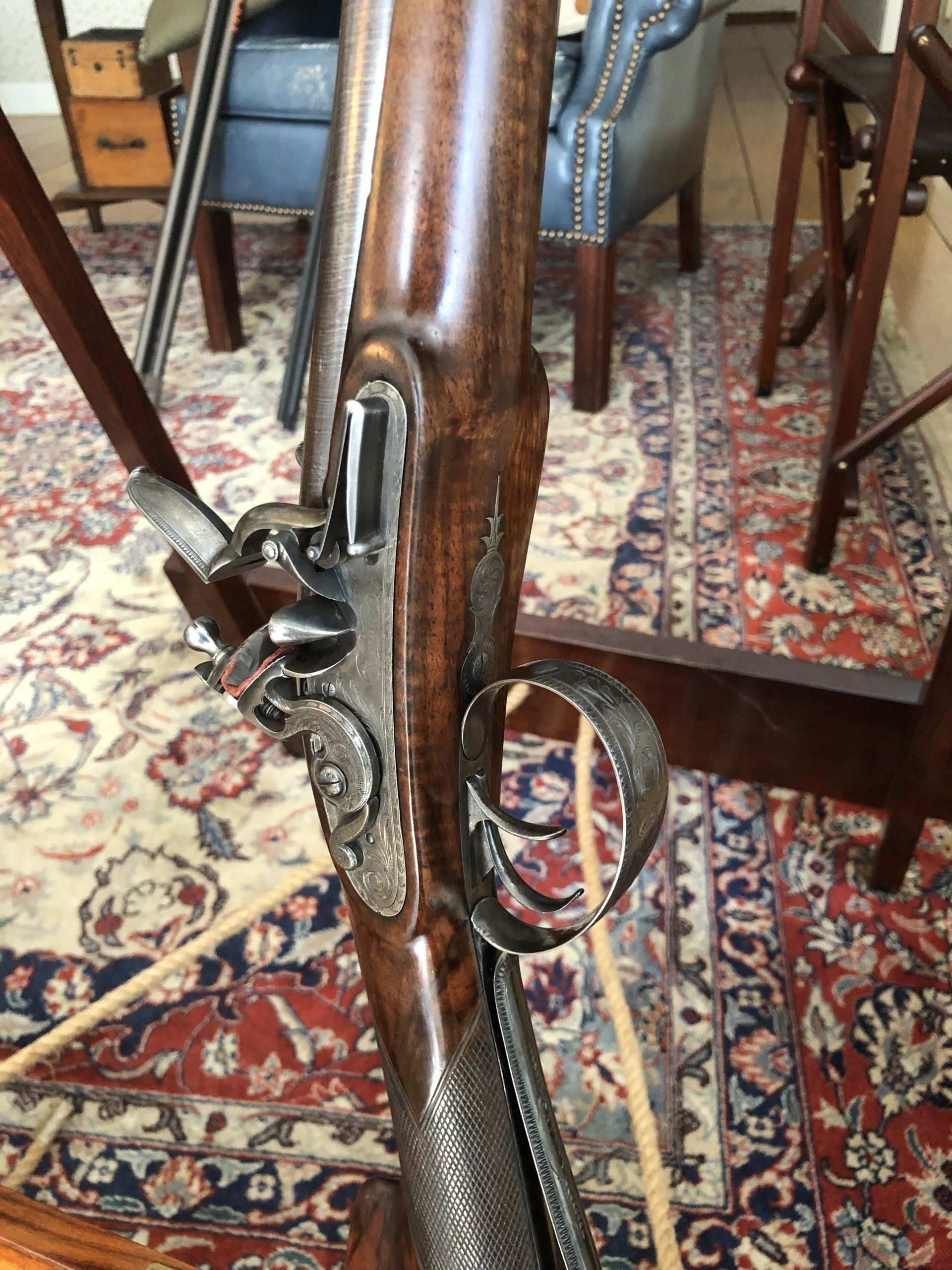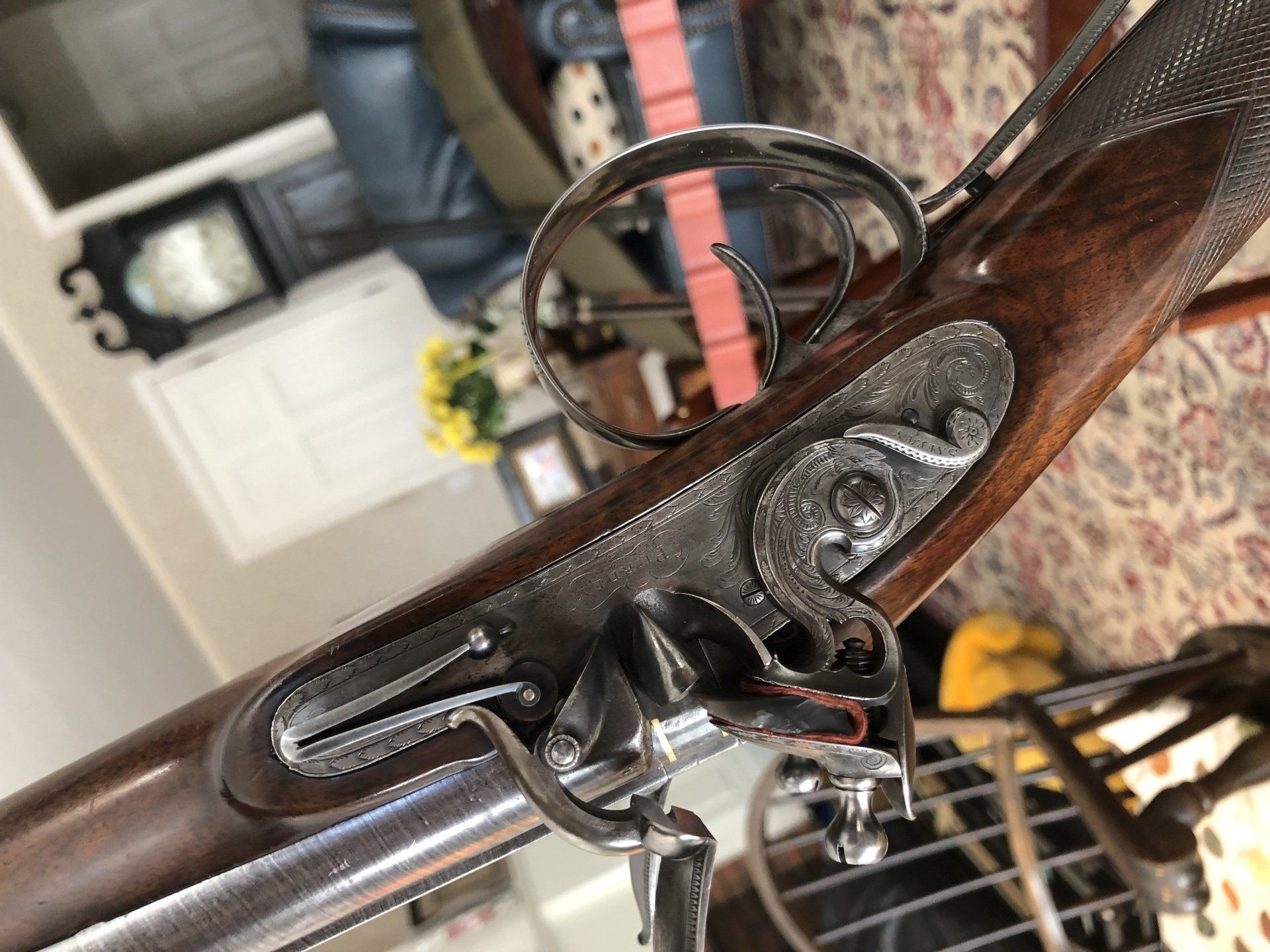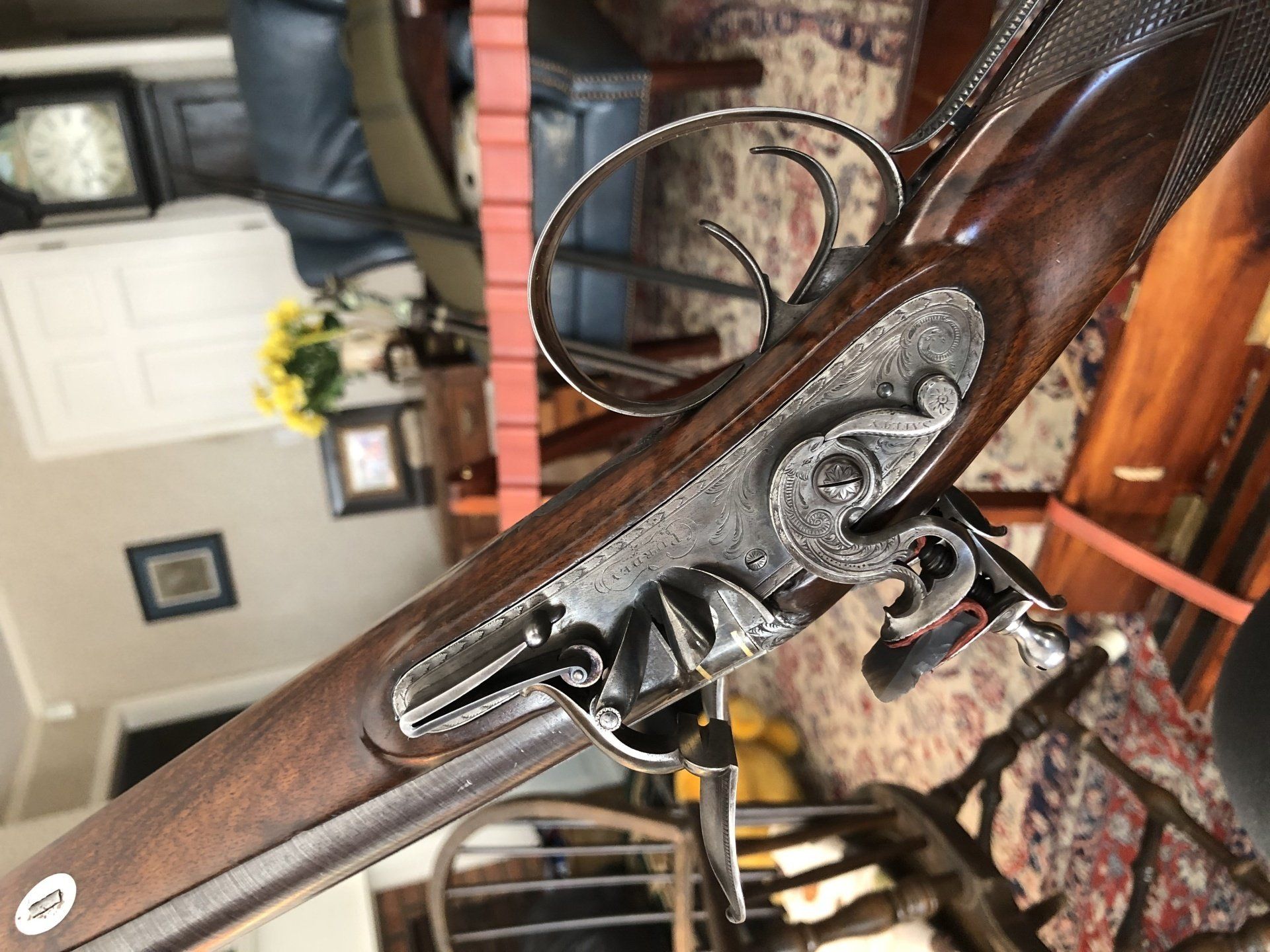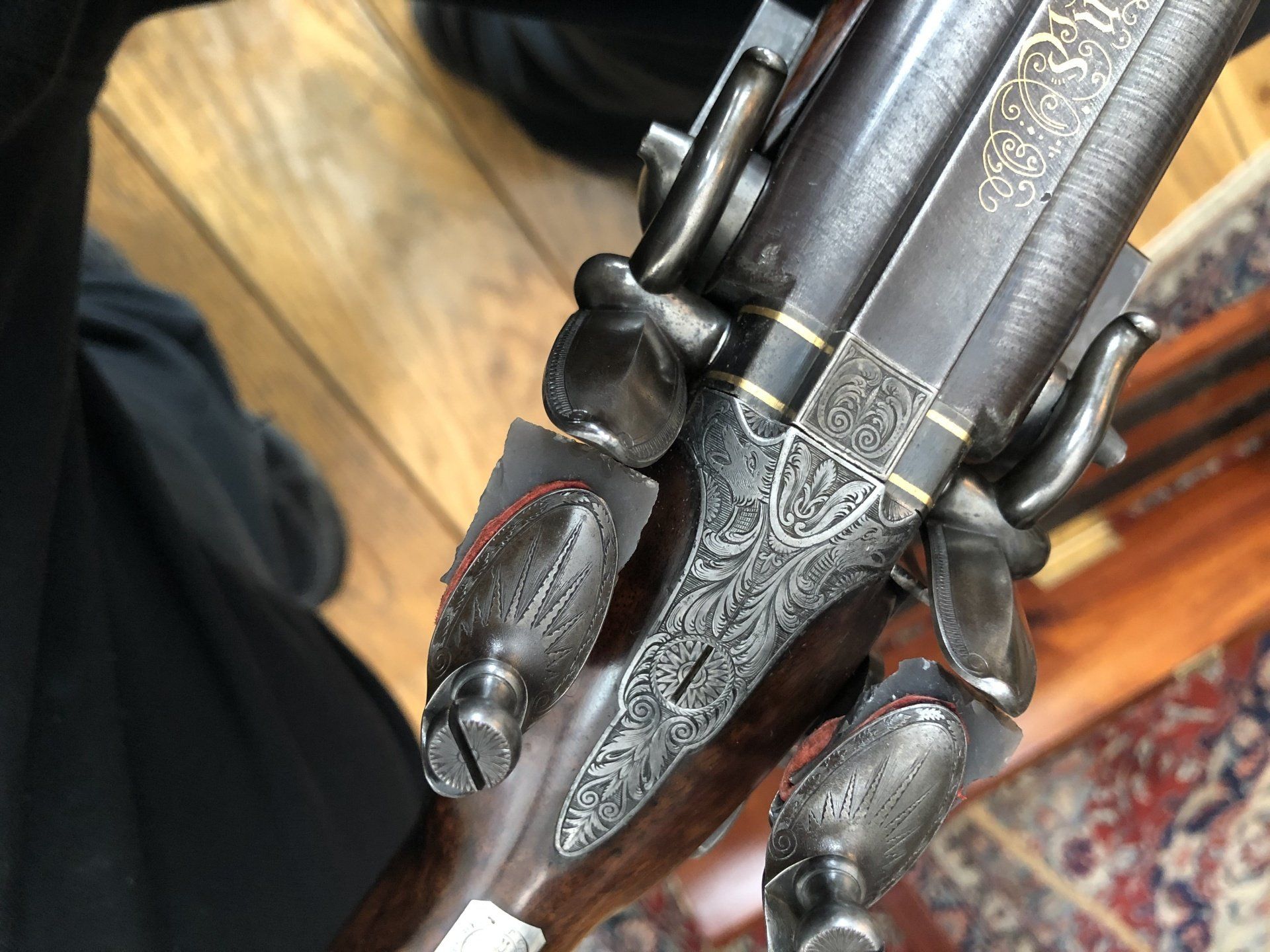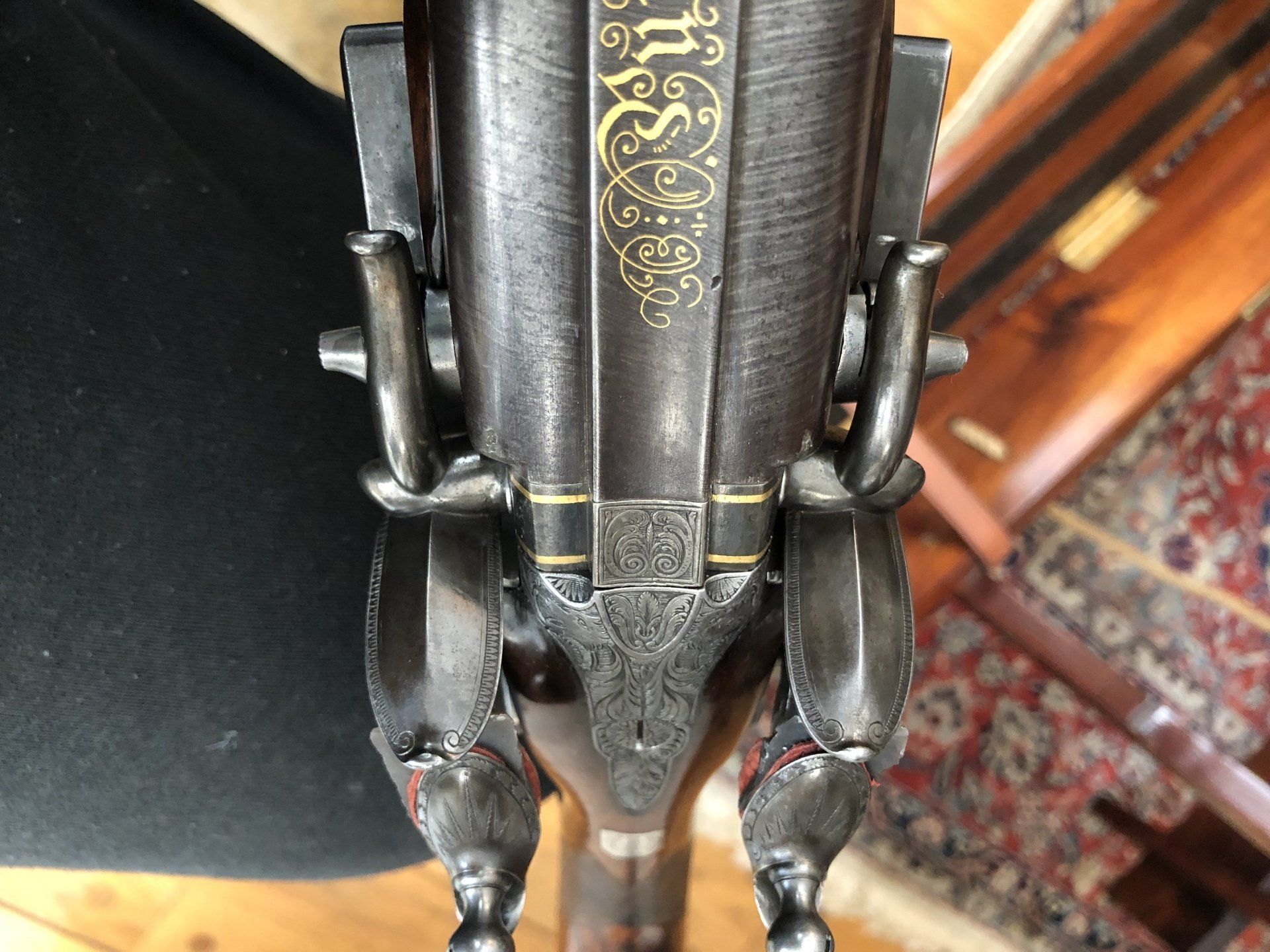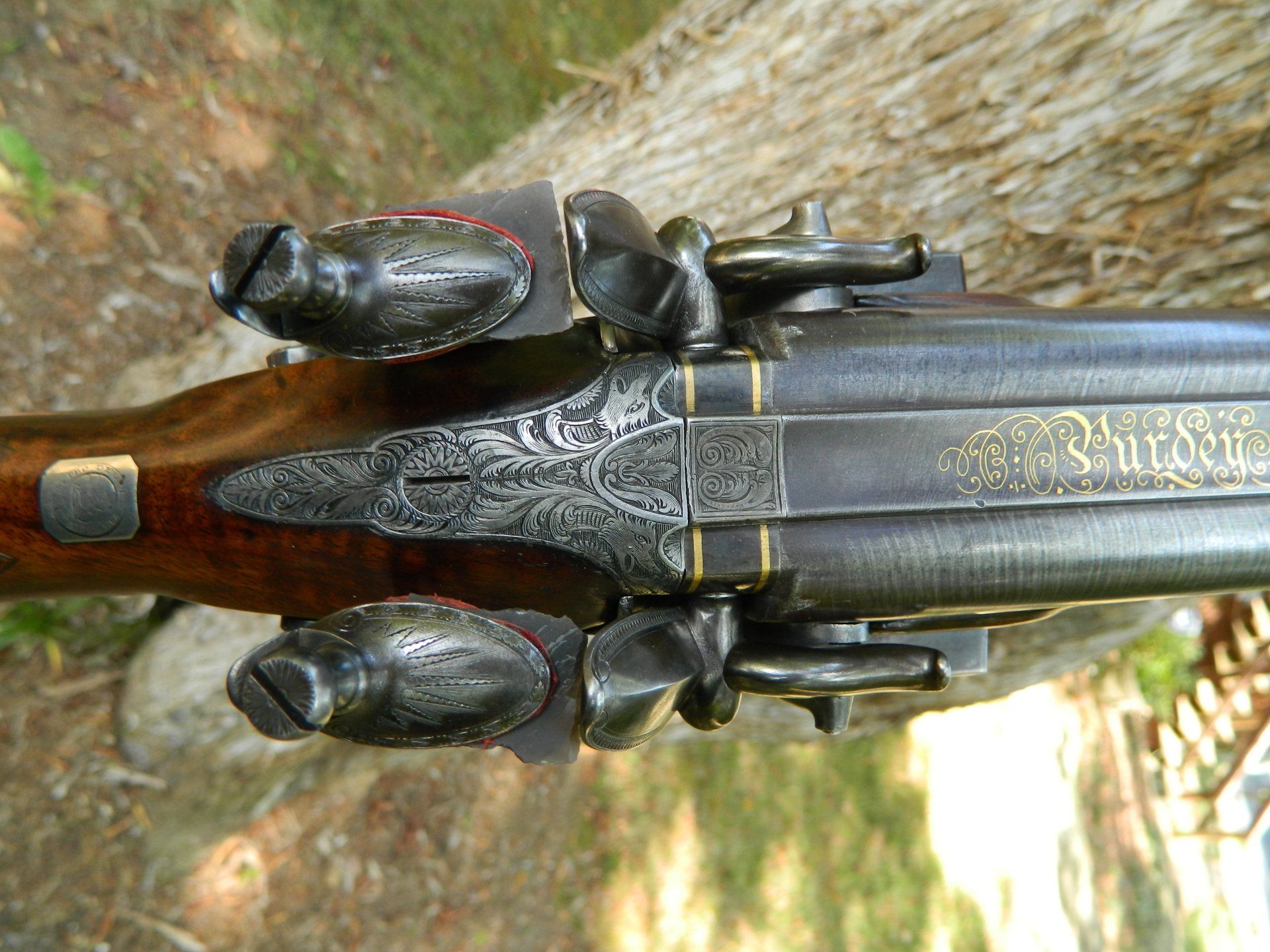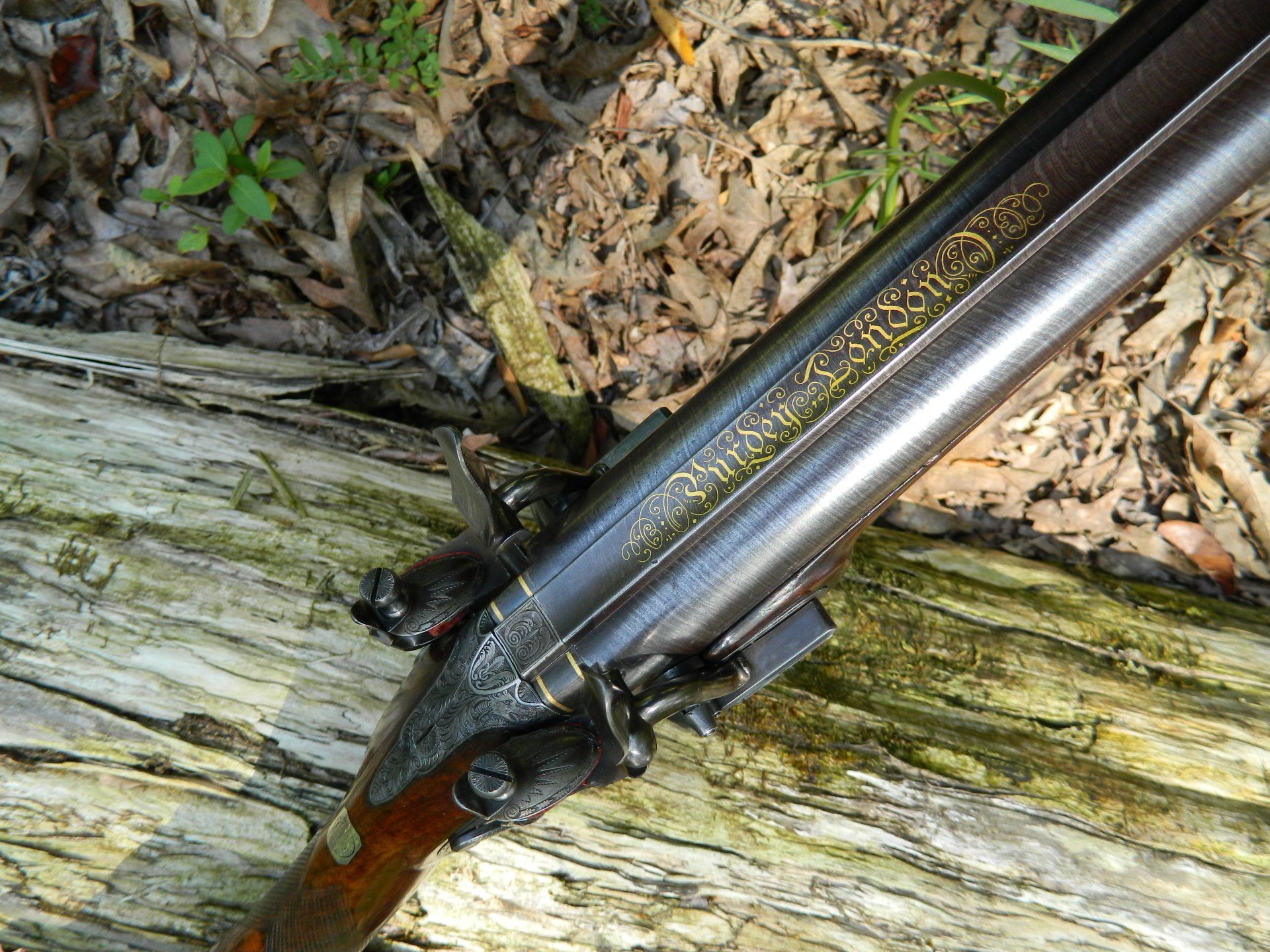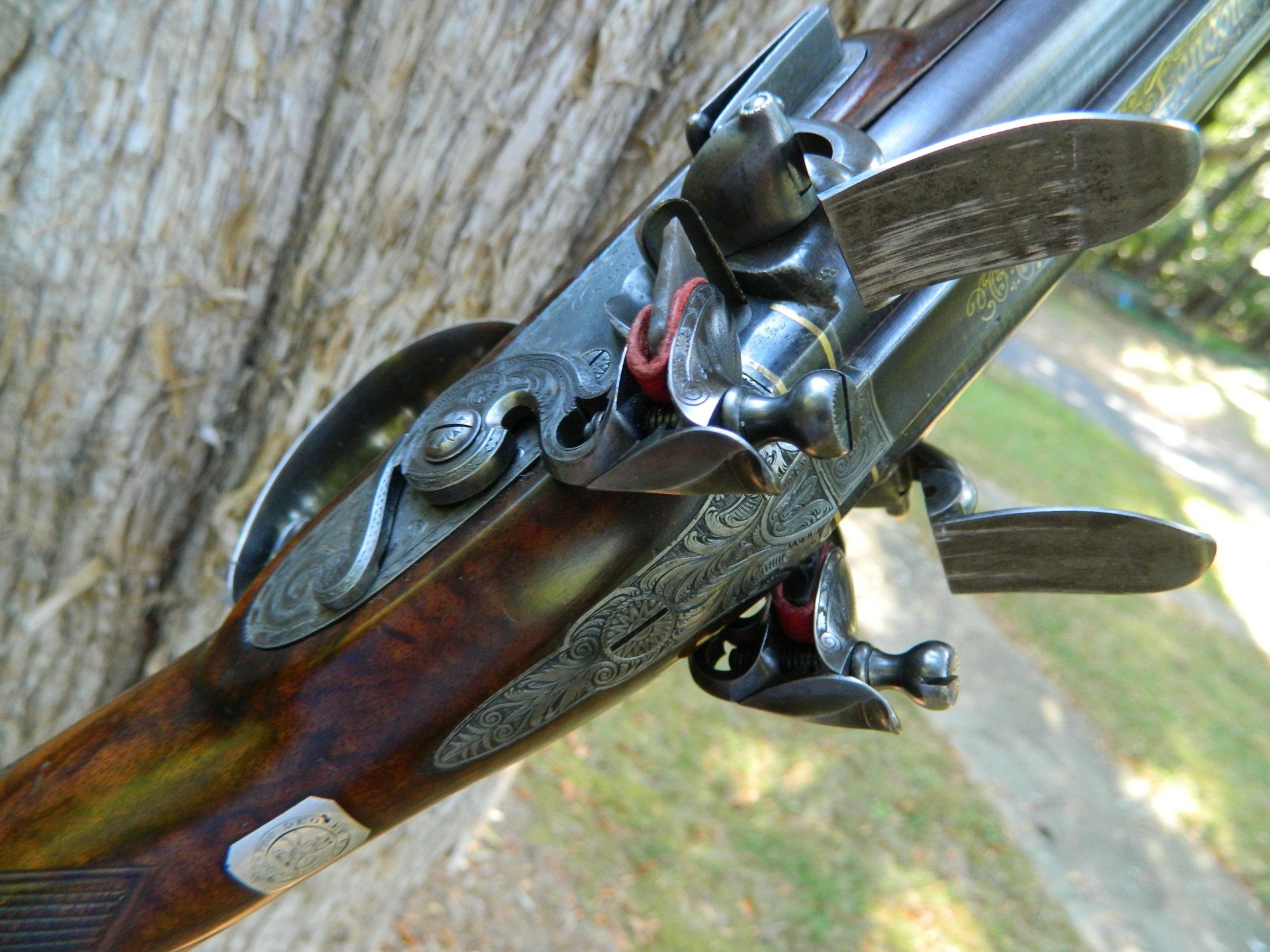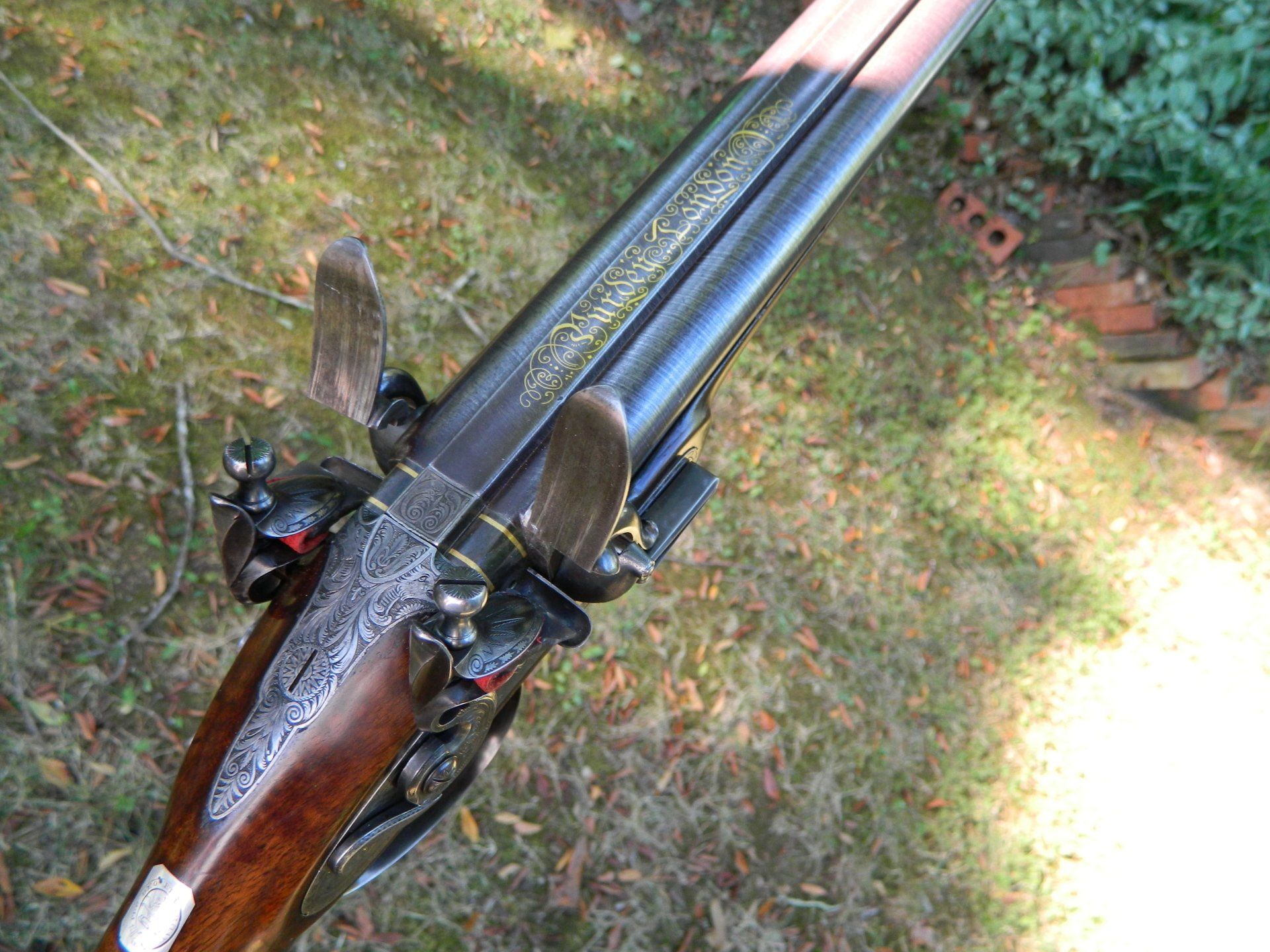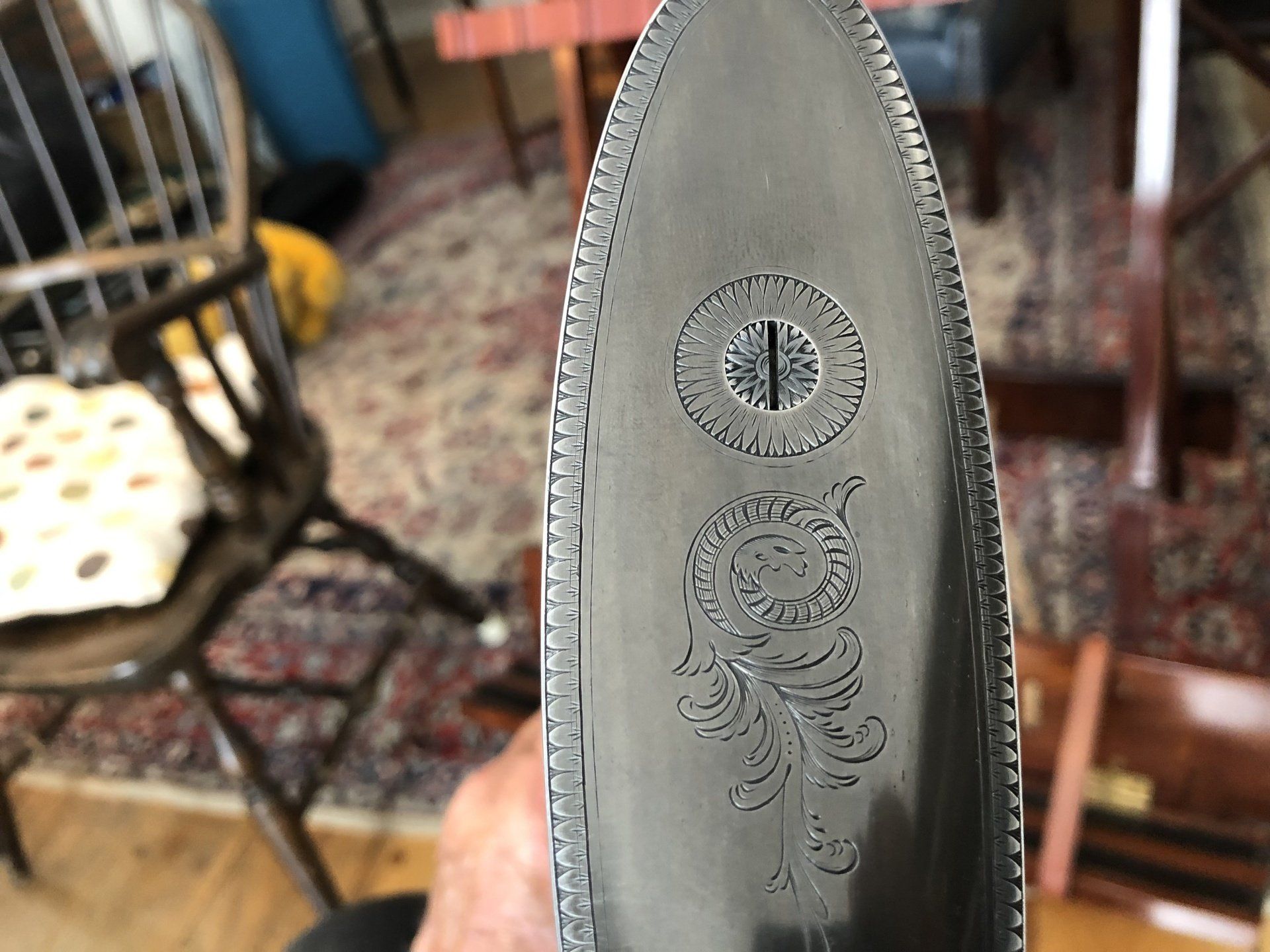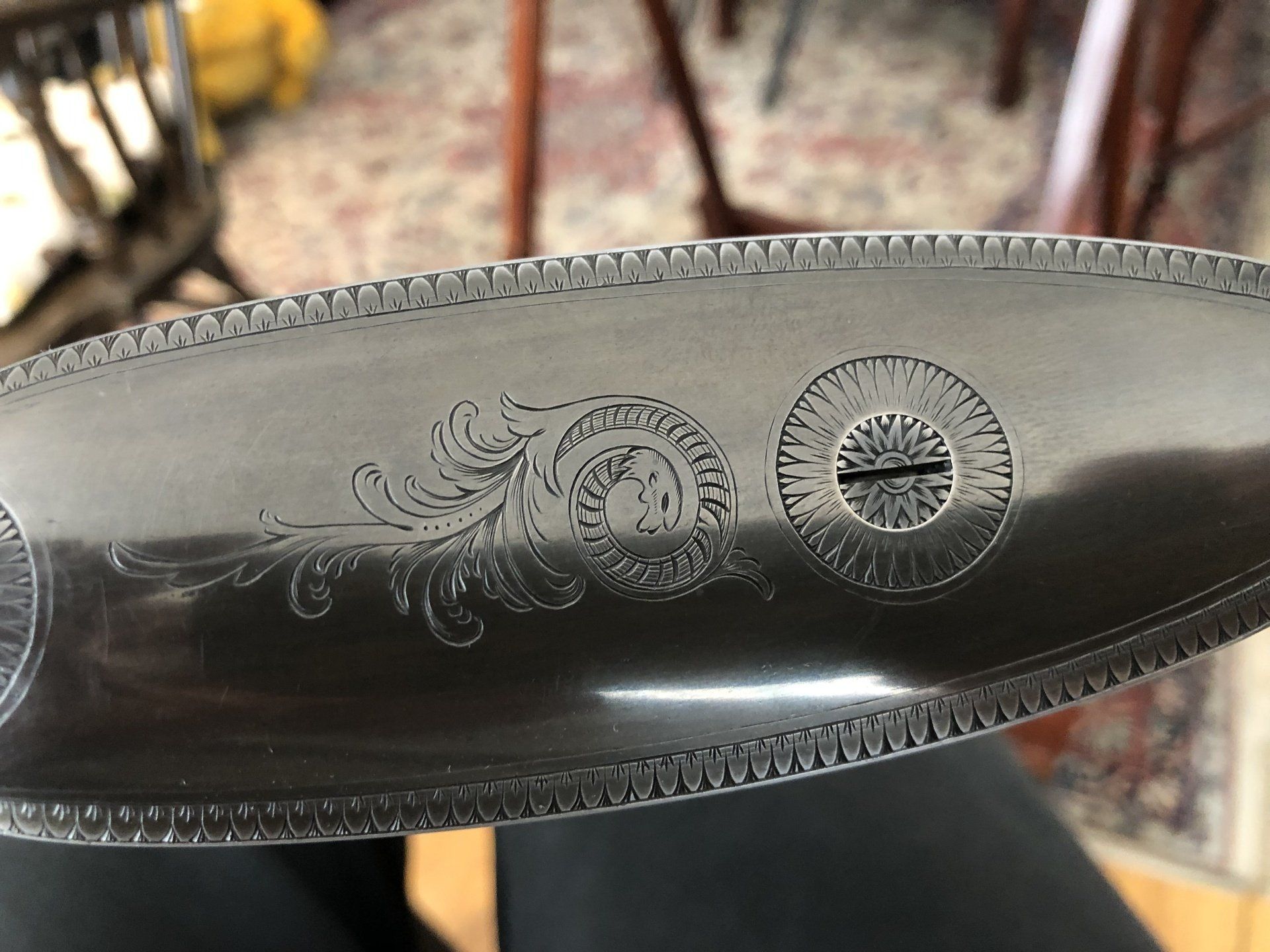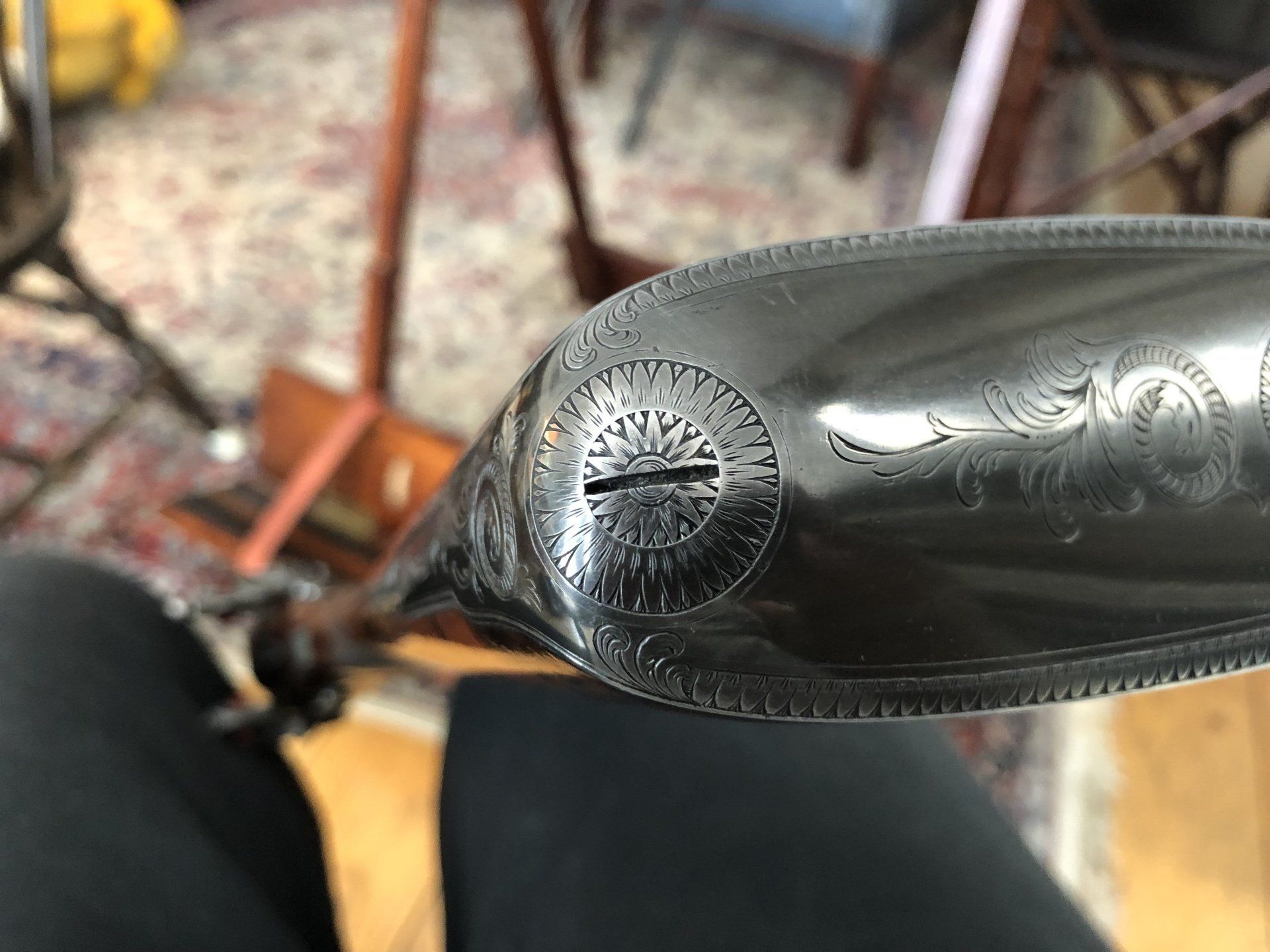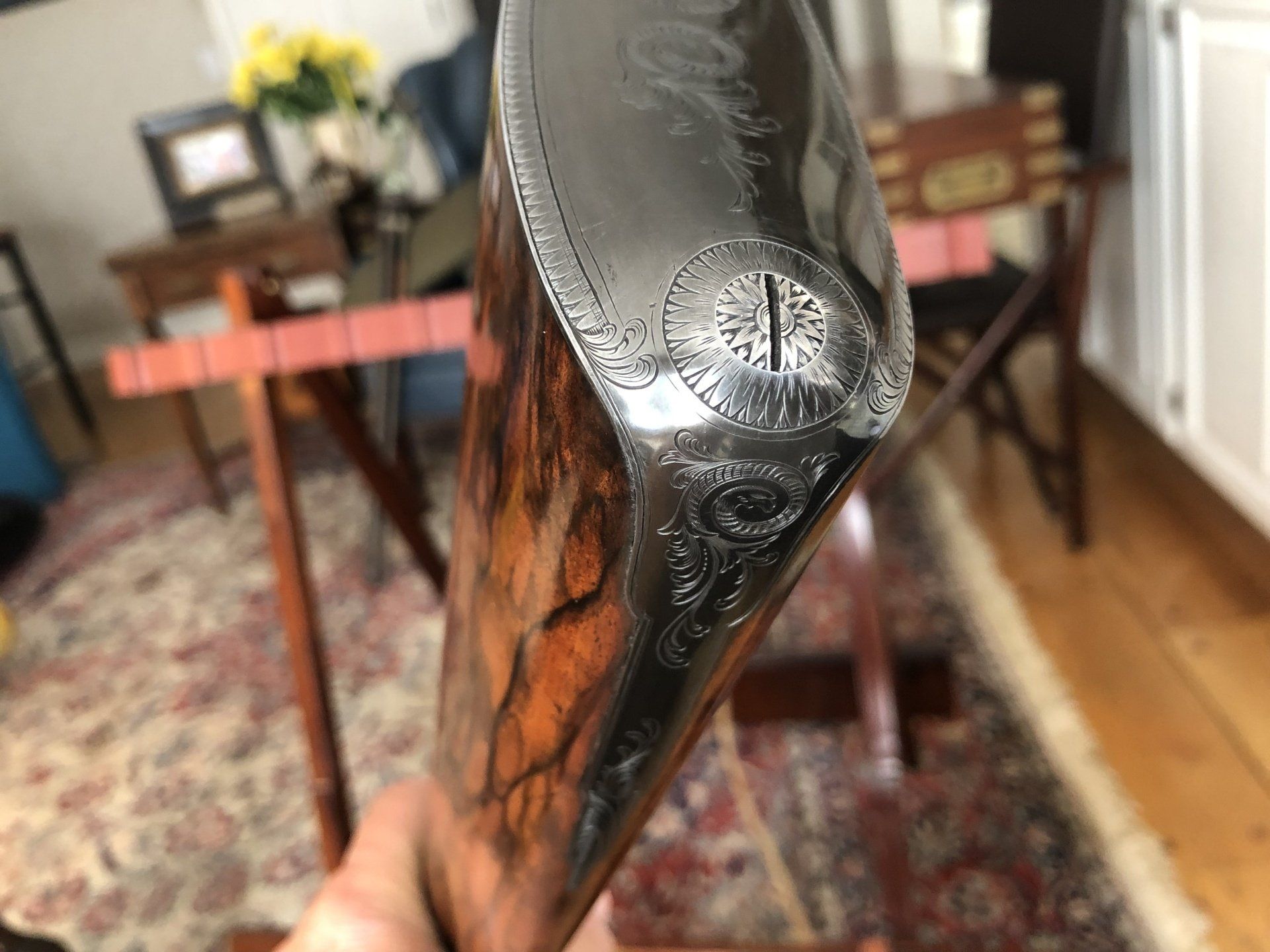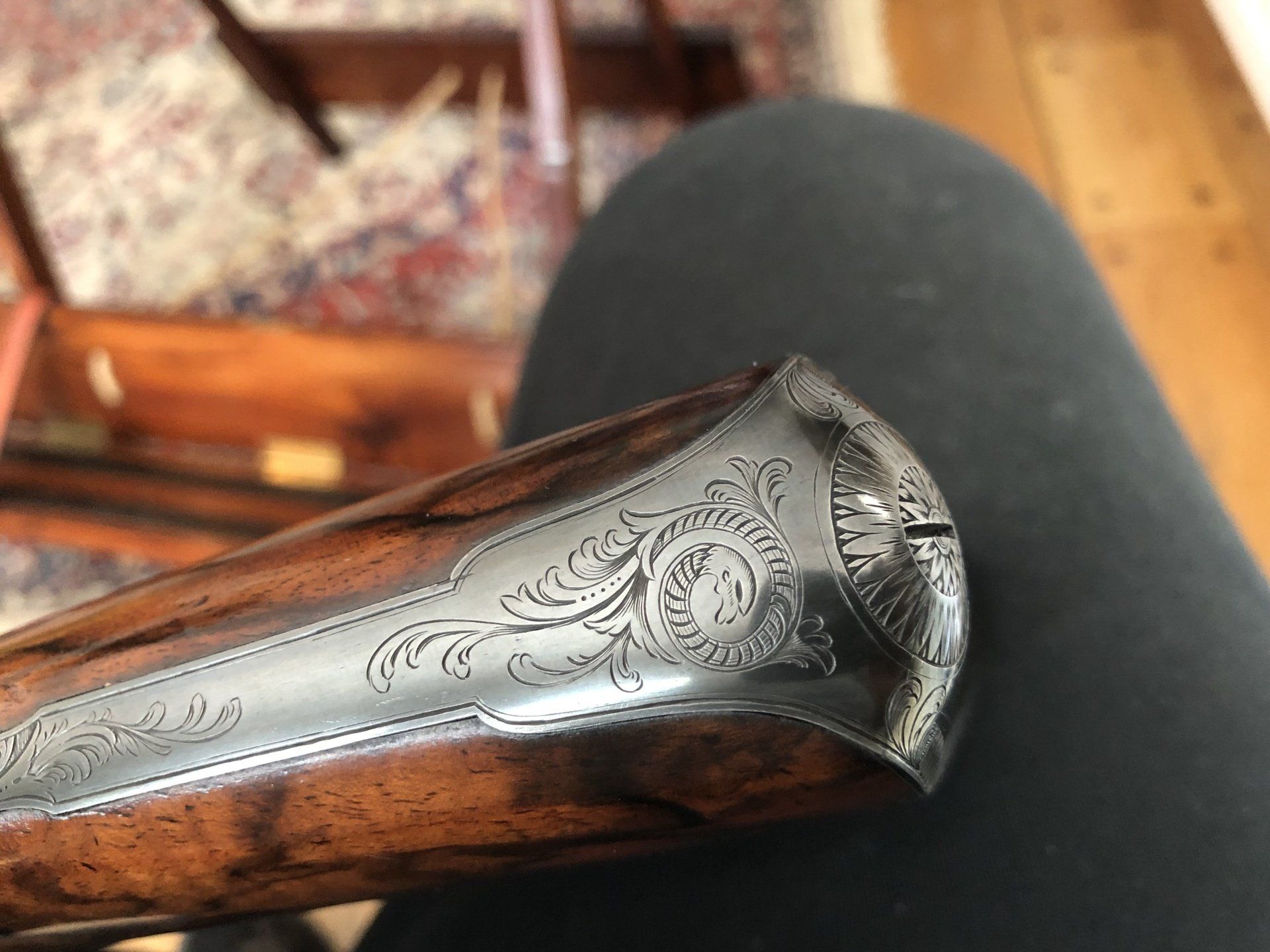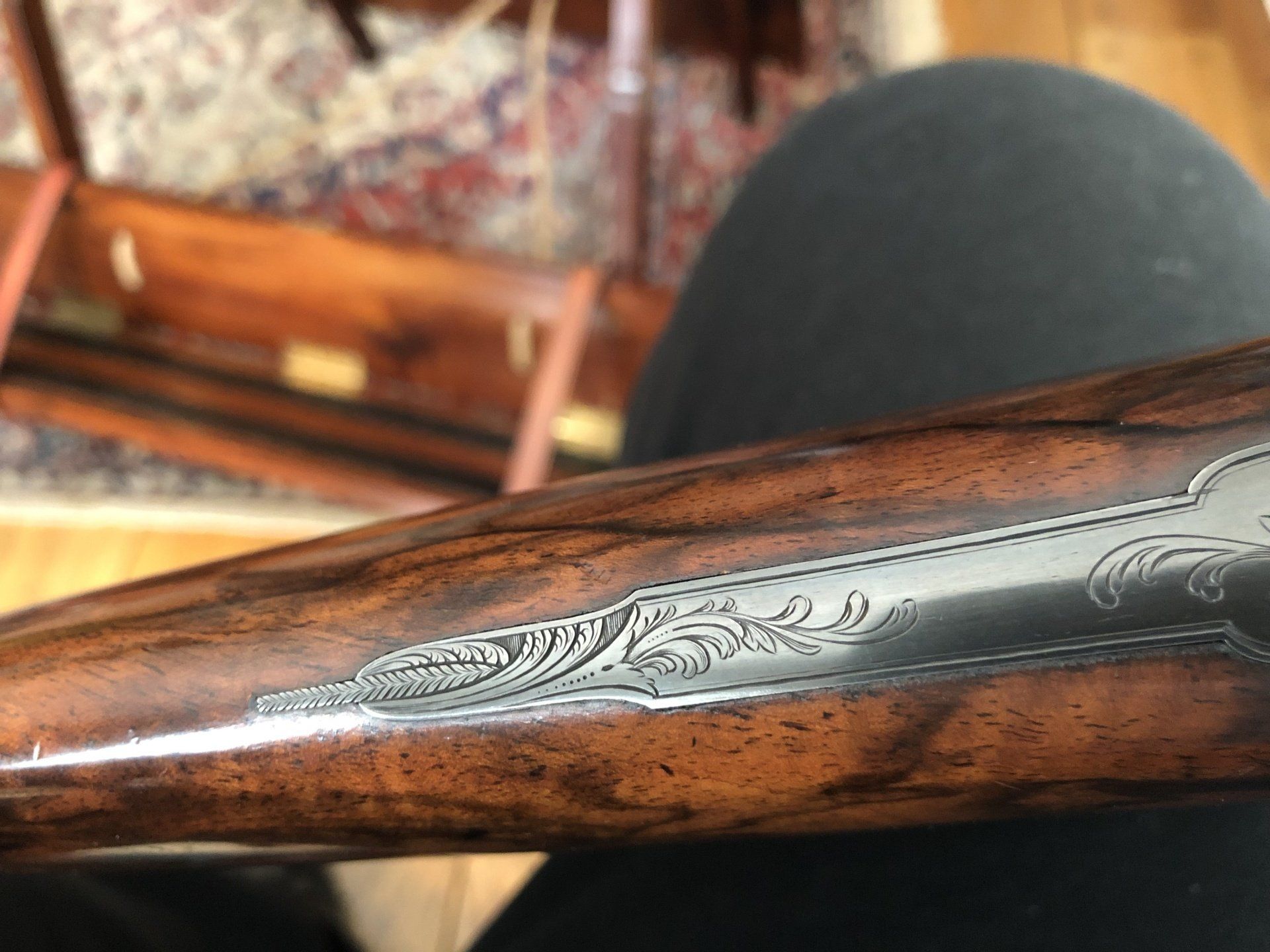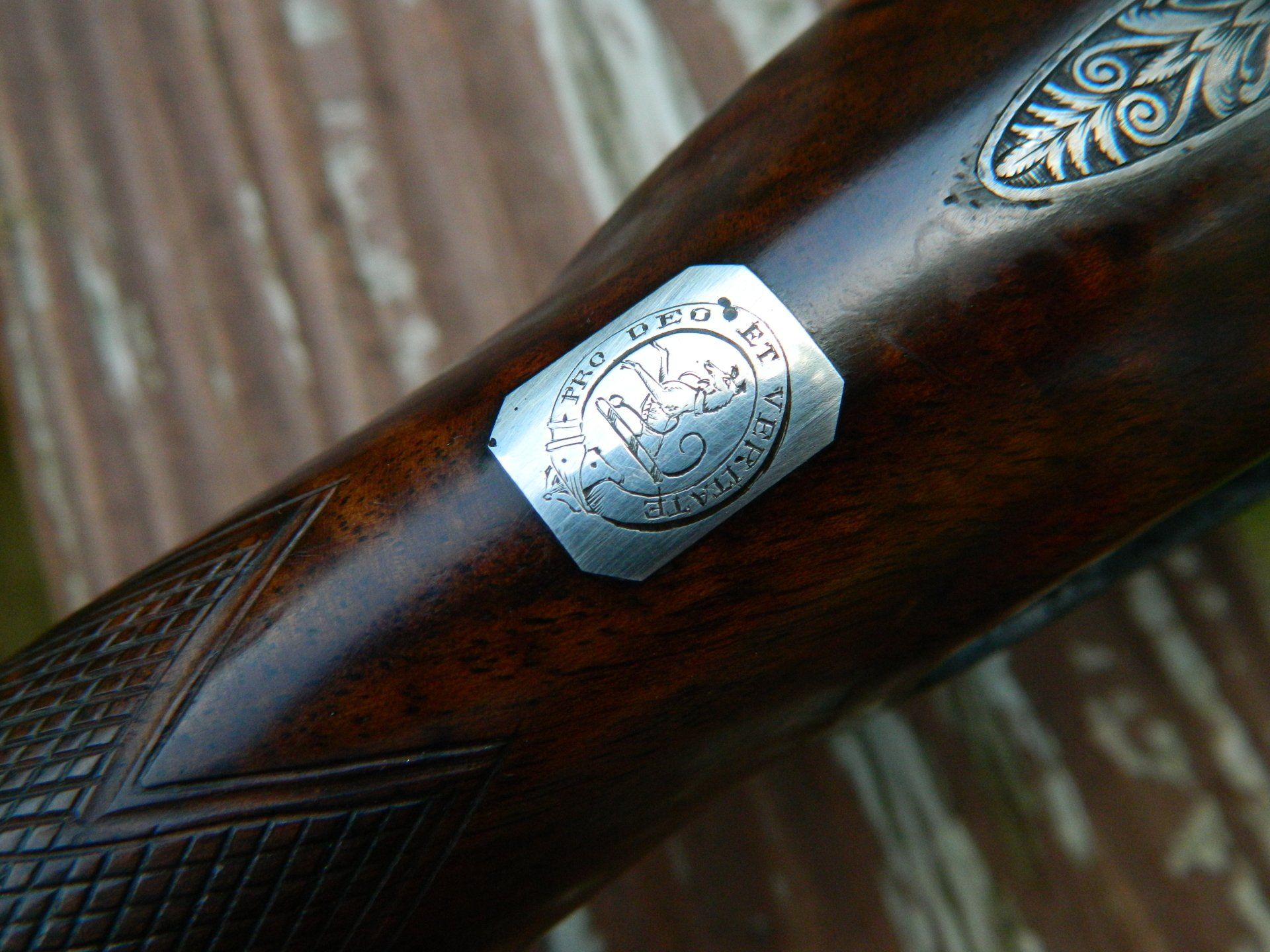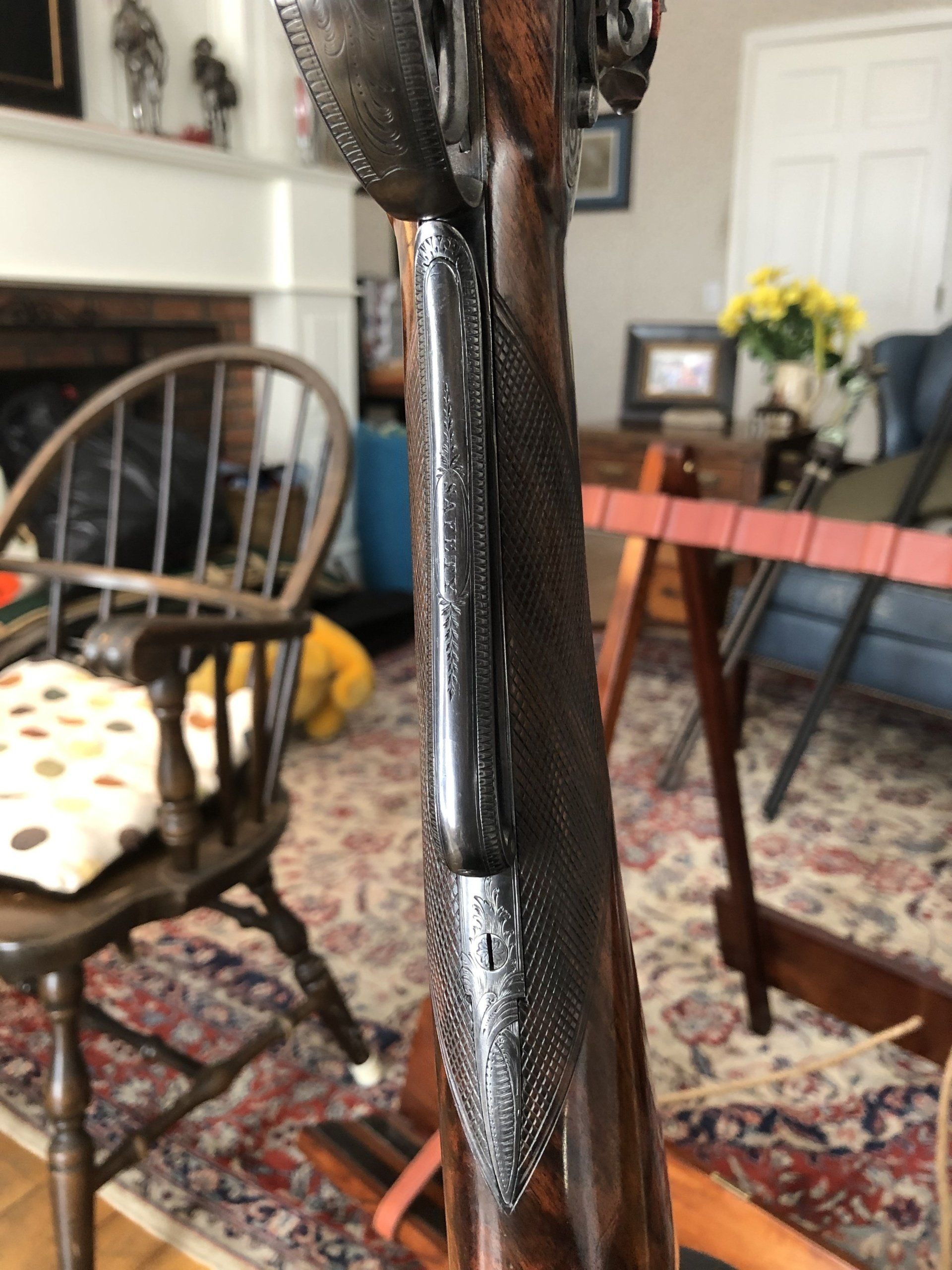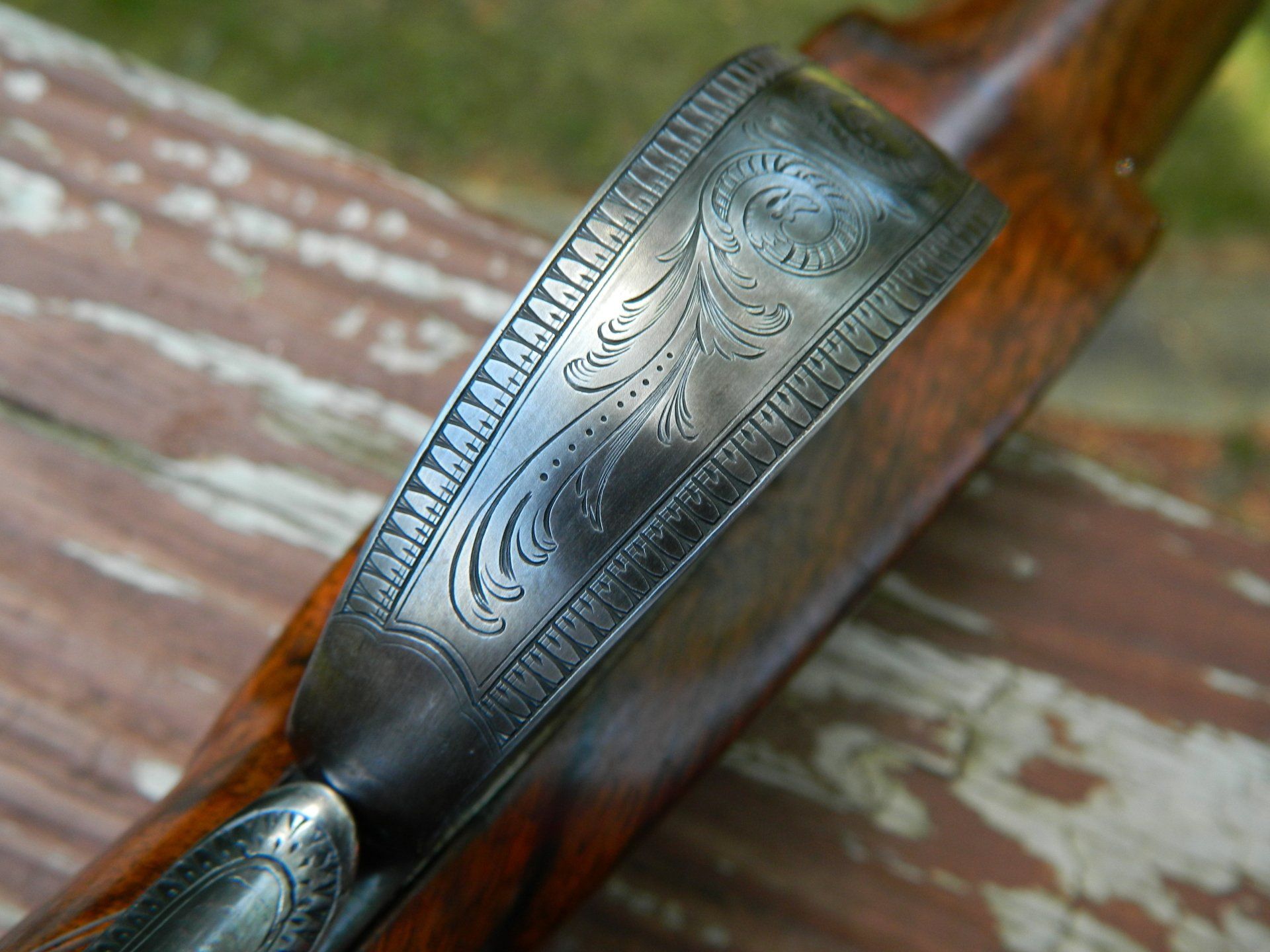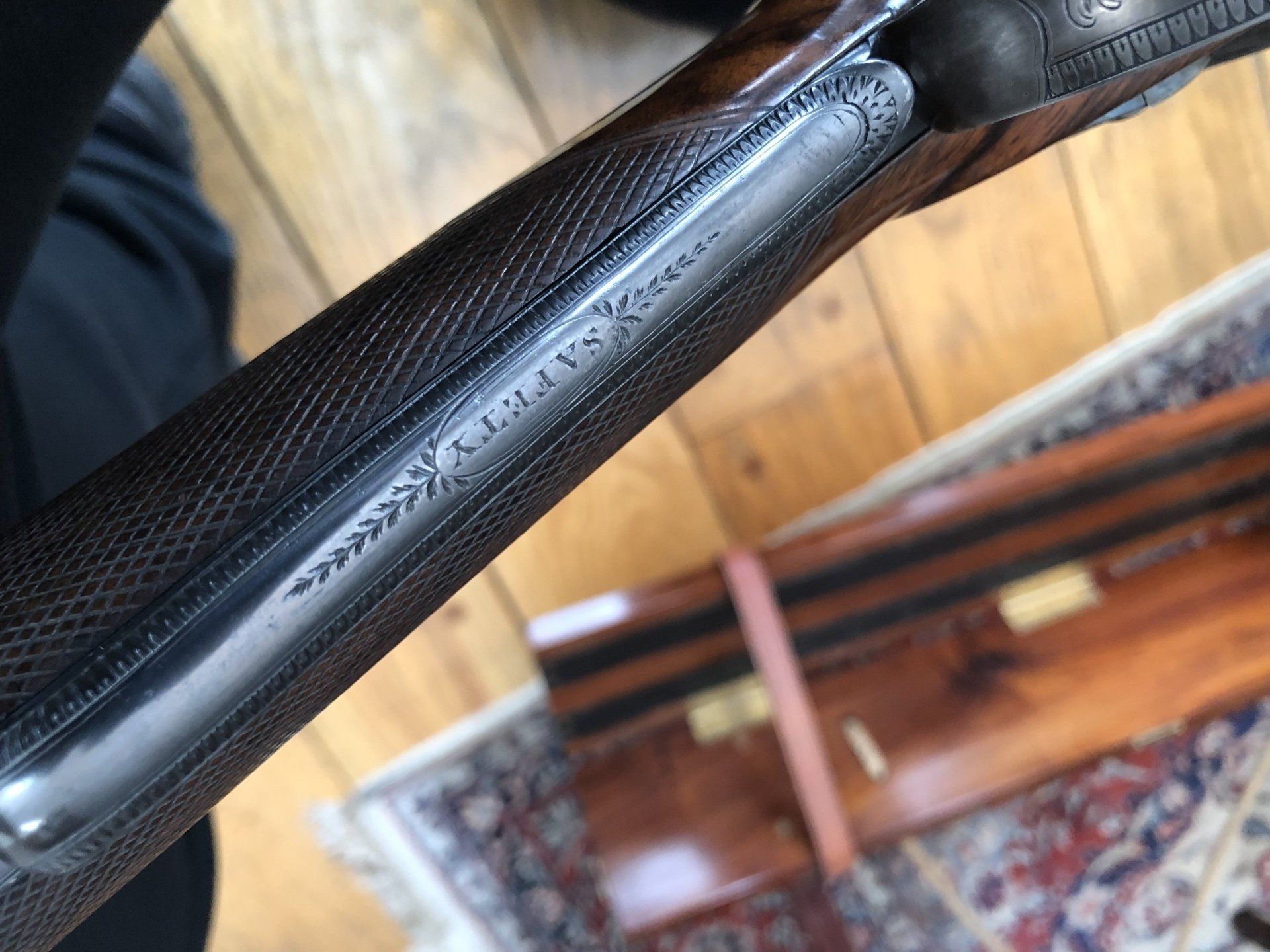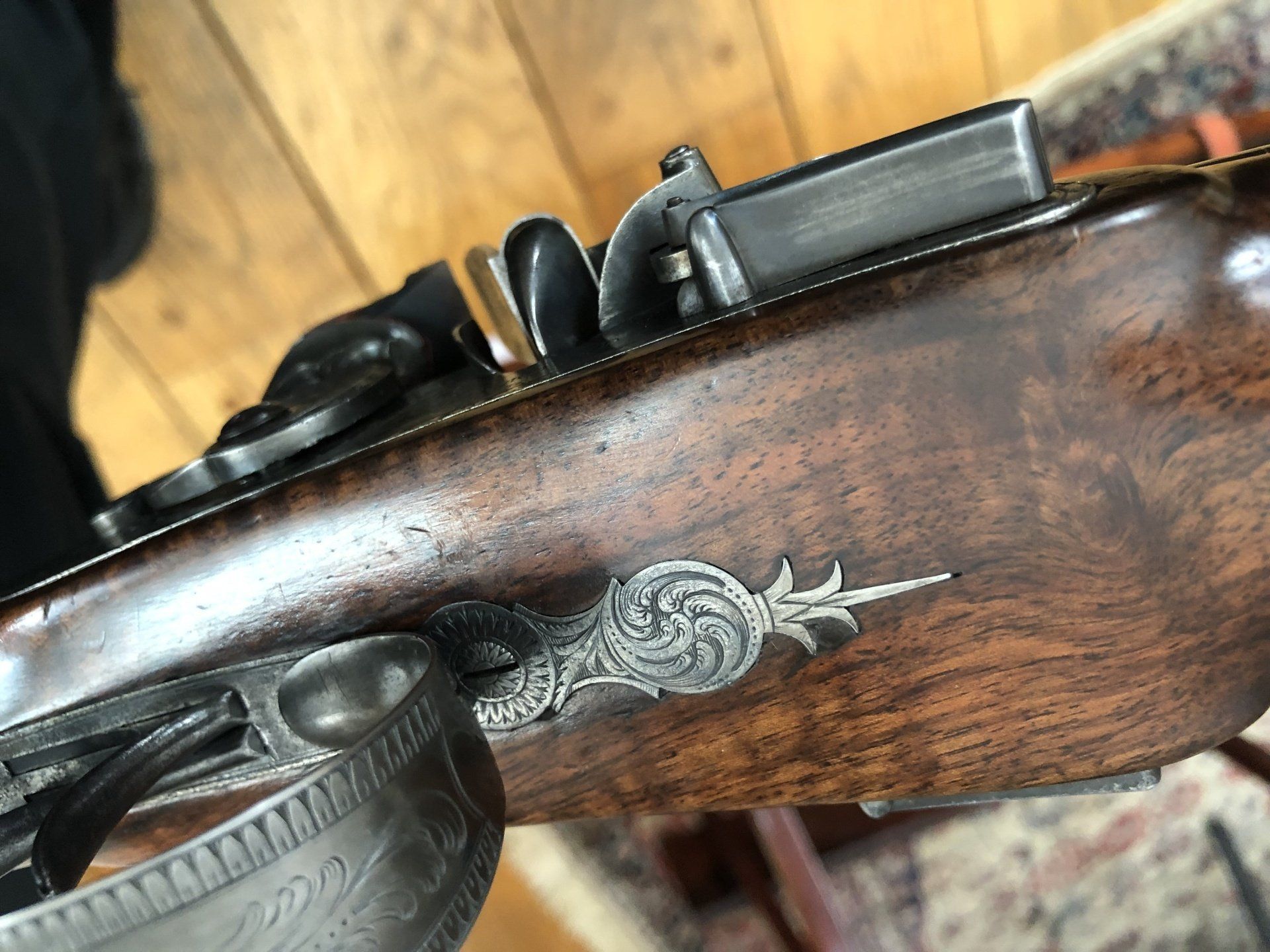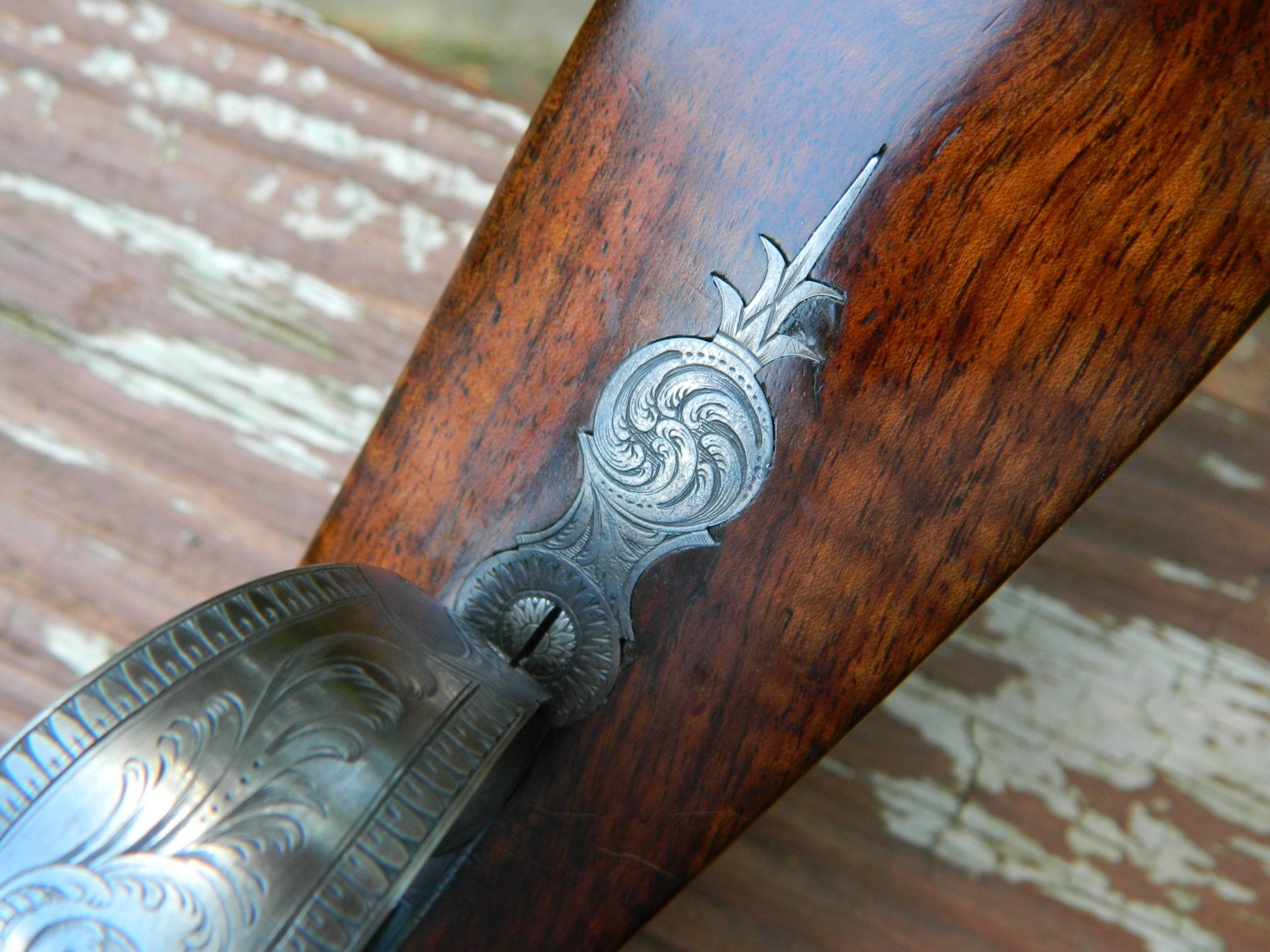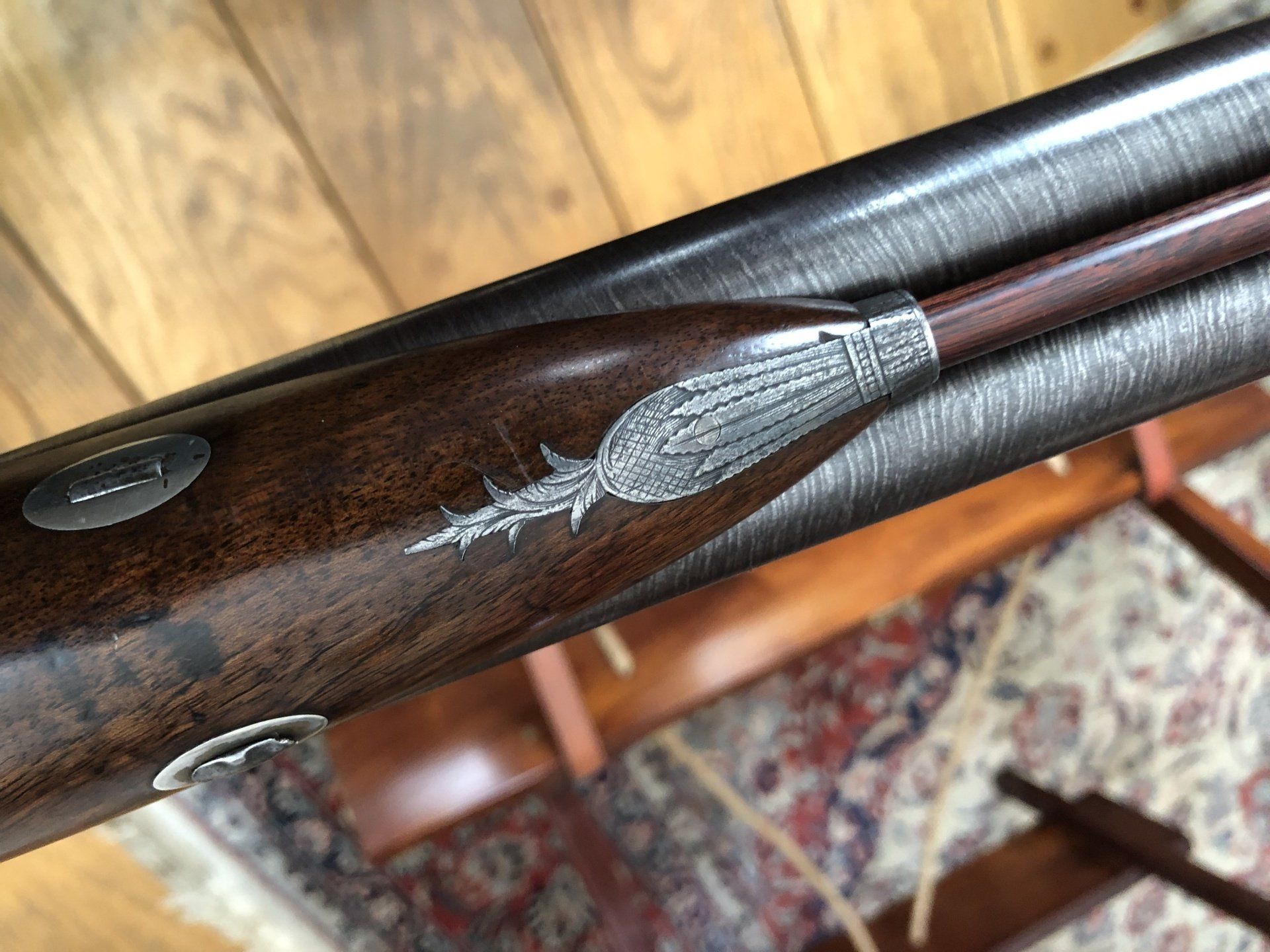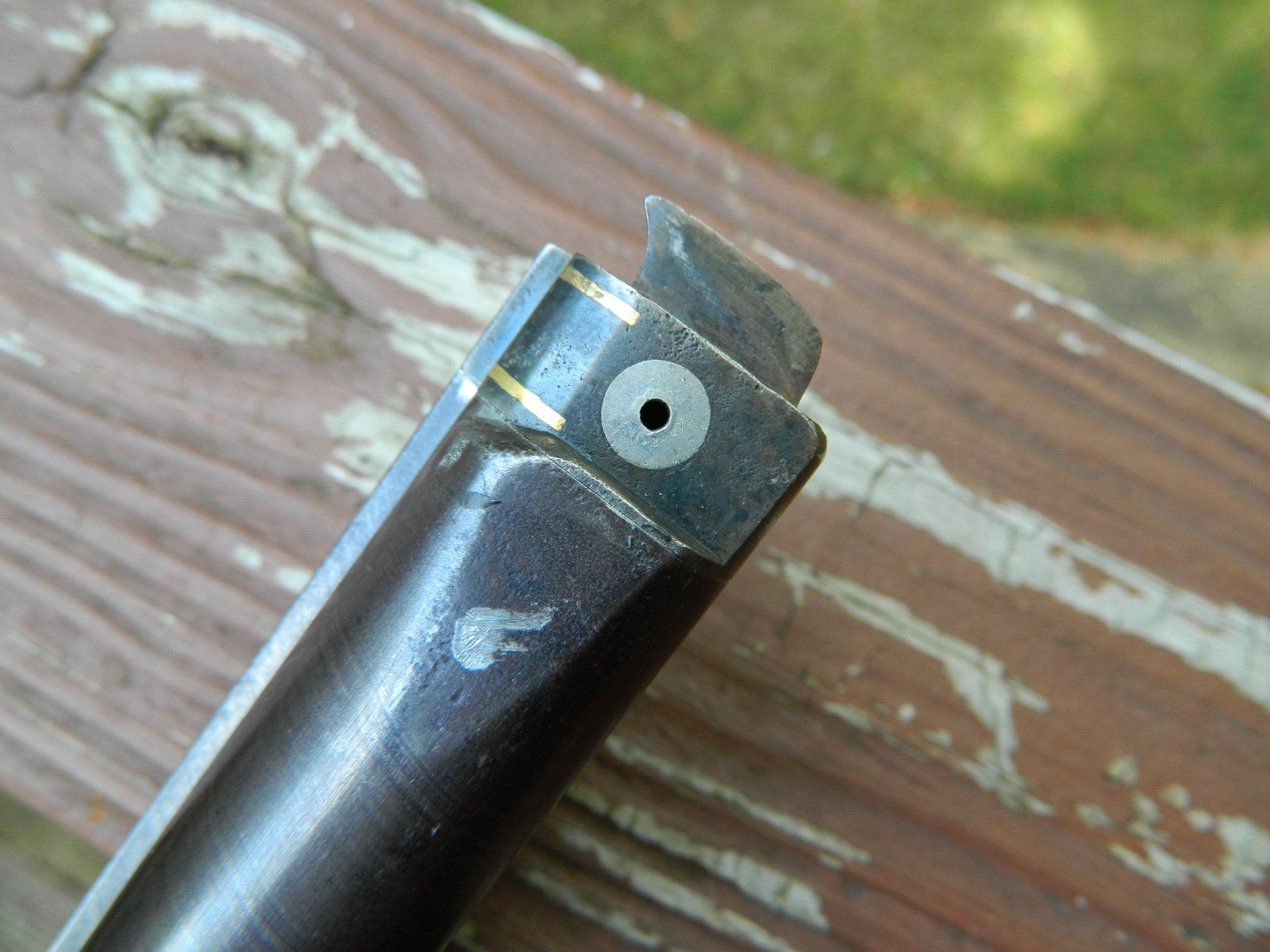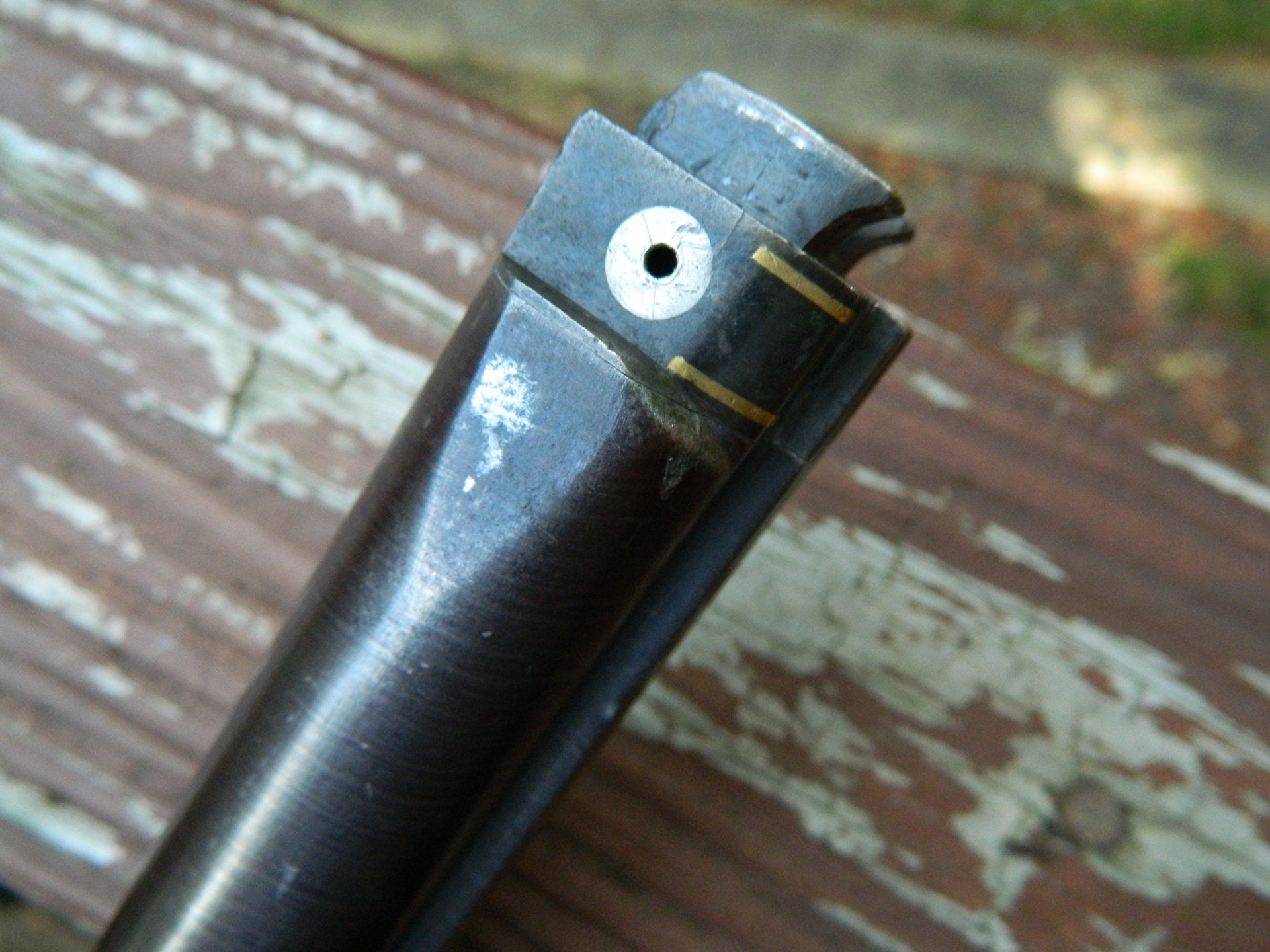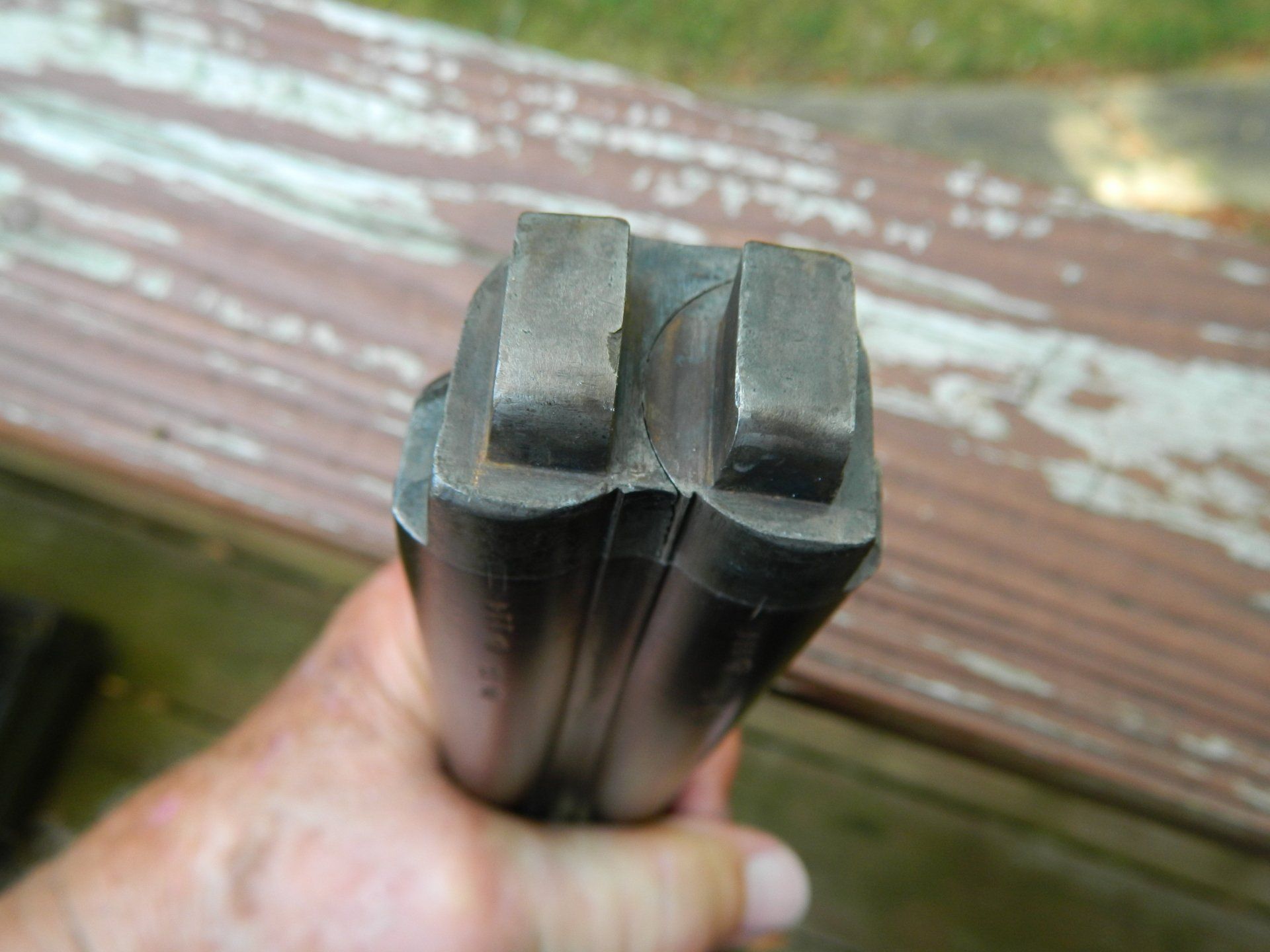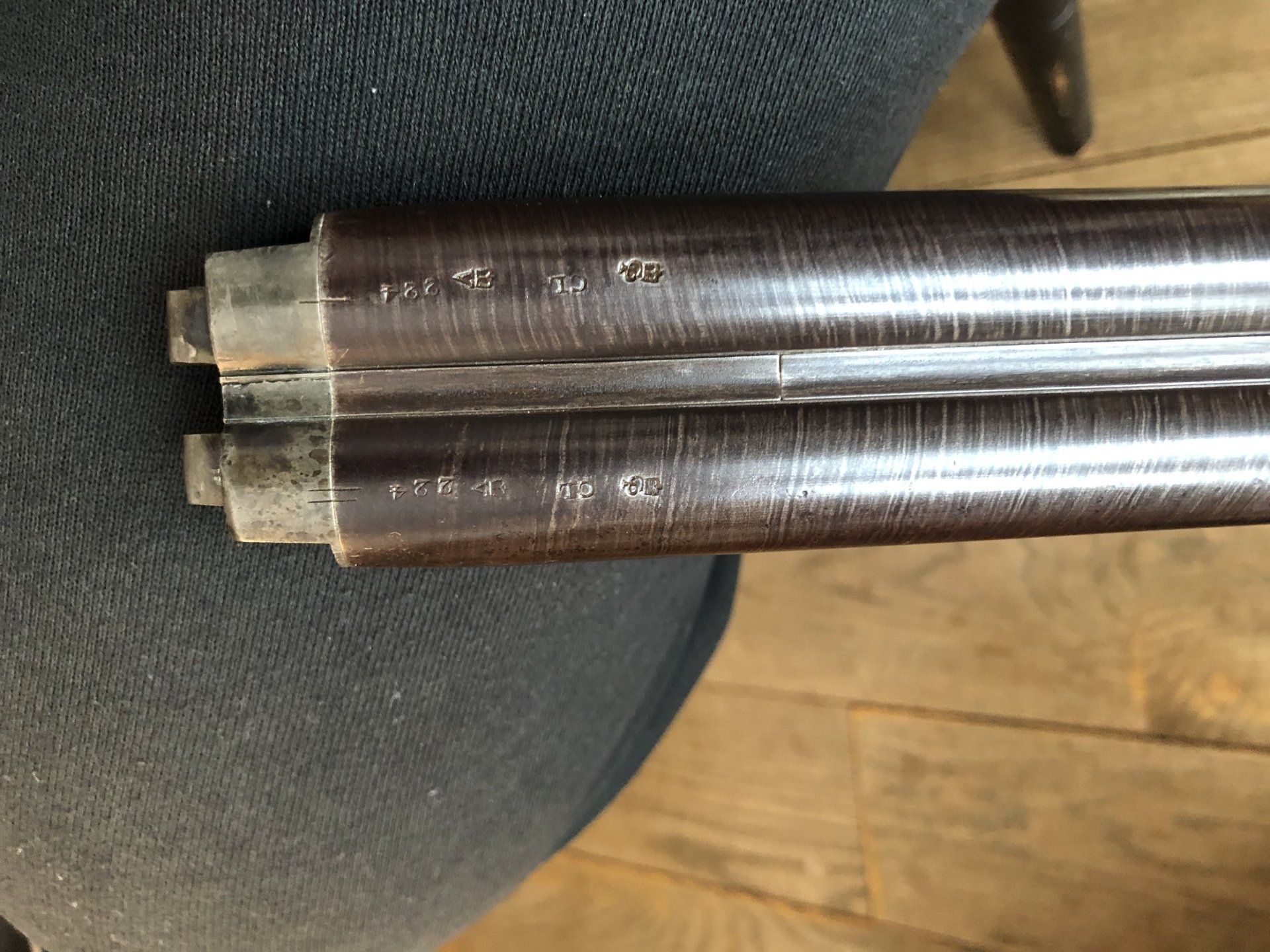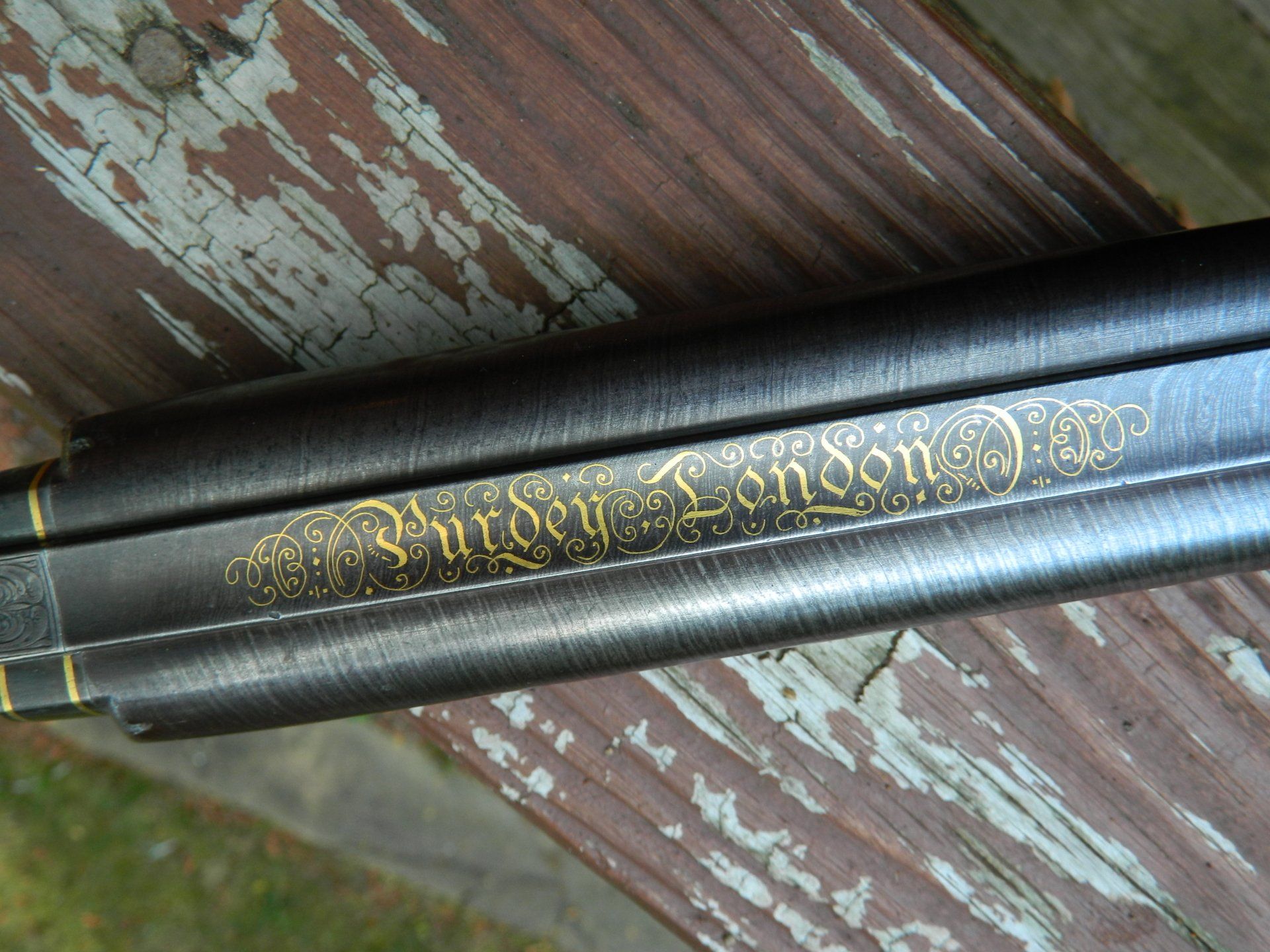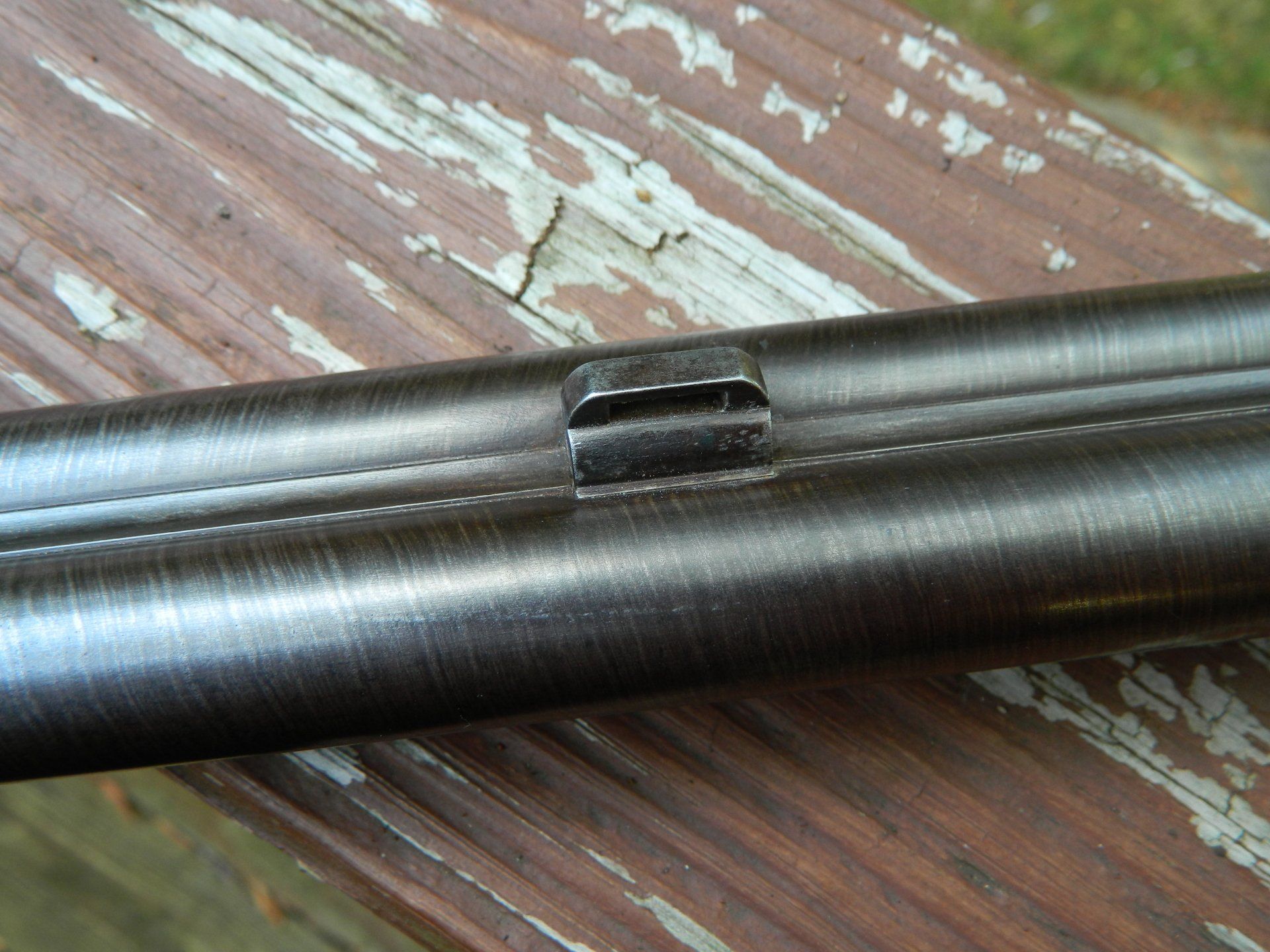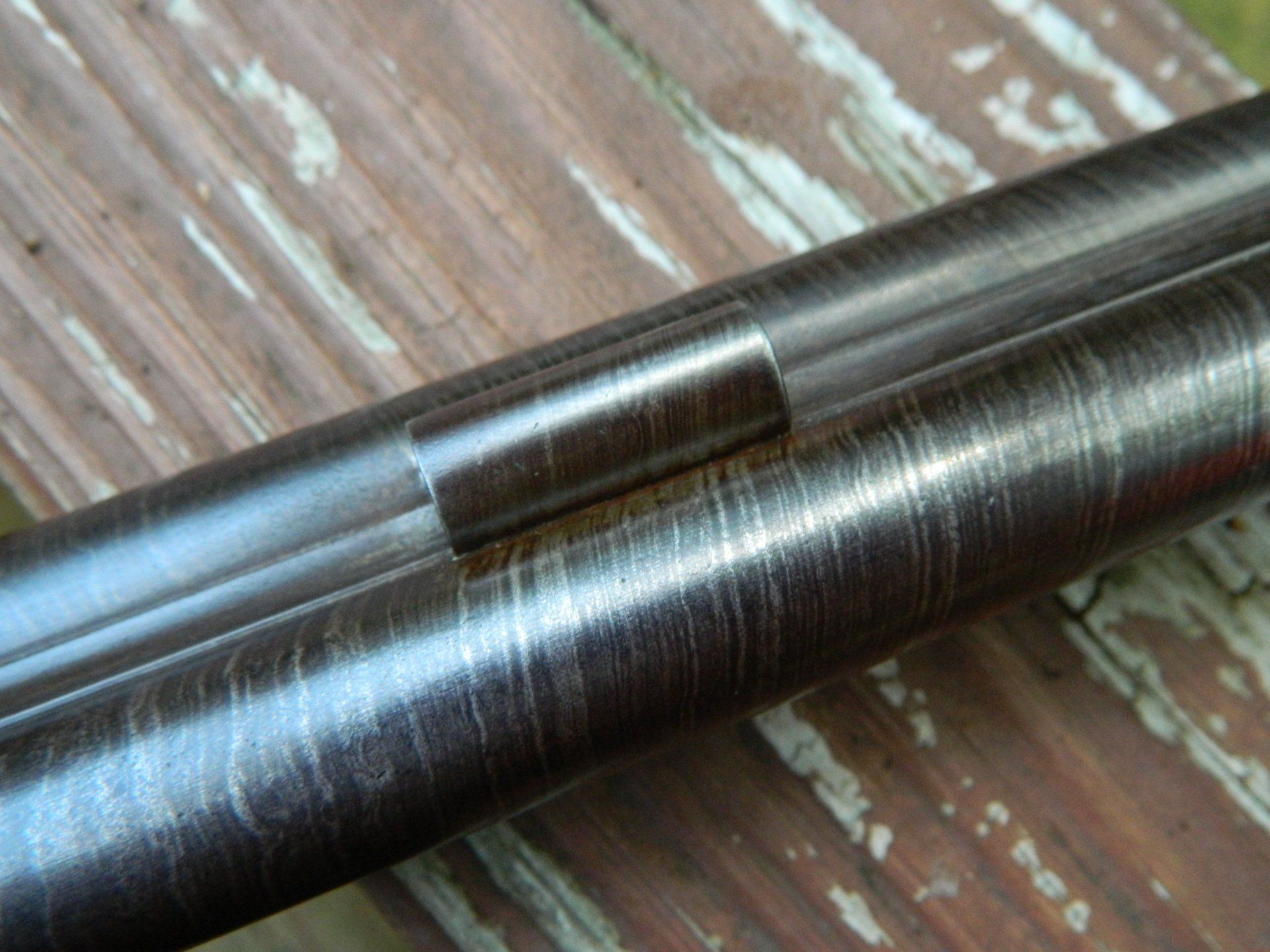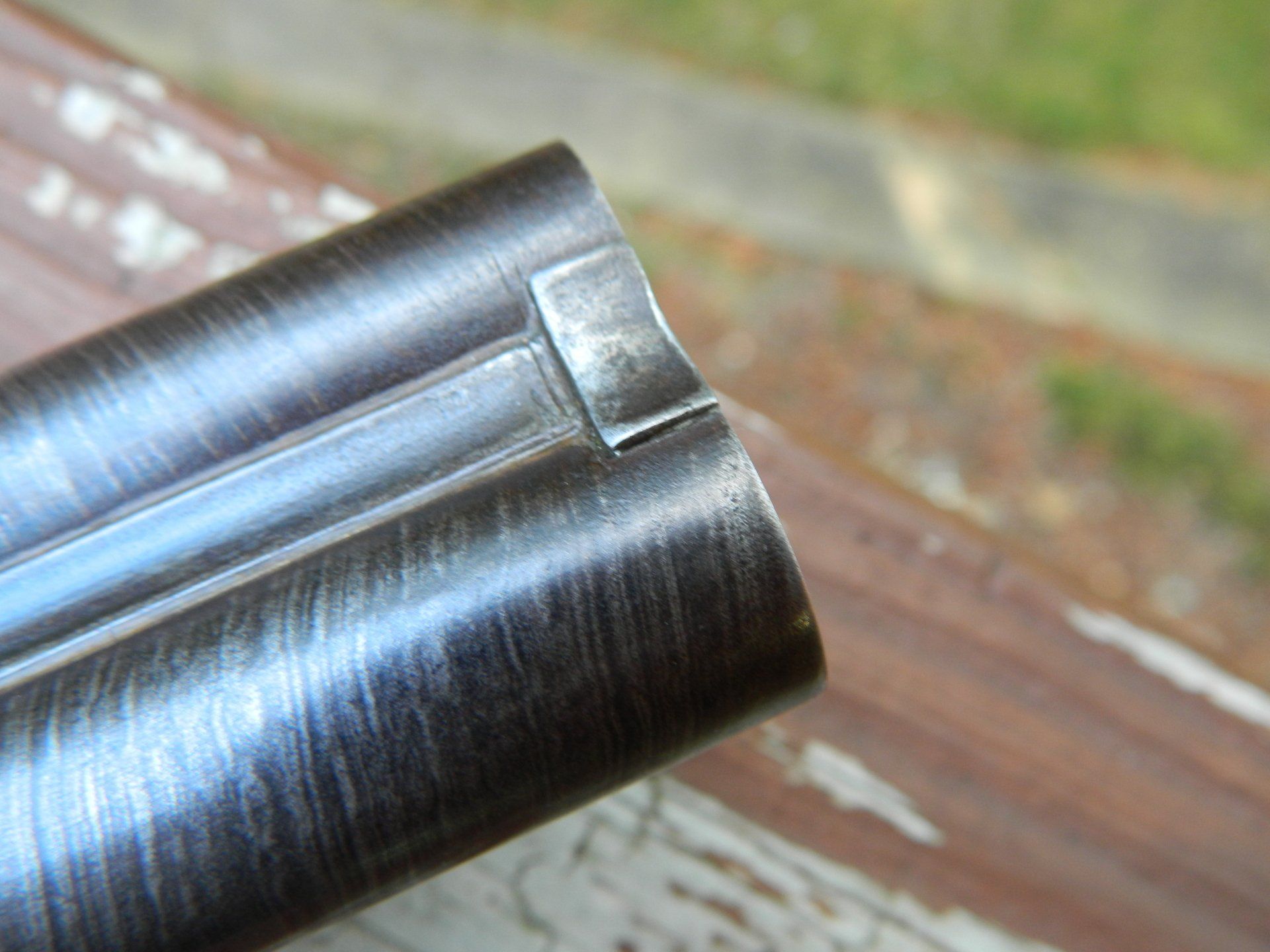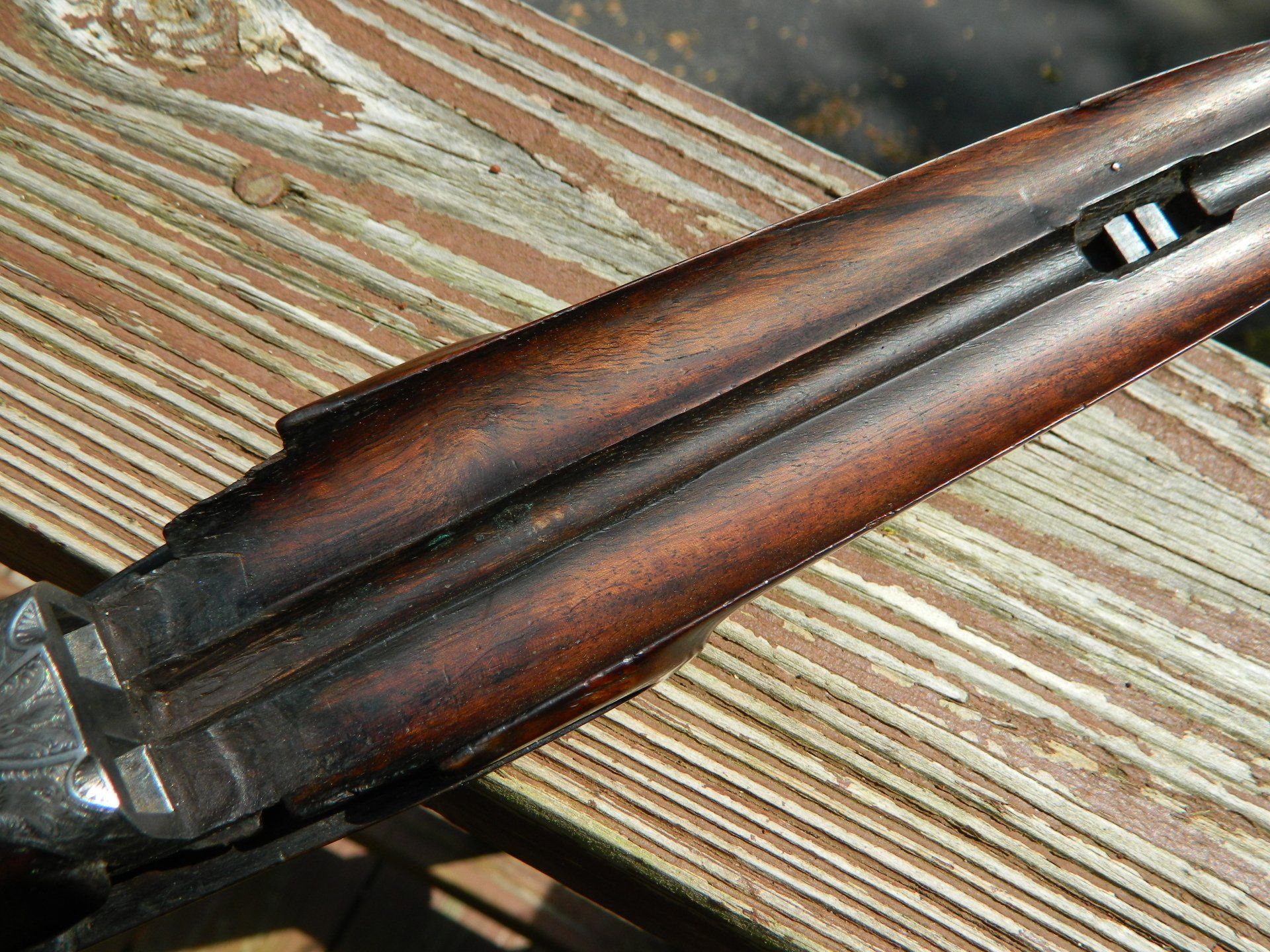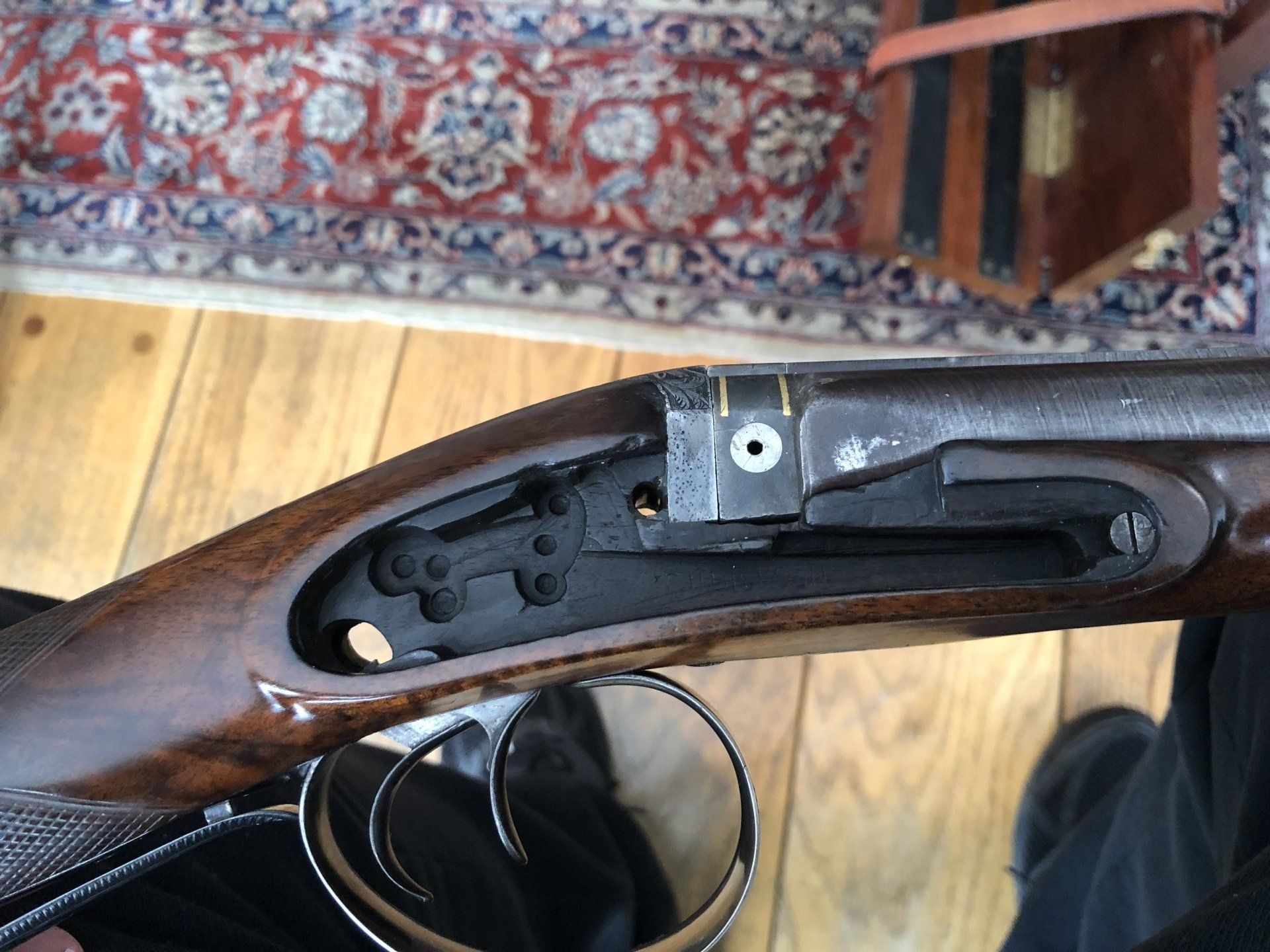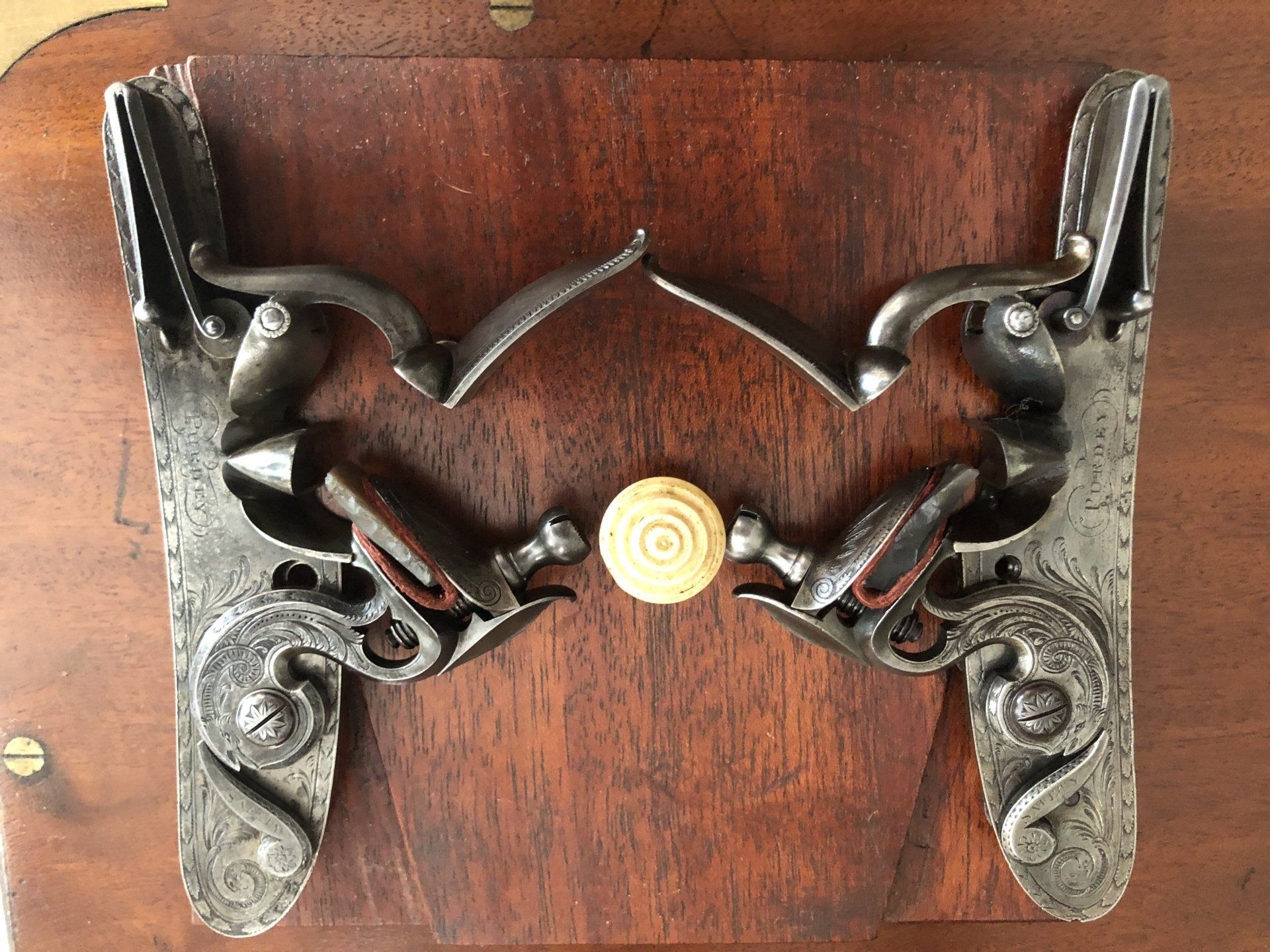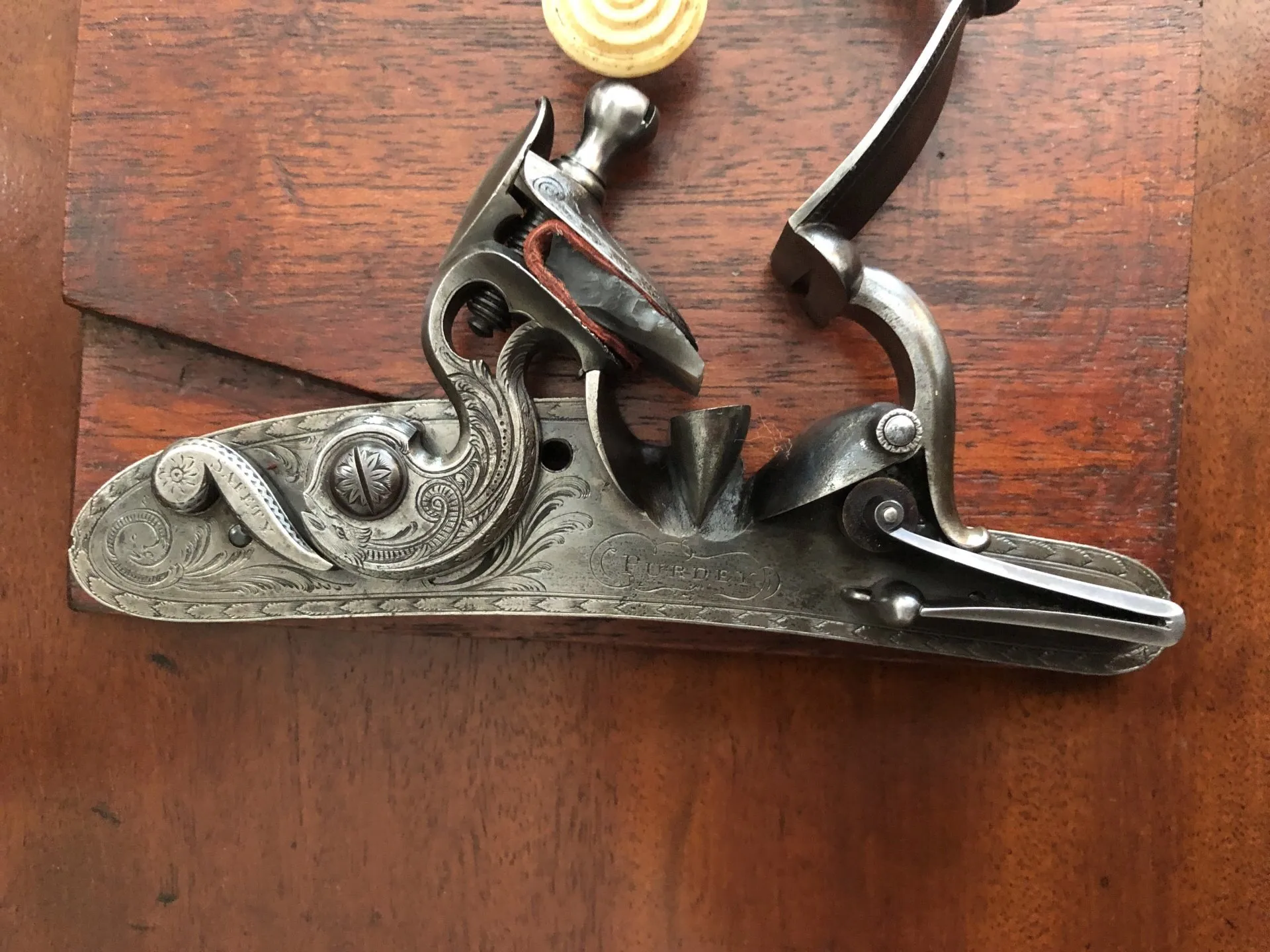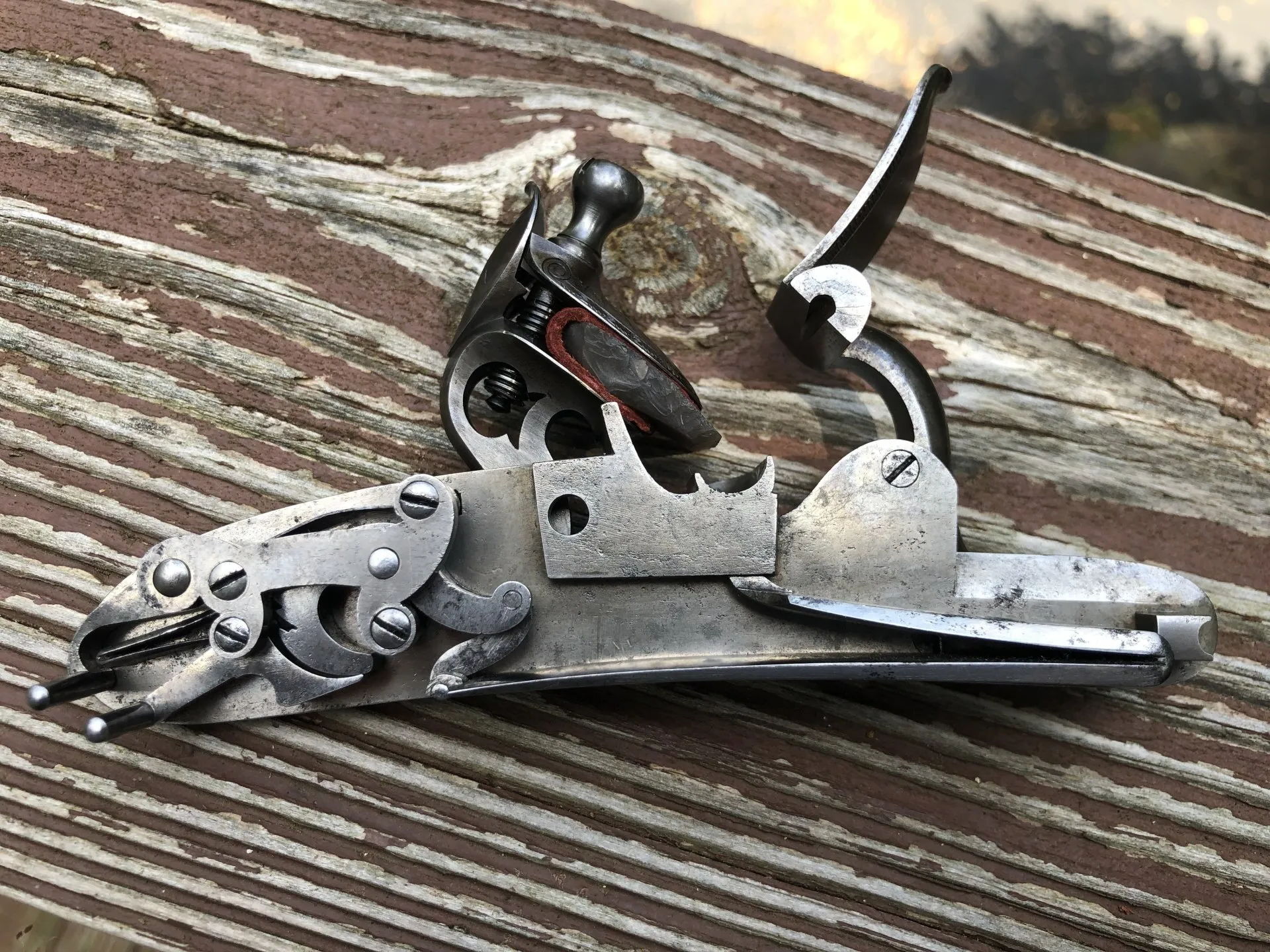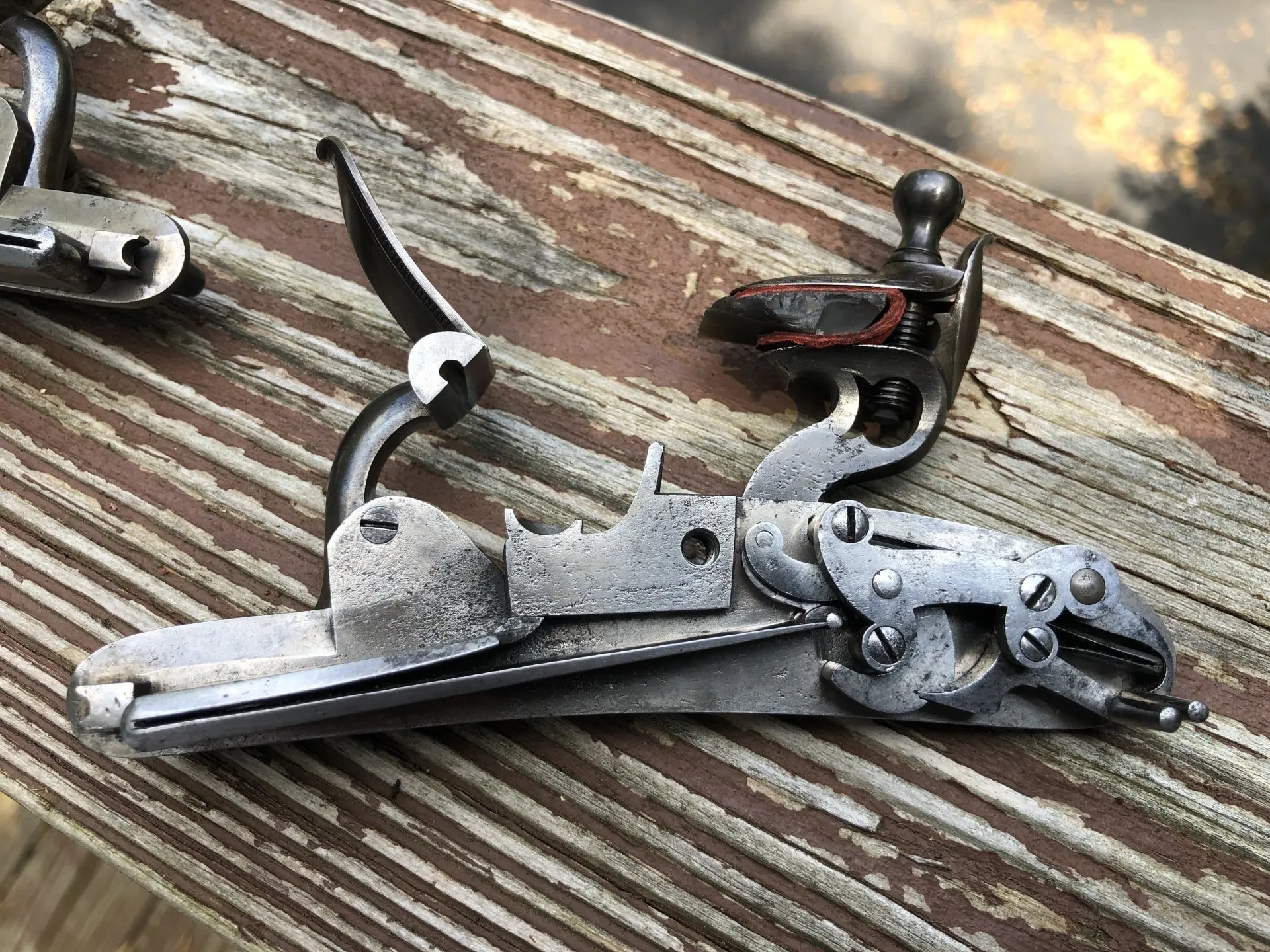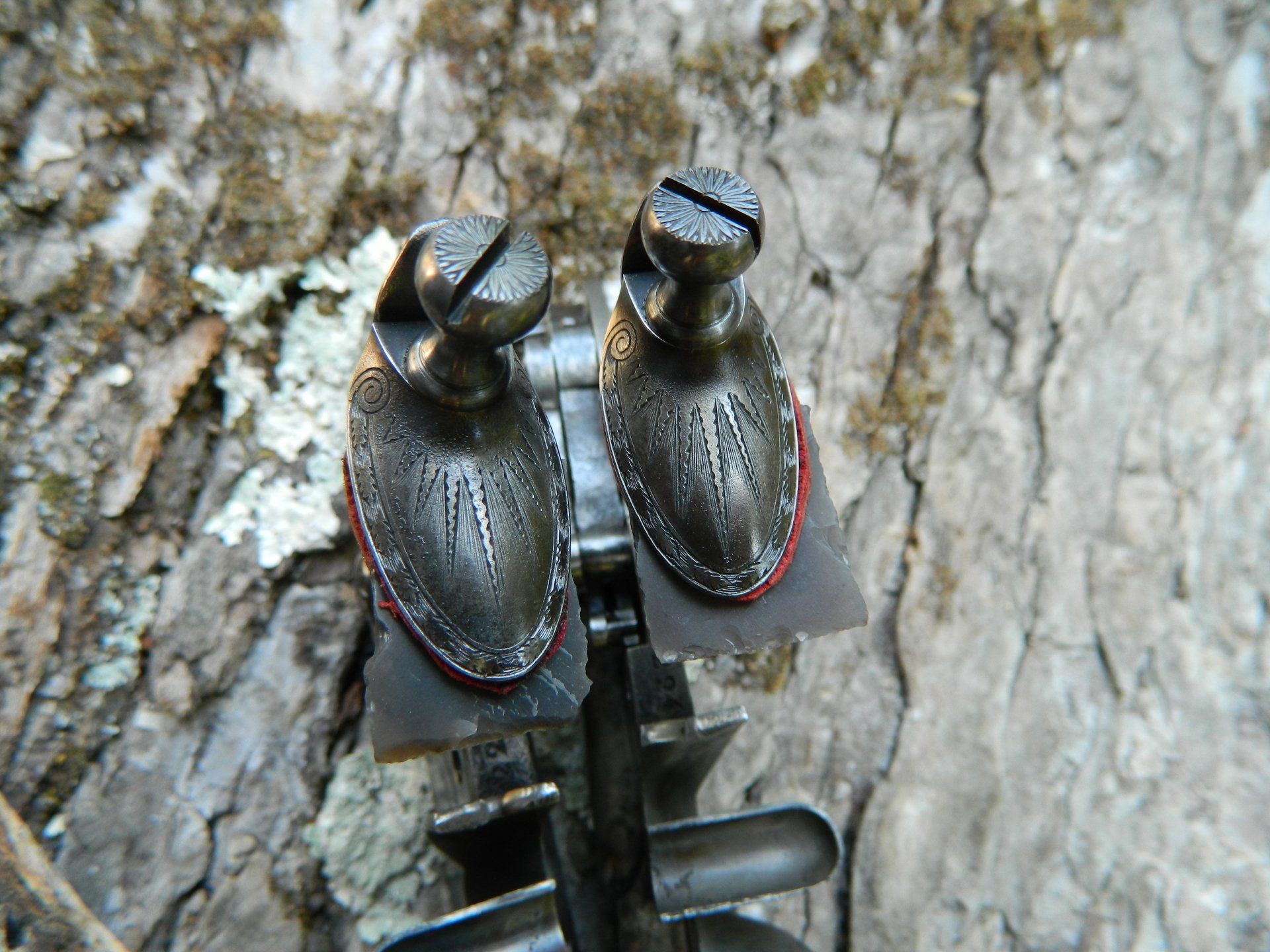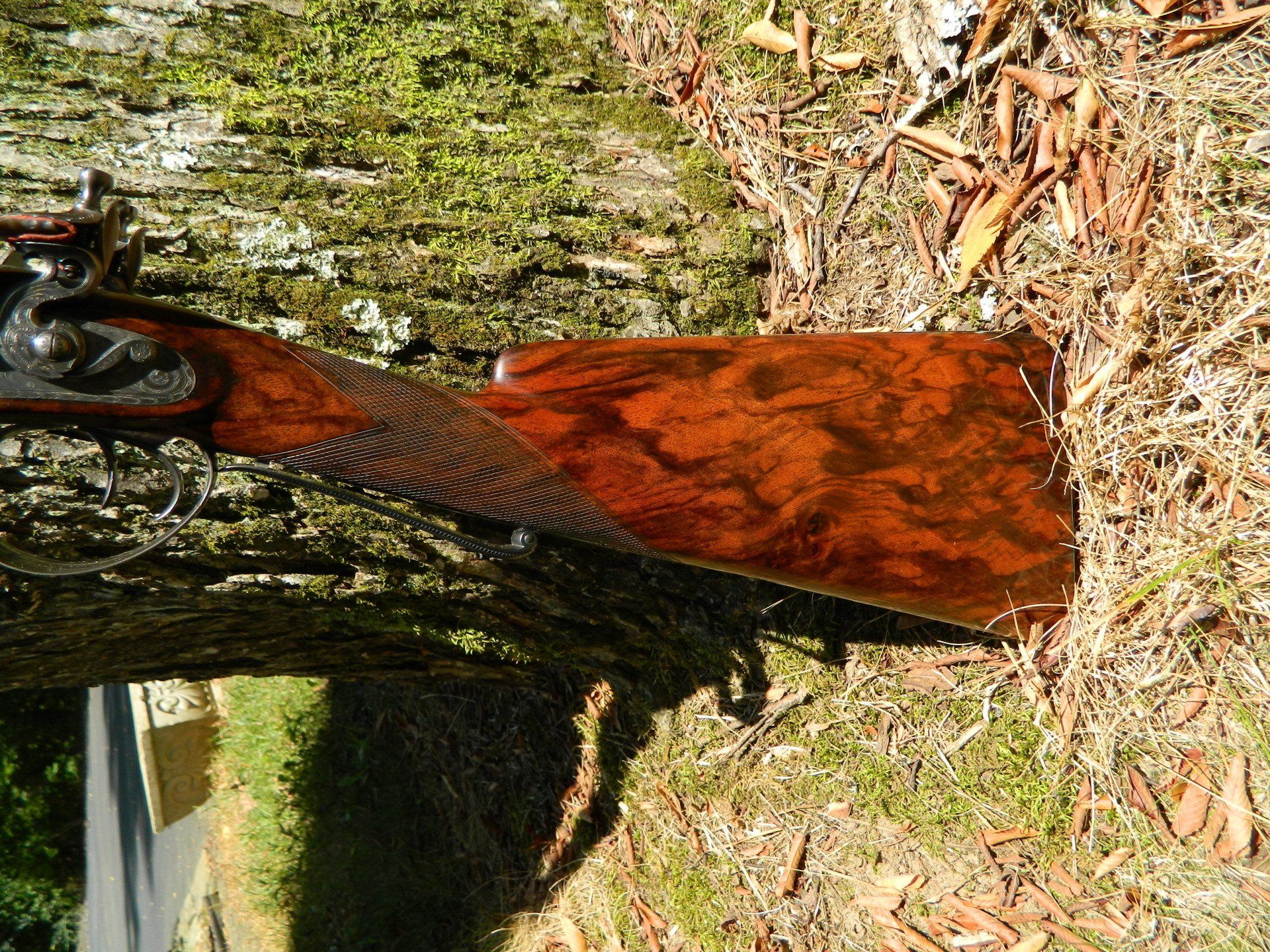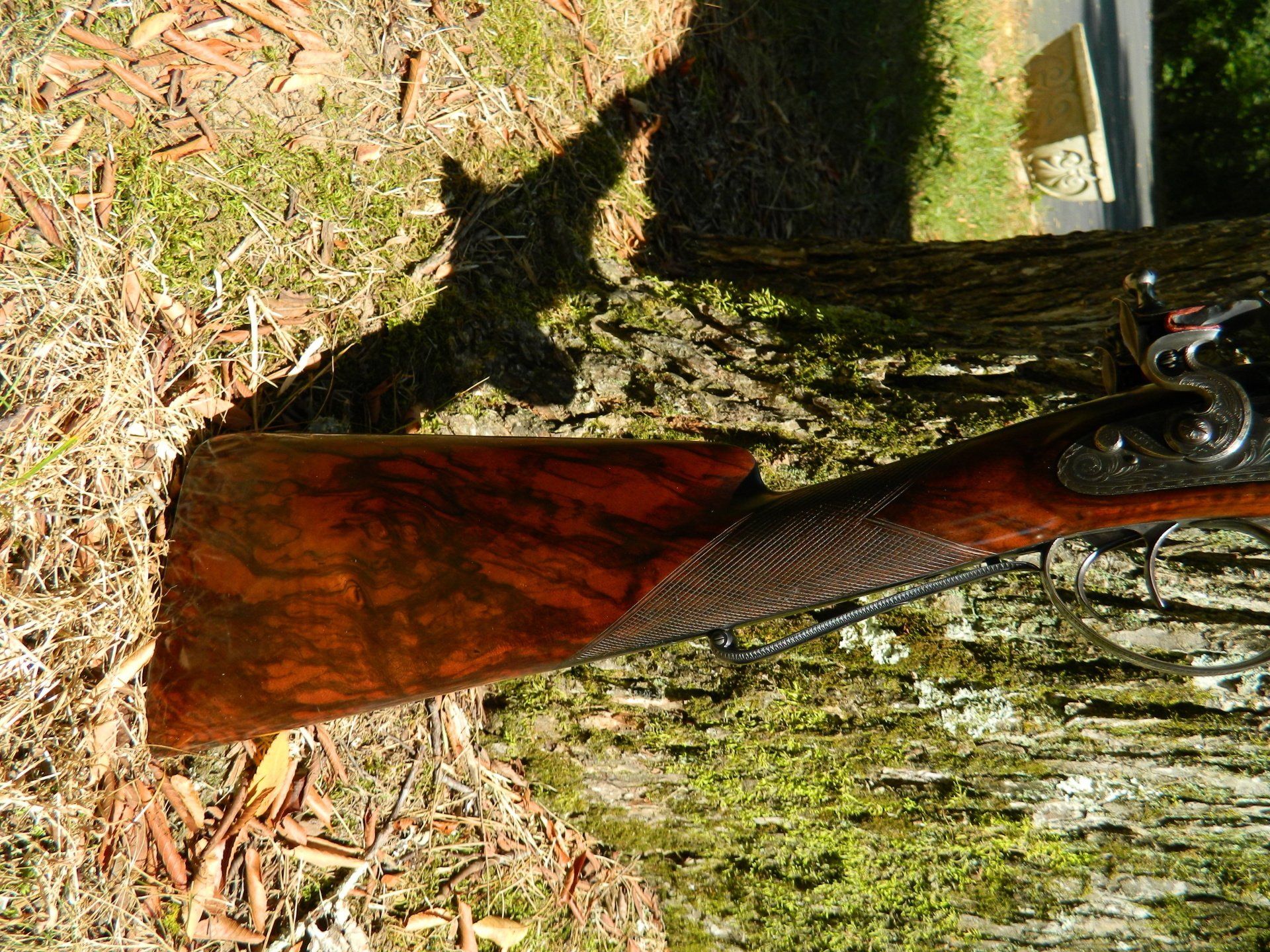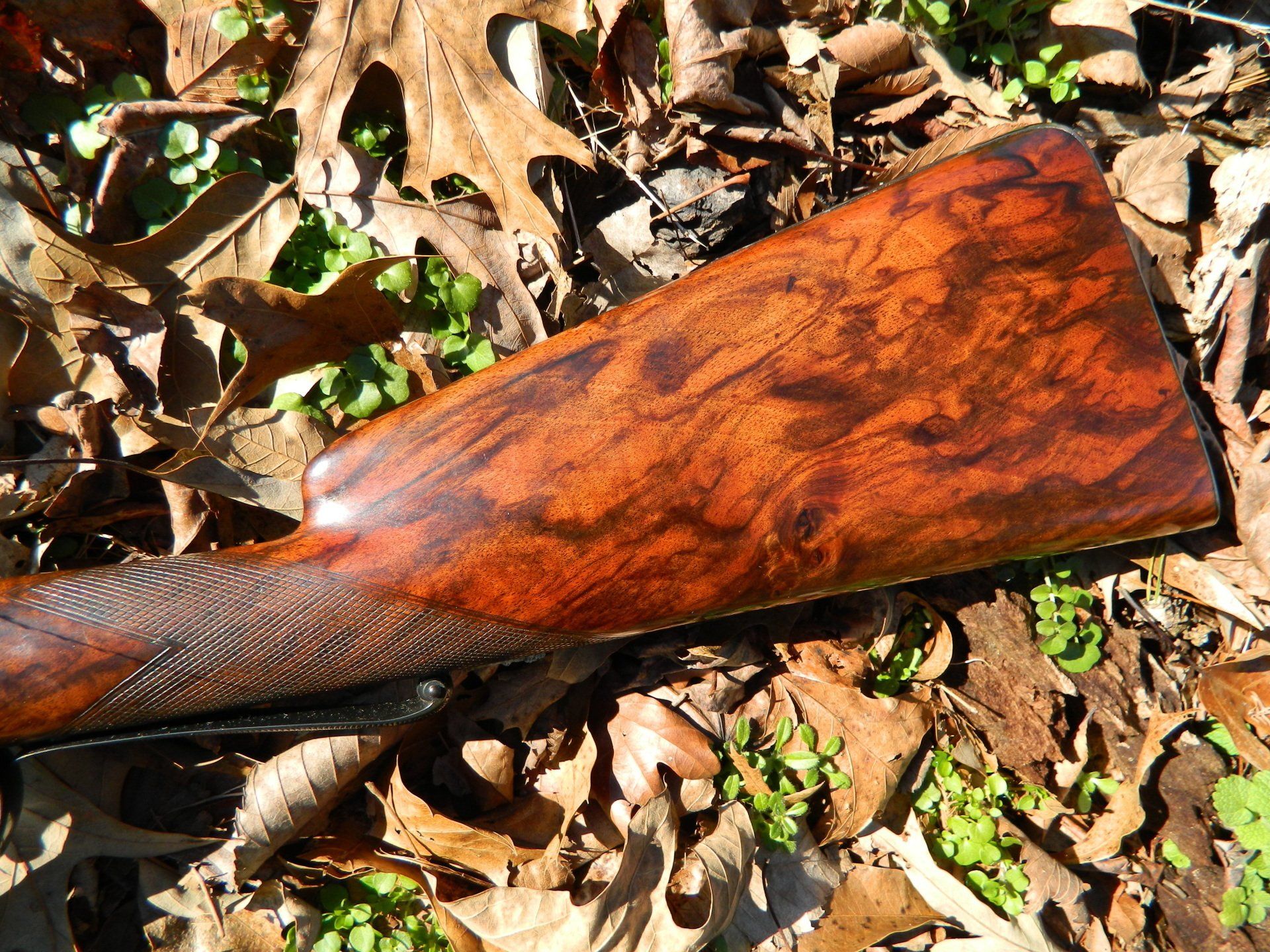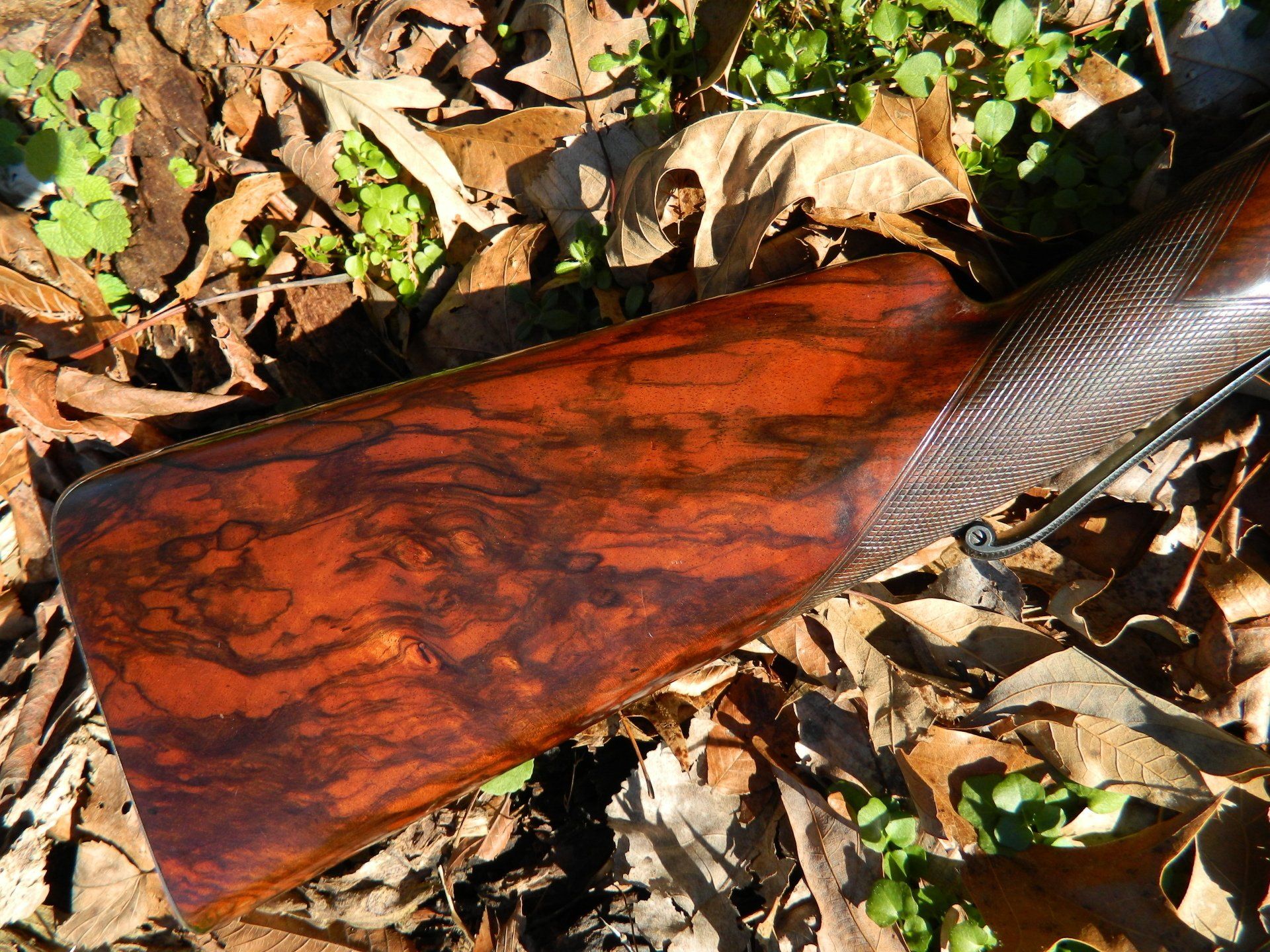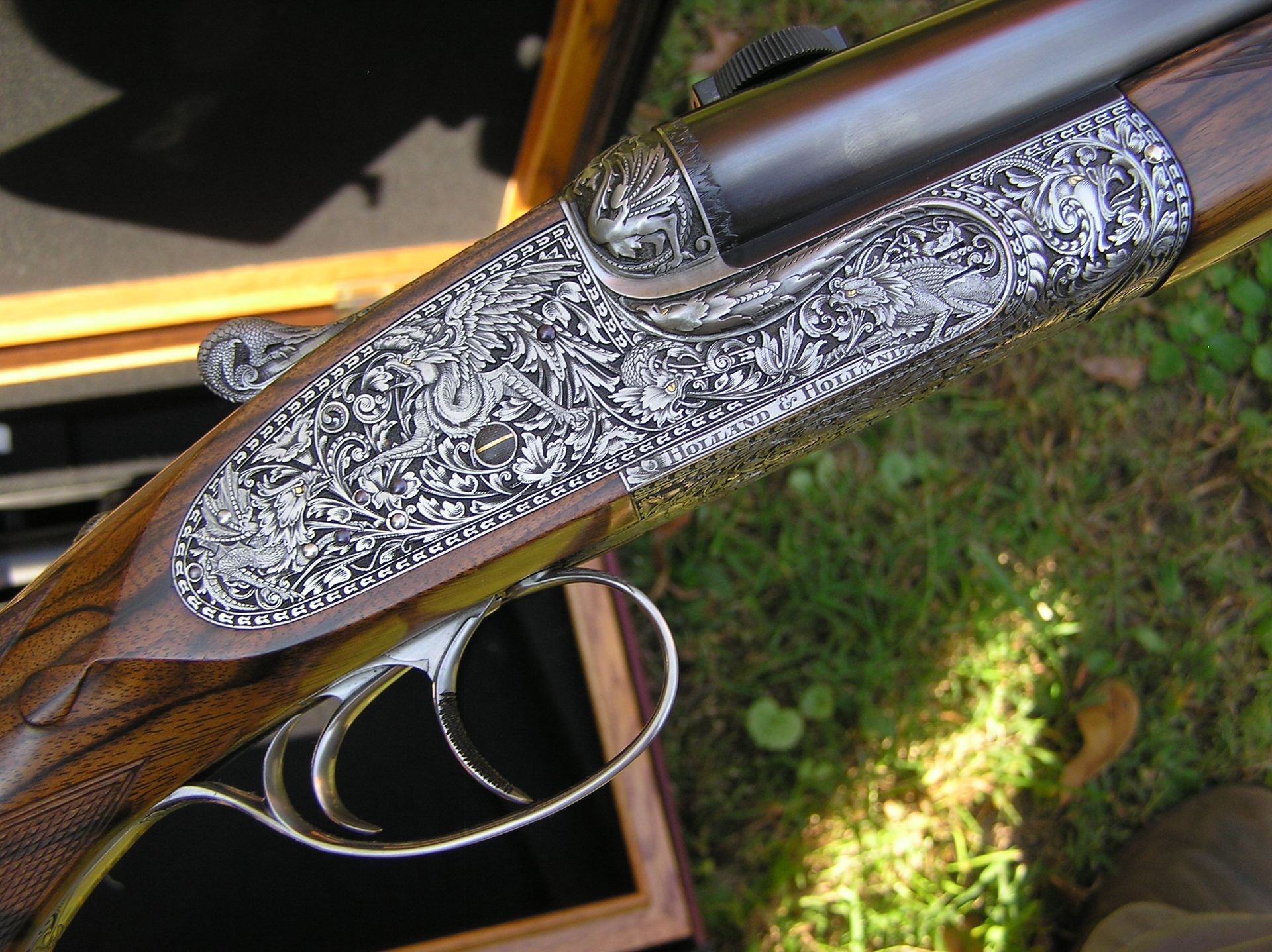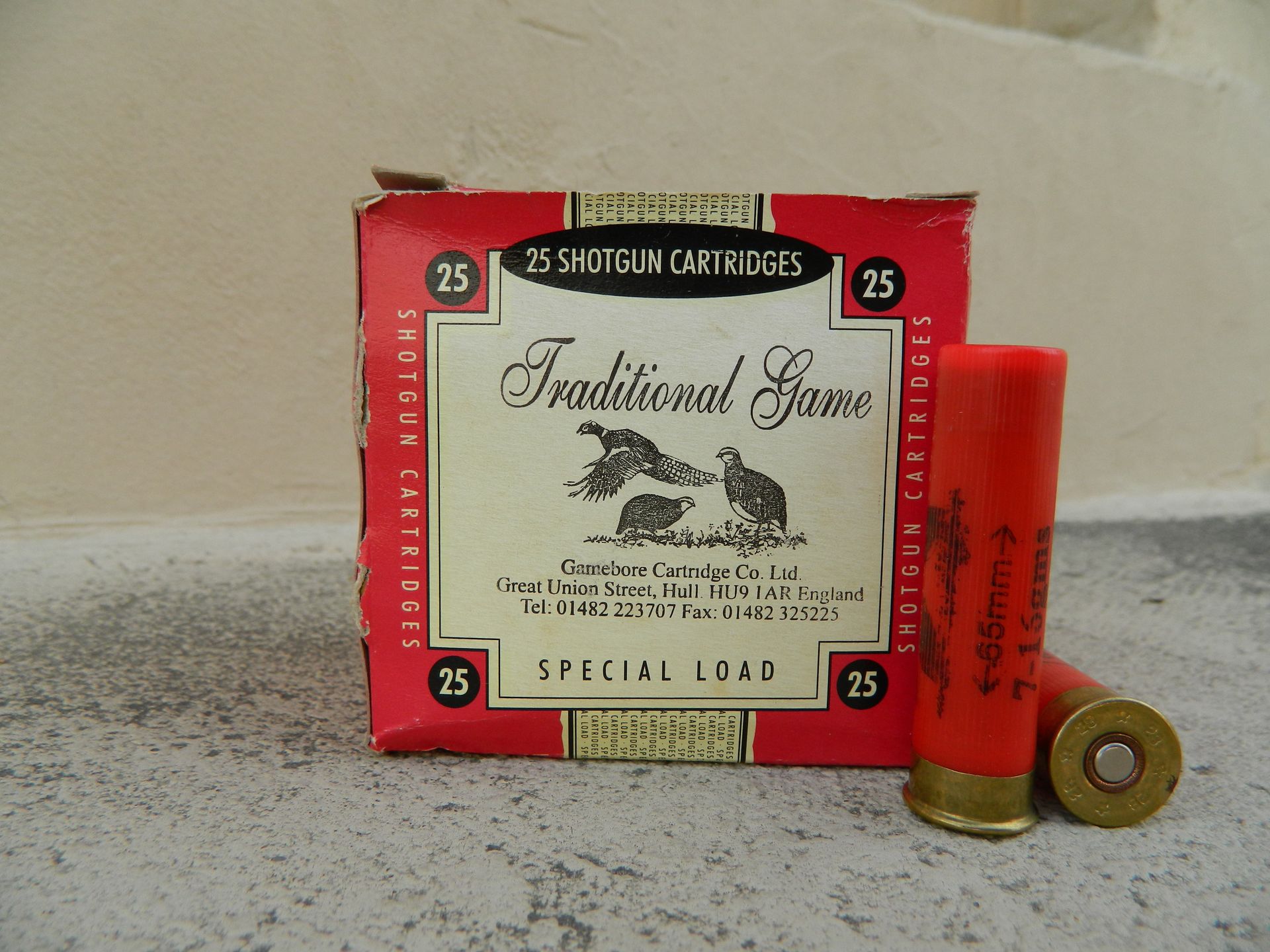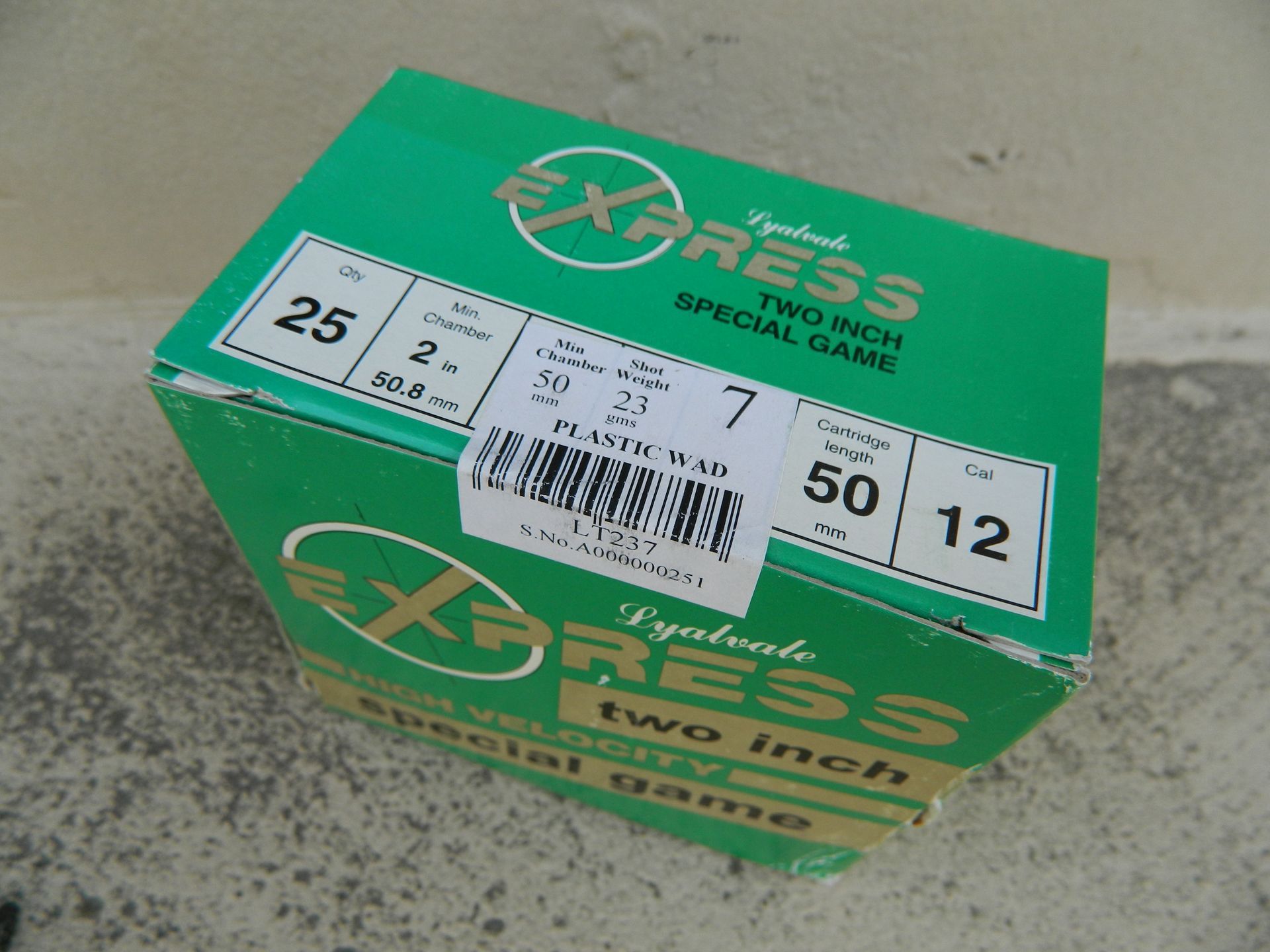James Purdey, London. Extraordinarily rare 15-bore, Double-barreled, flintlock Sporting Gun, #224, made for Rev. Edward Missenden Love, Rector of Somersby, Yarmouth, in 1820. SOLD
James Purdey, London. Extraordinarily rare 15-bore, Double-barreled, flintlock Sporting Gun, #224, made for Rev. Edward Missenden Love, Rector of Somersby, Yarmouth, in 1820. Weight: 6 lbs.7oz. Stock Dimensions: 14 3/8”x 1 3/8”x 1 7/8”x 1/8” cast-off.
Superb 29 ½” barrels by Charles Lancaster have brilliant bores and breaches and appear to retain their original boring (never honed). Bores .678”/.678”, minimum wall thickness at muzzles .030”/.030”. The top rib is “Elevated” just as Purdey’s former employer, Joseph Manton, would have done. The top rib with the Maker’s name elaborately inlaid in gold remains in pristine condition and is quite stunning. The rebrowned barrels have been shortened by ½”, likely in 1827, when according to Purdey records, the gun was, “brought into the Purdey shop by Rev. Love on 17 November 1827 for cleaning and barrel repair and browning at a cost of 5s.0d and 50 flints supplied at 2s.6d.”. The peerless quality locks, with all original internal parts including the extremely stout mainsprings, feature Purdey’s Patent grip-safety lever hinged to the rear trigger guard tang which actuates the external safety sears. I find it fascinating that this exact same feature is still used on virtually all Best Guns produced 200 years later, the only difference being that the safety sears of today act internally on the tumbler as opposed to operating externally on the cock. Also, note the typical early Purdey marrow-spoon pans, tilted back toward the flint, presumably to provide slightly more rapid ignition. The open-throat cock with the “double-chin “beneath the lower jaw which impinges on the top of the flash guard provides for greater strength to the cock and internal lock parts by allowing better distribution of the forces when the exceptionally powerful mainspring is unleashed. The “Sea Serpent” engraving was typical of the earliest Purdey guns and was executed by the same fellow who employed the same motifs on numerous fine guns turned out by Joe Manton during that period. The stock, with a minor, barely visible, repair to the left side of the forend, is the most beautifully figured of any I can ever remember seeing on a British firearm from any period!
Interestingly, the gun was, “brought into the Purdey shop by Rev. Love on 17 November 1827 to be cleaned for 5s0d, the barrels repaired and rebrowned for 15s0d and was supplied with 50 flints for 2s6d”. That last quote was from Richard Beaumont’s excellent book entitled, “The Early Purdey’s”, which actually identifies the owner as, Rev. Edward Missenden Lane, and is either a misprint or simply an error in transcription from the early record book as the silver wrist escutcheon on #224, with the Family Crest of the lined Greyhound surmounted by the Latin inscription, “pro deo et veritate”, translated as, “For God and Truth”, has been well documented by other sources as that belonging to Missenden Love rather than Lane.
Provenance:
The Purdey 15-bore double flintlock sporting gun, #224, was made for Rev. Edward Missenden Love, Rector of Somersby, Yarmouth, in 1820. According to Purdey records, the gun was,” brought into the Purdey shop by Rev. Love on 17 November 1827 for cleaning and barrel repair at a cost of 5s.0d and 50 flints supplied at 2s.6d.”
At some point over the next 100 years or so, #224 found its way into the famous Clay Bedford Collection, and was purchased directly from Mr. Bedford by my good friend, Sidney Dickson (whose name is stamped in both lock recesses), for $2700, around 1976, at The San Francisco Cow Palace Exhibition, in California. Sidney used it extensively and to good effect in the Chesapeake Bay area on shore birds, ducks, geese, and (dare I say it) swans! Sidney then sold it to me just over 30 years ago. It was my favorite bird gun and constant companion in the field for years until I needed the money for some long-forgotten project and regrettably sold it around 20 years ago to a gentleman who also put it to good use. I then bought it back in January of this year.
I believe there are only a half-dozen original Purdey double-barreled flintlock guns known to exist, one owned by Purdey’s and perhaps another at the Tower Of London, along with another four in private hands, of which #224 is one. As I recall, at least two of the other three do not have the external safety sear feature. This remarkable gun has been in more or less constant use for two centuries now and, while very well cared for by a succession of loving owners, there have, in the ensuing years, been a few well-intentioned attempts at minor repairs, some quite good, but others which fell a bit short of the original Purdey standards. LDA’s Master Gun maker, Steve Alexander, has put forth his finest efforts on this magnificent firearm which is pictured below. Please note in the close-up photos that you will only find the tiniest isolated and scattered areas of corrosion, which are all but unnoticeable when you have this diminutive masterpiece in your hands, this due almost totally to the care lavished on the gun by a succession of owners who actually used it and knew how to care for it, as opposed to having languished away forgotten in some loathsome place unattended!
Also pay close attention to the superb metal-to-metal fit and wood-to-metal fit, even after two centuries of use!
None of the finish is original, however, the gun is absolutely mechanically perfect and functionally as good as that day in 1820 that the Rev. Love picked it up at The Purdey Shop. Cased in an original Purdey case from a slightly later date and modified to fit #224.
Overall, breathtakingly beautiful and, perhaps, the rarest and finest British double barreled sporting gun, of any era, you will ever have the opportunity to put to your shoulder!
